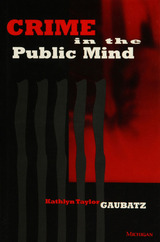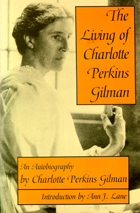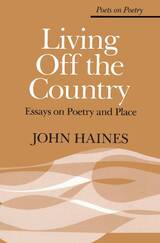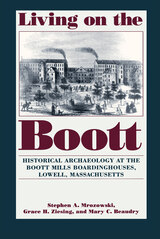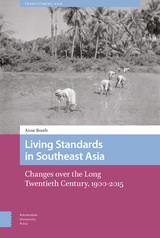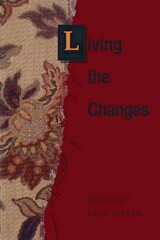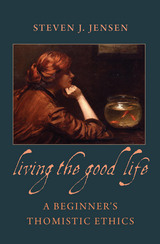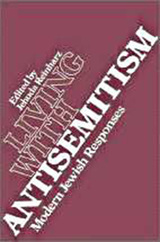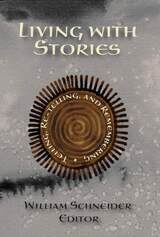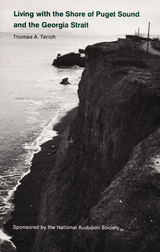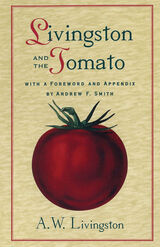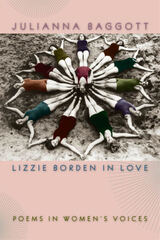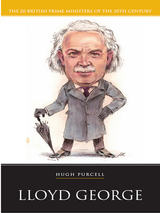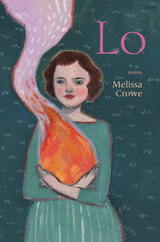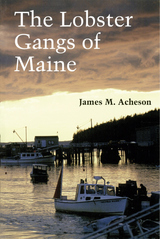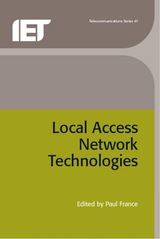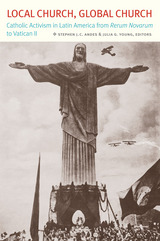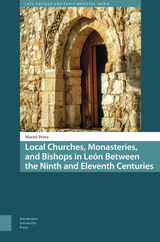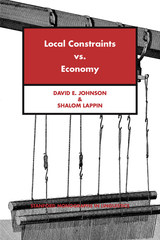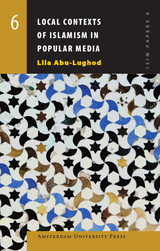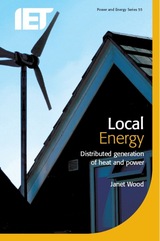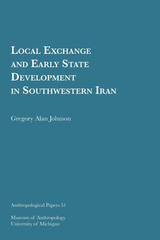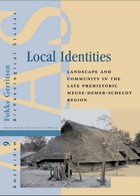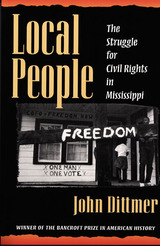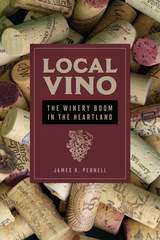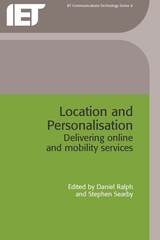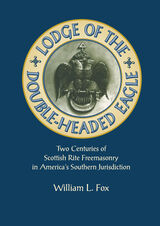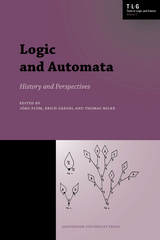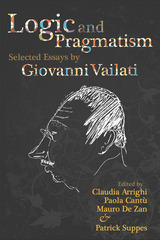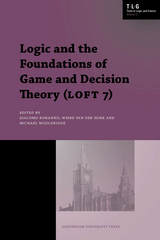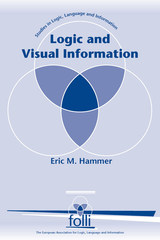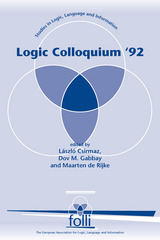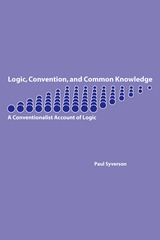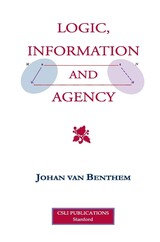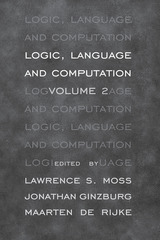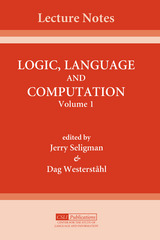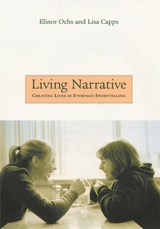 Living Narrative: Creating Lives in Everyday Storytelling
Elinor Ochs and Lisa Capps
Harvard University Press, 2002 This pathbreaking book looks at everyday storytelling as a twofold phenomenon—a response to our desire for coherence, but also to our need to probe and acknowledge the enigmatic aspects of experience. Letting us listen in on dinner-table conversation, prayer, and gossip, Elinor Ochs and Lisa Capps develop a way of understanding the seemingly contradictory nature of everyday narrative—as a genre that is not necessarily homogeneous and as an activity that is not always consistent but consistently serves our need to create selves and communities.
Focusing on the ways in which narrative is co-constructed, and on the variety of moral stances embodied in conversation, the authors draw out the instructive inconsistencies of these collaborative narratives, whose contents and ordering are subject to dispute, flux, and discovery. In an eloquent last chapter, written as Capps was waging her final battle with cancer, they turn to “unfinished narratives,” those stories that will never have a comprehensible end. With a hybrid perspective—part humanities, part social science—their book captures these complexities and fathoms the intricate and potent narratives that live within and among us.
 Living New World Monkeys (Platyrrhini), Volume 1: With an Introduction to Primates
Philip Hershkovitz
University of Chicago Press, 1978 In this long-awaited work, Philip Hershkovitz provides the most thorough and comprehensive treatise ever published on New World monkeys. The volume gives a detailed account of the origin, evolution, dispersal, and behavior of platyrrhines and a systematic arrangement of all known forms, living and extinct. During an eleven-year period, Hershkovitz examined more than 3,100 museum-preserved specimens and relevant primate fossils and observed hundreds of animals in captivity and thousands in the wild state. He presents his results in an elegant and encyclopedic text, lavishly illustrated with 520 figures and 7 color plates.
Hershkovitz opens the study with a brief history and a definition, characterization, and comparison of primates as a taxonomic unit. Basing his work on nearly all known genera of living primates, the author deals with New World monkeys from comparative anatomical and evolutionary points of view. He examines display characters, pelage, the evolution of color patterns, primate locomotion, cranial and dental morphology, and the central nervous system.
The final and most extensive part of the volume is devoted to the taxonomy and biology of the family Callitrichidae, comprising marmosets and tamarins, and the family Callimiconidae, represented by the callimico alone. Hershkovitz concludes with an exhaustive bibliography of more than 2,500 published works and a gazetteer of essential geographic data.
 The Living Ocean: Understanding and Protecting Marine Biodiversity
Boyce Thorne-Miller; Foreword by Sylvia Earle
Island Press, 1999 The first edition of The Living Ocean, published in 1991 by Island Press in association with Friends of the Earth, was widely praised by scientists, policymakers, instructors, and general readers as a useful and accessible introduction to the science and policy of biological diversity in marine environments. Since that time, much new research has been conducted and numerous national and international policy initiatives have been undertaken.With 1998 designated by the United Nations as the International Year of the Ocean, this new, revised and expanded, edition is a welcome and much-needed addition to the literature.This edition brings the volume up-to-date, and re-establishes it as an essential primer for anyone wishing to gain an understanding of marine biodiversity and how it can be protected. It provides an overview of basic concepts and principles and a review of relevant policy issues and existing instruments. The author:defines biological diversity and discusses the importance of threats to marine biodiversity reviews the current status of scientific knowledge describes the major coastal and oceanic ecosystem types and addresses the major threats in each presents a general discussion of the ways in which government and the public can protect marine biological diversity provides specific examples of national and international policies, legal instruments, programs, and institutions addresses how social, economic, political, and ethical considerations affect decisions to conserve marine biological diversity considers the involvement of citizens in developing ocean policy The book also includes a useful glossary that provides information about basic biological concepts, and a comprehensive bibliography. Throughout, the author emphasizes the relationship of human societies and governments to the living ocean, and the need to implement programs that will protect ecosystems and species.
The Living of Charlotte Perkins Gilman: An Autobiography
Charlotte Perkins Gilman
University of Wisconsin Press, 1991 Charlotte Perkins Gilman (1869-1935) was one of the leading intellectuals of the American women's movement in the first two decades of the twentieth century. Moving beyond the struggle for suffrage, Gilman confronted an even larger problem—economic and social discrimination against women. Her book, Women and Economics, published in 1898, was repeatedly printed and translated into seven languages. She was a tireless traveler, lecturer, and writer and is perhaps best known for her dramatic short story, "The Yellow Wallpaper." Gilman's autobiography gives us access to the life of a remarkable and courageous woman.
Originally published in 1935, soon after Gilman's death, The Living of Charlotte Perkins Gilman has been out of print for several years. This edition includes a new introduction by Gilman's noted biographer, Anne J. Lane.
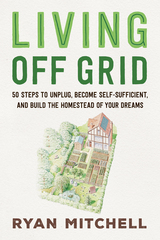 Living Off Grid: 50 Steps to Unplug, Become Self-Sufficient, and Build the Homestead of Your Dreams
Ryan Mitchell
Island Press, 2025 Ryan Mitchell never thought he would go off the grid. Yet this self-described desk-jockey with no carpentry skills today lives on 11 acres in a house he designed and powers with solar, gets his water from a well, has a composting toilet and septic system, eats from his garden, raises baby quail, and runs his own business. His bills are a fraction of what they were when he paid rent and utilities, and he has infinitely more free time to pursue the things he loves. Life is far from perfect: there are times when the generator stalls or the water pump quits. But he has independence, self-sufficiency, and the support of a like-minded community.
If you’ve ever dreamed of this lifestyle, Living Off Grid will help you navigate the most important decisions you’ll need to make to create the reality that’s right for you. Whether you’re an urbanite who just wants to save some money (and carbon) with small solar arrays or you’re ready to purchase land or you’ve already taken the plunge and want a better way to deal with your wastewater, Ryan has done the hard work to set you up for success. He will also help you steer clear of common pitfalls, including purchasing land in a flood zone, underestimating your water needs, trying to rely solely on wind power, or simply biting off more than you can chew—or afford. Finally, he will explore little-discussed topics such as living off grid when you have a “regular” job and aging in place.
As someone who has done it himself and guided countless others on their journeys to unplug, Ryan knows that going off the beaten path can be daunting. But with the right knowledge, you can choose the road less traveled – and it could make all the difference.
Living Off the Country: Essays on Poetry and Place
John Haines
University of Michigan Press, 1981 When he was a homesteader in Alaska, poet John Haines moved away from language and institutions to an older and simpler existence. In solitude, listening to his own voice, the events of his life reached into the past and the future.
We live on the surface, he discovered. It is the land that makes people. If a poet will see, will feel, will interpret his place and then relate that experience to what he knows of the world at large, he will have a life in imagination, a vitality beyond appearances.
John Haines is author of At the End of Summer: Poems 1948-1954; Fables and Distances: New and Selected Essays; and The Owl in the Mask of the Dreamer. He received the Lenore Marshall Poetry Prize in 1991.
 Living Off the Pacific Ocean Floor: Stories of a Commercial Fisherman
George Moskovita
Oregon State University Press, 2015 In this authentic account of a seafaring life, Captain George Moskovita offers a highly personal and often humorous look at the career of a commercial fisherman. George Moskovita was sixteen when he graduated from high school in Bellingham, Washington, and went to sea. Fishing would take him crabbing off Alaska, seining for sardines off California and for tuna off Mexico, and catching soupfin sharks for their livers (a vital source of Vitamin A during World War II). He came to Astoria, Oregon, in 1939, where he was a pioneer of the Oregon ocean perch fishery.
In a career that spanned over 60 years, George Moskovita met with many maritime adventures, recounted for the reader in a clear, direct, and unsentimental style. He saw the fishery he had helped build devastated by foreign factory processing ships. He bought, repaired, traded, and sank more boats than most fishermen would work on in a lifetime. Along the way, he managed to raise four daughters with his wife, June. The name of one of his last boats, the Four Daughters, reflects the central importance of family life to a man who was often at sea. Moskovita’s memoir provides a unique glimpse of Pacific maritime life in the 20th century, small-town coastal life after World War II, and the early days of fishery development in Oregon.
With an introduction and textual notes by Carmel Finley, an historian of science, and Mary Hunsicker, an aquatic and fisheries scientist, this book will be invaluable to fishery students and professionals interested in the biology, ecology, and history of oceans and commercial fishing. It will also have broad appeal to readers of Oregon history and maritime adventure, and anyone else who has ever stood at the western edge of the continent and wondered what life was like at sea.
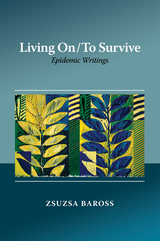 Living On / To Survive: Epidemic Writings
Zsuzsa Baross
Sussex Academic Press, 2022 Those familiar with the work of Derrida will recognize the double term in the title as variations, in translation, of Derridas untimely essay Survivre. "To survive"—in this infinite mood and indefinite form that sets no limit to number, person, or time—is at once the theme and the undercurrent that runs through the diverse texts gathered together in this volume. "To survive," for such is our exceptional situation, also animates the act of writing: to shelter a personal existence and actualize the promise writing holds for saving something more than (bare) life. Derrida termed it "sur-vie" or "living on." The texts date from different times and phases of the mutating epidemic. In chronological order, they register the progressive evolution and complication of the sense of this "novel" crisis. The first is contemporaneous with the immediate virus outbreak and with Agamben's provocative dismissal of the "health" crisis.
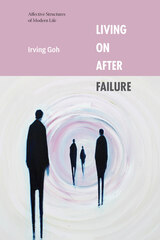 Living On After Failure: Affective Structures of Modern Life
Irving Goh
Duke University Press, 2025 In Living On After Failure, Irving Goh dwells with failure and all of its negative affects. Goh does not seek a theorization of failure as something to overcome or turn into a recuperative philosophy or progress narrative. Rather, he engages with the ontological condition of failure as a process of staying with the impasse that failure brings. Drawing on the thought of Berlant, Derrida, Foucault, and Nancy, Goh examines works by contemporary writers like Ottessa Moshfegh, Rachel Cusk, Édouard Levé, Yiyun Li, and Kate Zambreno. He guides readers through stages of reckoning with failure as an immersive impasse: flopping, drifting itself, a dark care of the self, melodrama, and postscripting. By unsettling the failure/success binary, Goh provides those who cannot shake off their sense of failure, or who refuse the narratives of progress or success and their ideologies of grit and resilience, with discursive and affective spaces in which to attend to their desire to be attached to their failures.
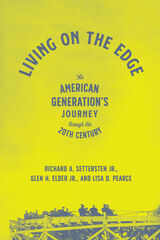 Living on the Edge: An American Generation’s Journey through the Twentieth Century
Richard A. Settersten Jr., Glen H. Elder Jr., and Lisa D. Pearce
University of Chicago Press, 2021 History carves its imprint on human lives for generations after. When we think of the radical changes that transformed America during the twentieth century, our minds most often snap to the fifties and sixties: the Civil Rights Movement, changing gender roles, and new economic opportunities all point to a decisive turning point. But these were not the only changes that shaped our world, and in Living on the Edge, we learn that rapid social change and uncertainty also defined the lives of Americans born at the turn of the twentieth century. The changes they cultivated and witnessed affect our world as we understand it today.
Drawing from the iconic longitudinal Berkeley Guidance Study, Living on the Edge reveals the hopes, struggles, and daily lives of the 1900 generation. Most surprising is how relevant and relatable the lives and experiences of this generation are today, despite the gap of a century. From the reorganization of marriage and family roles and relationships to strategies for adapting to a dramatically changing economy, the challenges faced by this earlier generation echo our own time. Living on the Edge offers an intimate glimpse into not just the history of our country, but the feelings, dreams, and fears of a generation remarkably kindred to the present day.
 Living on the Edge in Suburbia: From Welfare to Workfare
Terese Lawinski
Vanderbilt University Press, 2010 Westchester County, New York, is thought of as suburban and affluent, but welfare reform hit hard here, too. The radical 1996 legislation created a temporary assistance program for poor families with harsher provisions than the program it replaced. It mandates "workfare," meaning that recipients must work as a condition of benefit receipt. But the work parents obtain in the so-called flexible labor market--jobs like home health care aide--are inflexible for them. One sick child can mean the loss of a job.
In contrast to accounts of inner-city poor families, these suburban parents' stories reveal a broad array of precipitating circumstances leading to their downward economic slide and to welfare. They also provide insight into the bureaucratic machinations, rigid rules and mandates, disciplining techniques, and catch-22s that create an insecure environment for many families today. Many of these stories show that the need for welfare over time extends well beyond the federal government's five-year lifetime limit on welfare. Policies emphasizing work first also restrict access to education and further hinder parents' ability to gain a toehold in the economy.
In this tale of people and policies, the author shows how the interests of governments are often at variance with those of vulnerable families, and how some government actions place more pressure on lives replete with stress.
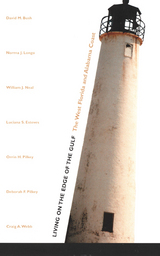 Living on the Edge of the Gulf: The West Florida and Alabama Coast
David M. Bush, Norma J. Longo, William J. Neal, Luciana S. Esteves, Orrin H. Pilkey, Deborah F. Pilkey, Craig A. Webb
Duke University Press, 2001 The Gulf coast of Florida and Alabama is a fragile combination of barrier islands, low-lying marshes, and highly erodable mainland shores. In addition to sea-level rise, winter storms, and altered sediment supplies, hurricanes frequently damage or destroy the human developments and infrastructures that line this coast. Indeed, a single storm can cause billions of dollars in losses. Memories of such hurricanes as Camille, Frederic, Opal, and Andrew cause great concern for residents and property owners alike; events of equal magnitude are always just beyond the horizon and the uninformed have much to lose. The authors of Living on the Edge of the Gulf seek to counteract potential loss by providing an illustrated introduction to coastal processes, a history of hazards for the region, and risk-reduction guidance in the form of site evaluations, community mitigation techniques, and storm-resistant construction practices. Risk maps that focus on individual coastal beaches are designed to assist property owners, community planners, and officials in prudent decision making, while a review of coastal regulations helps owners to understand and navigate various permit requirements. This latest book in the Living with the Shore series replaces the earlier guide Living with the West Florida Shore and supplements the Alabama portion of Living with the Alabama/Mississippi Shore.
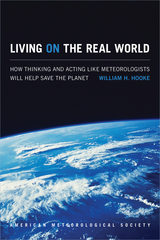 Living on the Real World: How Thinking and Acting like Meteorologists Will Help Save the Planet
William H. Hooke
American Meteorological Society, 2014 Every day meteorologists sift through a deluge of information to make predictions that help us navigate our daily lives. Instead of being overwhelmed by the data and possibilities, they focus on small bits of information while using frequent collaboration to make decisions. With climate change a reality, William H. Hooke suggests we look to meteorologists as a model for how we can solve the twenty-first century’s most urgent environmental problems.
Living on the Real World explains why we should be approaching environmental issues collaboratively, each taking on a challenging aspect and finding solutions to small parts of the larger problem. It outlines current crises brought about by climate change and extreme weather, including effects on food, water, and energy, and then explores the ways we can tackle these problems together. Blending science with a philosophical approach, Hooke offers a clear-eyed analysis as well as an inspiring call to action. Everyone from scientists to politicians, educators to journalists, and businesses large and small, can—and must—participate in order to save the planet for generations to come.
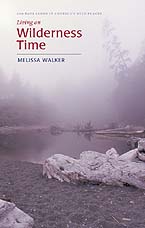 Living on Wilderness Time
Melissa Walker
University of Virginia Press, 2002 Soon after her fiftieth birthday, Melissa Walker set out on a journey that many women of her generation have mapped only in their dreams. Having spent her adult life raising children and climbing the academic ladder, Walker decided to put some of the environmental theories she'd taught into practice. Leaving her suburban life, she ventured into the wilderness.
Like many American chroniclers before her who have surrendered to the aimless pleasures of the road, Walker had no geographical destination in mind, but she did have two definite goals--one personal, one political--for her journey. She was looking for the peace and solitude of the backcountry, certainly, but she also wanted to learn the dynamics of preserving wild places and to devote herself to that cause.
Walker took off on three extended solitary trips over the next two years, establishing a way of life for herself that continues to this day. In the Sky Islands of southern Arizona, on the banks of the Popo Agie River and the Wind River Mountains in Wyoming, in Yellowstone, Grand Teton, Rocky Mountain, and Olympic National Park, in Gila and Glacier Peak Wilderness, she encountered the hazards of wild animals and extreme weather, and she began to reassess what parts of her life she could control. Her belief in the primacy of individual achievement changed as she confronted the hidden structures of life. And her understanding of her environment broadened when in addition to grizzly bears, bighorn sheep, and mountain lions, she also met ranchers, loggers, cowboys, and outfitters whose livelihoods depend on activities that may threaten wilderness.
Living on Wilderness Time is a book for those who have visited wild places and want to return and for others whose overcommitted urban lives make them long for land where time is measured differently and human beings are scarce. Above all it is a call to join those, like Aldo Leopold, who see wilderness as vital to the human community.
--------------------------------------------------------------------------------
"A compelling travel narrative and meditation on the value of wilderness in the spirit of Rick Bass and Gretel Ehrlich. In strong, clear prose, Melissa Walker weaves descriptions of her experience in wilderness areas with observations on the political and personal meaning of wilderness and her own firsthand education about its value for personal growth."
--Jennifer Ackerman, author of Chance in the House of Fate: A Natural History of Heredity and Notes from the Shore
"Here is a fascinating and tender odyssey of a woman who decides, in her early fifties, to reexamine her life. In grappling with the complexities of our world, she sets out to discover life at its most basic and untrammeled, and falls in love with wildness. What she learns is a lesson for us all. This adventure-filled book is a love song to wilderness, and a travel guide to what's important. Walker's narrative is clean and dead-level sincere: we know this is a writer we can trust."
--Janisse Ray, author of Ecology of a Cracker Childhood
--------------------------------------------------------------------------------
Melissa Walker is vice president of National Wilderness Watch, chair of the Georgia chapter of Wilderness Watch, serves on the Southern Appalachian Council of the Wilderness Society, and is the author of Reading the Environment and Down from the Mountaintop. She has been Professor of English at the University of New Orleans and Mercer University and a fellow of Women's Studies at Emory University. Walker lives with her husband in Decatur, Georgia.
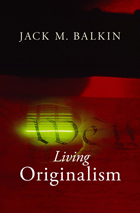 Living Originalism
Jack M. Balkin
Harvard University Press, 2014 Originalism and living constitutionalism, so often understood to be diametrically opposing views of our nation’s founding document, are not in conflict—they are compatible. So argues Jack Balkin, one of the leading constitutional scholars of our time, in this long-awaited book. Step by step, Balkin gracefully outlines a constitutional theory that demonstrates why modern conceptions of civil rights and civil liberties, and the modern state’s protection of national security, health, safety, and the environment, are fully consistent with the Constitution’s original meaning. And he shows how both liberals and conservatives, working through political parties and social movements, play important roles in the ongoing project of constitutional construction.
By making firm rules but also deliberately incorporating flexible standards and abstract principles, the Constitution’s authors constructed a framework for politics on which later generations could build. Americans have taken up this task, producing institutions and doctrines that flesh out the Constitution’s text and principles. Balkin’s analysis offers a way past the angry polemics of our era, a deepened understanding of the Constitution that is at once originalist and living constitutionalist, and a vision that allows all Americans to reclaim the Constitution as their own.
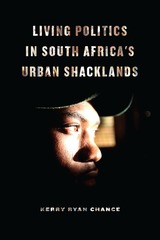 Living Politics in South Africa’s Urban Shacklands
Kerry Ryan Chance
University of Chicago Press, 2018 While much has been written on post-apartheid social movements in South Africa, most discussion centers on ideal forms of movements, disregarding the reality and agency of the activists themselves. In Living Politics, Kerry Ryan Chance radically flips the conversation by focusing on the actual language and humanity of post-apartheid activists rather than the external, idealistic commentary of old.
Tracking everyday practices and interactions between poor residents and state agents in South Africa’s shack settlements, Chance investigates the rise of nationwide protests since the late 1990s. Based on ethnography in Durban, Cape Town, and Johannesburg, the book analyzes the criminalization of popular forms of politics that were foundational to South Africa’s celebrated democratic transition. Chance argues that we can best grasp the increasingly murky line between “the criminal” and “the political” with a “politics of living” that casts slum and state in opposition to one another. Living Politics shows us how legitimate domains of politics are redefined, how state sovereignty is forcibly enacted, and how the production of new citizen identities crystallize at the intersections of race, gender, and class.
 The Living Presidency: An Originalist Argument against Its Ever-Expanding Powers
Saikrishna Bangalore Prakash
Harvard University Press, 2020 A constitutional originalist sounds the alarm over the presidency’s ever-expanding powers, ascribing them unexpectedly to the liberal embrace of a living Constitution.
Liberal scholars and politicians routinely denounce the imperial presidency—a self-aggrandizing executive that has progressively sidelined Congress. Yet the same people invariably extol the virtues of a living Constitution, whose meaning adapts with the times. Saikrishna Bangalore Prakash argues that these stances are fundamentally incompatible. A constitution prone to informal amendment systematically favors the executive and ensures that there are no enduring constraints on executive power. In this careful study, Prakash contends that an originalist interpretation of the Constitution can rein in the “living presidency” legitimated by the living Constitution.
No one who reads the Constitution would conclude that presidents may declare war, legislate by fiat, and make treaties without the Senate. Yet presidents do all these things. They get away with it, Prakash argues, because Congress, the courts, and the public routinely excuse these violations. With the passage of time, these transgressions are treated as informal constitutional amendments. The result is an executive increasingly liberated from the Constitution. The solution is originalism. Though often associated with conservative goals, originalism in Prakash’s argument should appeal to Republicans and Democrats alike, as almost all Americans decry the presidency’s stunning expansion. The Living Presidency proposes a baker’s dozen of reforms, all of which could be enacted if only Congress asserted its lawful authority.
 Living Quixote: Performative Activism in Contemporary Brazil and the Americas
Rogelio Minana
Vanderbilt University Press The 400th anniversaries of Don Quixote in 2005 and 2015 sparked worldwide celebrations that brought to the fore its ongoing cultural and ideological relevance. Living Quixote examines contemporary appropriations of Miguel de Cervantes's masterpiece in political and social justice movements in the Americas, particularly in Brazil.
In this book, Cervantes scholar Rogelio Miñana examines long-term, Quixote-inspired activist efforts at the ground level. Through what the author terms performative activism, Quixote-inspired theater companies and nongovernmental organizations deploy a model for rewriting and enacting new social roles for underprivileged youth. Unique in its transatlantic, cross-historical, and community-based approach, Living Quixote offers both a new reading of Don Quixote and an applied model for cultural activism—a model based, in ways reminiscent of Paulo Freire, on the transformative potential of performance, literature, and art.
 Living Rome: Space, Identity, and the Politics of Belonging
Edited by Isabella Clough Marinaro and Will Haynes
Lever Press, 2026 Living Rome: Space, Identity, and the Politics of Belonging looks beyond the romanticized image of Rome, towards a kaleidoscopic view of the city shaped by inequalities, socio-political challenges, and acts of resistance and solidarity. In the wake of urban developments related to migration, housing shortages, COVID-19, crime, and other social changes, this volume offers a grounded approach, mapping the contemporary realities of Italy’s capital from a variety of methodological standpoints. Contributors argue that the unseen fringes, both geographically peripheral and those embedded within the very heart of Rome, are crucial for understanding its social dynamics. These ‘hidden’ geographies foster vibrant communities, challenge ideas of home and belonging, and act as key sites of creativity, resistance and everyday life.
Bringing together urban sociologists, anthropologists, geographers, demographers, criminologists, decolonizing and feminist scholars, this study contributes to a growing body of research on the city and its social movements, aiming to inform policy and contribute to a more just and sustainable Rome. Using a variety of methods, from quantitative cartography and policy analysis to (auto)ethnography and creative methodologies, this volume speaks well beyond Rome, to conversations about cities worldwide.
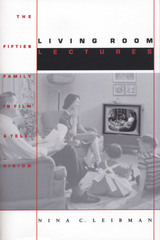 Living Room Lectures: The Fifties Family in Film and Television
By Nina C. Leibman
University of Texas Press, 1995 With a breadwinner dad, a homemaker mom, and squeaky-clean kids, the 1950s television family has achieved near mythological status as a model of what real families "ought" to be. Yet feature films of the period often portrayed families in trouble, with parents and children in conflict over appropriate values and behaviors. Why were these representations of family apparently so far apart? Nina Leibman analyzes many feature films and dozens of TV situation comedy episodes from 1954 to 1963 to find surprising commonalities in their representations of the family. Redefining the comedy as a family melodrama, she compares film and television depictions of familial power, gender roles, and economic attitudes. Leibman's explorations reveal how themes of guilt, deceit, manipulation, anxiety, and disfunctionality that obviously characterize such movies as Rebel without a Cause,A Summer Place, and Splendor in the Grass also crop up in such TV shows as The Adventures of Ozzie and Harriet,Father Knows Best,Leave It to Beaver,The Donna Reed Show, and My Three Sons. Drawing on interviews with many of the participants of these productions, archival documents, and trade journals, Leibman sets her discussion within a larger institutional history of 1950s film and television. Her discussions shed new light not only on the reasons for both media's near obsession with family life but also on changes in American society as it reconfigured itself in the postwar era.
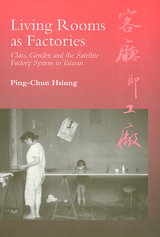 Living Rooms as Factories: Class, Gender, and the Satelite Factory System in Taiwan
Ping-Chun Hsiung
Temple University Press, 1996 In Taiwan, small-scale subcontracting factories of thirty employees or less make items for export, like the wooden jewelry boxes that Ping-Chun Hsiung made when she worked in six such factories. These factories are found in rice fields and urban areas, front yards and living rooms, mostly employing married women in line with the government slogan that promotes work in the home—"Living Rooms as Factories." Hsiung studies the experiences of the married women who work in this satellite system of factories, and how their work and family lives have contributed to Taiwan's 9.1 percent GNP growth over the last three decades, the "economic miracle." This vivid portrayal of the dual lives of these women as wives, mothers, daughters-in-law and as manufacturing workers also provides sophisticated analyses of the links between class and gender stratification, family dynamics, state policy, and global restructuring within the process of industrialization. Hsiung uses ethnographic data to illustrate how, in this system of intersecting capitalist logic and patriarchal practices, some Taiwanese women experience upward mobility by marrying into the owners' family, while others remain home and wage workers. Although women in both groups acknowledge gender inequality, this commonality does not bridge divergent class affiliations. Along with a detailed account of the oppressive labor practices, this book reveals how workers employ clandestine tactics to defy the owners' claims on their labor.
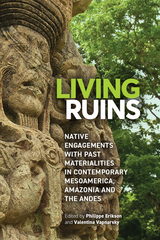 Living Ruins: Native Engagements with Past Materialities in Contemporary Mesoamerica, Amazonia, and the Andes
Philippe Erikson
University Press of Colorado, 2022 Ruins and remnants of the past are endowed with life, rather than mere relics handed down from previous generations. Living Ruins explores some of the ways Indigenous people relate to the material remains of human activity and provides an informed and critical stance that nuances and contests institutionalized patrimonialization discourse on vestiges of the past in present landscapes.
Ten case studies from the Maya region, Amazonia, and the Andes detail and contextualize narratives, rituals, and a range of practices and attitudes toward different kinds of vestiges. The chapters engage with recently debated issues such as regimes of historicity and knowledge, cultural landscapes, conceptions of personhood and ancestrality, artifacts, and materiality. They focus on Indigenous perspectives rather than mainstream narratives such as those mediated by UNESCO, Hollywood, travel agents, and sometimes even academics. The contributions provide critical analyses alongside a multifaceted account of how people relate to the place/time nexus, expanding our understanding of different ontological conceptualizations of the past and their significance in the present.
Living Ruins adds to the lively body of work on the invention of tradition, Indigenous claims on their lands and history, “retrospective ethnogenesis,” and neo-Indianism in a world where tourism, NGOs, and Western essentialism are changing Indigenous attitudes and representations. This book is significant to anyone interested in cultural heritage studies, Amerindian spirituality, and Indigenous engagement with archaeological sites in Latin America.
Contributors: Cedric Becquey, Laurence Charlier Zeineddine, Marie Chosson, Pablo Cruz, Philippe Erikson, Antoinette Molinié, Fernando Santos-Granero, Emilie Stoll, Valentina Vapnarsky, Pirjo Kristiina Virtanen
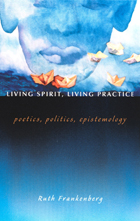 Living Spirit, Living Practice: Poetics, Politics, Epistemology
Ruth Frankenberg
Duke University Press, 2004 In Living Spirit, Living Practice, the well-known cultural studies scholar Ruth Frankenberg turns her attention to the remarkably diverse nature of religious practice within the United States today. Frankenberg provides a nuanced consideration of the making and living of religious lives as well as the mystery and poetry of spiritual practice. She undertakes a subtle sociocultural analysis of compelling in-depth interviews with fifty women and men, diverse in race, ethnicity, national origin, class, age, and sexuality. Tracing the complex interweaving of sacred and secular languages in the way interviewees make sense of the everyday and the extraordinary, Frankenberg explores modes of communication with the Divine, the role of the body, the importance of geography, work for progressive social change, and the relation of sex to spirituality. Christians, Jews, Muslims, Buddhists, Hindus, and other practitioners come together here, speaking in terms both familiar and surprising. Whether discussing an Episcopalian deacon, a former Zen Buddhist who is now a rabbi, a Chicano monastic, an immigrant Muslim woman, a Japanese American Tibetan Buddhist, or a gay African American practicing in the Hindu tradition, Frankenberg illuminates the most intimate, local, and singular aspects of individual lives while situating them within the broad, dynamic canvas of the U.S. religious landscape.
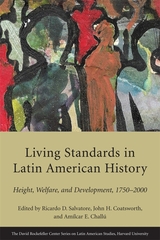 Living Standards in Latin American History: Height, Welfare, and Development, 1750–2000
Ricardo D. Salvatore
Harvard University Press, 2010 Latin America’s widespread poverty and multi-dimensioned inequalities have long perplexed and provoked observers. Until recently, economic historians could not contribute much to the discussion of living standards and inequality, because quantitative evidence for earlier eras was lacking. Since the 1990s, historians, economists, and other social scientists have sought to document and analyze the historical roots of Latin America’s relatively high inequality and persistent poverty.
This edited volume with eight compelling chapters by preeminent economists and social scientists brings together some of the most important results of this work: scholarly efforts to measure and explain changes in Latin American living standards as far back as the colonial era. The recent work has focused on physical welfare, often referred to as “biological” well-being. Much of it uses novel measures, such as data on the heights or stature of children and adults (a measure of net nutrition) and the Human Development Index (HDI). Other work brings to the discussion new and more reliable measurements that can be used for comparing countries, often with unexpected and startling results.
Living Standards in Southeast Asia: Changes over the Long Twentieth Century, 1900-2015
Anne Booth
Amsterdam University Press, 2020 Living Standards in Southeast Asia: Changes over the Long Twentieth Century, 1900-2015 examines changes in living standards across the ten countries of Southeast Asia (Indonesia, Malaysia, Singapore, Philippines, Thailand, Brunei, Myanmar, Vietnam, Cambodia and Laos) from the early years of the 20th century to the early 21st century. It covers both the last decades of the colonial period, the transition to independence and the decades from 1960 to the 2010s. The study uses a range of monetary and non-monetary indicators to assess how living standards have changed over time. It examines the outcomes in the context of debates about economic growth, inequality and poverty alleviation which began in the 1960s and 1970s, and continue to the present.
Living the Changes
Joan Turner
University of Manitoba Press, 1990 Living the Changes explores the nature and extent of women's changing realities. The contributors include writers, artists, academics, street kids and social workers, and range in age from nine to seventy-three. Their topics reflect the diversity and complexity of the concerns of contemporary women – birthing and aging, body image, culture, drugs, violence, sexual abuse, prostitution, reproductive technology, and spirituality.
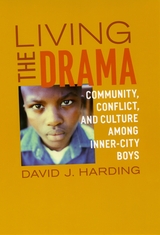 Living the Drama: Community, Conflict, and Culture among Inner-City Boys
David J. Harding
University of Chicago Press, 2010 For the middle class and the affluent, local ties seem to matter less and less these days, but in the inner city, your life can be irrevocably shaped by what block you live on. Living the Drama takes a close look at three neighborhoods in Boston to analyze the many complex ways that the context of community shapes the daily lives and long-term prospects of inner-city boys.
David J. Harding studied sixty adolescent boys growing up in two very poor areas and one working-class area. In the first two, violence and neighborhood identification are inextricably linked as rivalries divide the city into spaces safe, neutral, or dangerous. Consequently, Harding discovers, social relationships are determined by residential space. Older boys who can navigate the dangers of the streets serve as role models, and friendships between peers grow out of mutual protection. The impact of community goes beyond the realm of same-sex bonding, Harding reveals, affecting the boys’ experiences in school and with the opposite sex. A unique glimpse into the world of urban adolescent boys, Living the Drama paints a detailed, insightful portrait of life in the inner city.
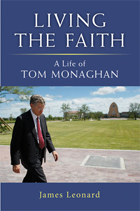 Living the Faith: A Life of Tom Monaghan
James Leonard
University of Michigan Press, 2012 Who is Tom Monaghan? Is he the four-year-old kid whose father died on Christmas Eve and whose mother sent him to an orphanage and then a juvenile detention home? Is he the entrepreneurial genius who built Domino's Pizza from a hole-in-the-wall pizzeria in Michigan into an American brand as world-conquering as Ford or Coke? Is he the religious visionary who sold Domino's for $1 billion to create an orthodox Catholic university, law school, and special interest law firm with the goal of transforming America to reflect his conservative values? He's all that and more. With extensive interviews with friends and enemies plus unprecedented access to the man himself, but wholly without his authorization, Living the Faith illuminates Tom Monaghan, the man and the myth. Living the Faithis the much-needed, definitive biography of one of the most fascinating and controversial figures in the realms of American business and religion. Through eighteen hard-boiled chapters, journalist James Leonard follows Monaghan on his path from a heartbroken kid who climbed into his father's coffin to the business tycoon who purchased the world-champion Detroit Tigers and spent a fortune on his own air force, navy, and island to the religious visionary who founded a university to make saints and a public interest law firm to overturn evolution. A sympathetic but critical perspective of the man and his works, this book is for believers, nonbelievers, and agnostics; for conservatives, liberals, and independents; for the rich, the poor, and the shrinking middle class. Mainly, however, this book is for those who want the facts about Tom Monaghan—and the truth about the effect religion had on one man and the effect that man had on the world.
Living the Good Life
Steven J. Jensen
Catholic University of America Press, 2013 Living the Good Life presents a brief introduction to virtue and vice, self-control and weakness, misery and happiness.
 Living the High Life in Minsk: Russian Energy Rents, Domestic Populism and Belarus' Impending Crisis
Margarita M. Balmaceda
Central European University Press, 2014 Living the High Life in Minsk looks at the sources of stability and instability in post-Soviet authoritarian states through the case study of President Lukashenka’s firm hold on power in Belarus. In particular, it seeks to understand the role of energy relations, policies, and discourses in the maintenance of this power. The central empirical question Balmaceda seeks to answer is what has been the role of energy policies in the maintenance of Lukashenka’s power in Belarus? In particular, it analyzes the role of energy policies in the management of Lukashenka’s relationship with three constituencies crucial to his hold on power: Russian actors, the Belarusian nomenklatura, and the Belarusian electorate. In terms of foreign relations, the book focuses on the factors explaining Lukashenka’s ability to project Belarus’ power in its relationship with Russia in such a way as to compensate for its objective high level of dependency, assuring high levels of energy subsidies and rents continuing well beyond the initial worsening of the relationship in c. 2004. In terms of domestic relations, Balmaceda examines Lukashenka’s specific use of those energy rents in such a way as to assure the continuing support of both the Belarusian nomenklatura and the Belarusian electorate.
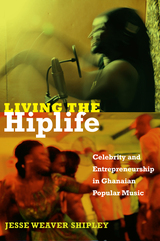 Living the Hiplife: Celebrity and Entrepreneurship in Ghanaian Popular Music
Jesse Weaver Shipley
Duke University Press, 2013 Hiplife is a popular music genre in Ghana that mixes hip-hop beatmaking and rap with highlife music, proverbial speech, and Akan storytelling. In the 1990s, young Ghanaian musicians were drawn to hip-hop's dual ethos of black masculine empowerment and capitalist success. They made their underground sound mainstream by infusing carefree bravado with traditional respectful oratory and familiar Ghanaian rhythms. Living the Hiplife is an ethnographic account of hiplife in Ghana and its diaspora, based on extensive research among artists and audiences in Accra, Ghana's capital city; New York; and London. Jesse Weaver Shipley examines the production, consumption, and circulation of hiplife music, culture, and fashion in relation to broader cultural and political shifts in neoliberalizing Ghana. Shipley shows how young hiplife musicians produce and transform different kinds of value—aesthetic, moral, linguistic, economic—using music to gain social status and wealth, and to become respectable public figures. In this entrepreneurial age, youth use celebrity as a form of currency, aligning music-making with self-making and aesthetic pleasure with business success. Registering both the globalization of electronic, digital media and the changing nature of African diasporic relations to Africa, hiplife links collective Pan-Africanist visions with individualist aspiration, highlighting the potential and limits of social mobility for African youth. The author has also directed a film entitled Living the Hiplife and with two DJs produced mixtapes that feature the music in the book available for free download.
 Living the Jubilee
Saverio Gaeta
St. Augustine's Press, 2025 Pope Francis has declared the Jubilee Year 2025 a celebration of both mercy and hope, merging his own favorite theme with John Paul II's call in 2000 for all mankind to enter the new millennium with the light of Christian hope. The motto of the Holy Year 2025 centers on the image "pilgrims of hope." Visits to sacred places––especially in Rome––is a principal expectation and much has been organized in the Eternal City to welcome visitors. Pilgrims are encouraged to rekindle their light by returning to some of the most important churches for the Christian faith, which have served as sanctuaries of worship for centuries. The way of the pilgrim is a search for God, and places that belong to shared Christian faith feature prominently in this pursuit. The only way to realize a peaceful future is to advance in the conviction that what awaits us is full of life because the God of the past and present awaits us there.
Saverio Gaeta provides a concise and insightful history of Jubilee celebrations, tracing the custom to biblical norms and following developments up to present day. Jubilees are joyous remembrances of God's consistent paternal intervention in human life, and a time to acknowledge a common orientation toward the encounter with his Son, Jesus Christ, who brings salvation and life in the Trinity.
Living the Jubilee is indispensable for the reader who wishes to embark on a journey of faith, to live as a pilgrim and not tourist in this life. Gaeta inspires everyone to partake of the Jubilee celebrations. He also provides everything a traveler to Rome needs to know to make this trip––public transportation routes, event schedules, how one acquires the Vatican-issued pilgrim card and tickets needed to attend many of these events, plus much more. Even if readers do not make the voyage to Rome, Gaeta's account of the Jubilee in the Catholic Church is a wondrous display of thousands of years of tradition and history that has never lost a sense of joy and gratitude for the God who remains among us. It is a remarkable keepsake and helpful even for Jubilee celebrations in parishes and local communities.
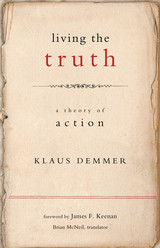 Living the Truth: A Theory of Action
Klaus Demmer. Foreword byJames F. Keenan. Translated by Brian McNeil
Georgetown University Press, 2010 How is moral theology related to pastoral theology? In this first English translation of Living the Truth, Klaus Demmer answers this question by offering a complete theory of action. Its crucial element is truthfulness, which Demmer claims is a basic attitude that must be translated concretely into our individual decisions. Demmer demonstrates that the demand for truthfulness offers a critical corrective to the usual praxis whereby ethical norms are formulated. This has significant consequences for every area of ethical directives, including questions about celibacy and partnerships. Demmer moves away from the act-centered morality that dominates the neo-Scholastic manuals of moral theology. His concern is to show how our actions embody and carry out a more original anthropological project. Not only does this anthropological project condition our insights into goods and values, it provides the criteria by which our actions are judged morally. This book will be welcomed by all who are looking for ethical norms, and by all whose task it is to formulate such norms.
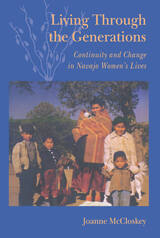 Living Through the Generations: Continuity and Change in Navajo Women’s Lives
Joanne McCloskey
University of Arizona Press, 2007 Navajo women’s lives reflect the numerous historical changes that have transformed “the Navajo way.” At the same time, in their behavior, beliefs, and values, women preserve the legacy of Navajo culture passed down through the generations. By comparing and contrasting three generations of Navajo women—grandmothers, mid-life mothers, and young mothers—similarities and differences emerge in patterns of education, work, family life, and childbearing. Women’s roles as mothers and grandmothers are central to their respected position in Navajo society. Mothers bestow membership in matrilineal clans at birth and follow the example of the beloved deity Changing Woman. As guardians of cultural traditions, grandmothers actively plan and participate in ceremonies such as the Kinaaldá, the puberty ceremony, for their granddaughters.
Drawing on ethnographic interviews with 77 women in Crownpoint, New Mexico, and surrounding chapters in the Eastern Navajo Agency, Joanne McCloskey examines the cultural traditions evident in Navajo women’s lives. Navajo women balance the demands of Western society with the desire to preserve Navajo culture for themselves and their families.
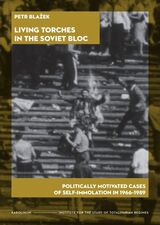 Living Torches in the Soviet Bloc: Politically Motivated Cases of Self-Immolation, 1966–1989
Petr Blažek
Karolinum Press, 2025 Explores cases of self-immolation as political protest against Communist occupation in the Soviet Bloc.
Living Torches in the Soviet Bloc presents the lives of those who chose self-immolation as a radical form of protest against the political oppression of Communist regimes in the Soviet Bloc between 1966–1989. While more than fifty such cases were identified during the relevant period, Petr Blažek focuses here on the twenty-one cases in which at least partial political motivation is apparent from historical sources.
Many of the cases of the “living torches” were a radical response to the August 1968 occupation of Czechoslovakia by the armies of five Warsaw Pact member states and the suppression of the Prague Spring. After January 1969, the self-immolation of Jan Palach evoked a large wave of followers not only in Czechoslovakia, but also abroad, and greatly influenced other cases of “living torches” which continued to appear in the Soviet Bloc until the end of the 1980s.
Although the conditions in the Soviet Bloc states were sometimes fundamentally different, these cases of self-immolation across states share a common disapproval of the totalitarian form of rule. They were often drastic responses from members of occupied nations, most of whom were Czechs, Lithuanians, Ukrainians, and Poles, who rejected the enforced Communist regime and Soviet military presence. Some decided to sacrifice their lives to wake others from indifference and resignation. Even several decades later, their shocking acts not only provoke, but also lead us to reflect on fundamental questions of human life.
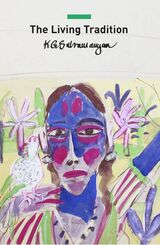 The Living Tradition: Perspectives on Modern Indian Art
K. G. Subramanyan
Seagull Books, 2024 An engaging exploration of the quest for individuality within the rich tapestry of artistic traditions, by one of India’s best-known artists.
“The fulfillment of a modern Indian artist's wish to be part of a living tradition, i.e. to be individual and innovative, without being an outsider in his own culture, will not come of itself, it calls for concerted effort.”
In Living Tradition, a critical study of modern Indian art as it has evolved through continuous interaction with several traditions—foreign and indigenous—K. G. Subramanyan, one of India's most celebrated artists, offers a theoretical groundwork for that “concerted effort.” In the course of his study, he explores the distinctions between Indian and European traditions, the continuities in India's folk traditions, and the attempts of several thinkers and artists to identify an Indian artistic tradition or to deny it altogether in a quest for personal expression or universality. With over seventy-five illustrations in color complementing Subramanyan's thought-provoking essay, Living Tradition provides readers with a visually engaging exploration of the vibrant tapestry of Indian art.
Subramanyan played a pivotal role in shaping India’s artistic identity after Independence. Mani-da, as he was fondly called, seamlessly blended elements of modernism with folk expression in his works, spanning paintings, murals, sculptures, prints, set designs, and toys. Beyond his visual artistry, his writings have laid a solid foundation for understanding the demands of art on the individual. In the year of his centenary, Seagull is proud to publish his writings in special new editions.
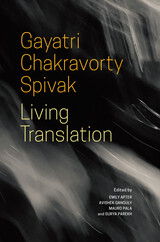 Living Translation
Gayatri Chakravorty Spivak
Seagull Books, 2022 A collection that brings together Spivak’s wide-ranging writings on translation for the first time.
Living Translation offers a powerful perspective on the work of distinguished thinker and writer Gayatri Chakravorty Spivak, revealing how, throughout her long career, she has made translation a central concern of the comparative humanities.
Starting with her landmark “Translator’s Preface” to Jacques Derrida’s Of Grammatology in 1976, and continuing with her foreword to Mahasweta Devi’s Draupadi and afterword to Devi’s Chotti MundaandHis Arrow, Spivak has tackled questions of translatability. She has been interested in interrogating the act of translation from the ground up and at the political limit. She sees at play at border checkpoints, at sites of colonial pedagogy, in acts of resistance to monolingual regimes of national language, at the borders of minor literature and schizo-analysis, in the deficits of cultural debt and linguistic expropriation, and, more generally, at theory’s edge, which is to say, where practical criticism yields to theorizing in untranslatables. This volume also addresses how Spivak’s institution-building as director of comparative literature at the University of Iowa—and in her subsequent places of employment—began at the same time. From this perspective, Spivak takes her place within a distinguished line-up of translator-theorists who have been particularly attuned to the processes of cognizing in languages, all of them alive to the coproductivity of thinking, translating, writing.
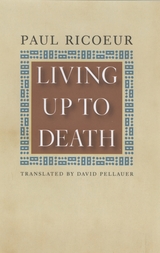 Living Up to Death
Paul Ricoeur
University of Chicago Press, 2009 When French philosopher Paul Ricoeur died in 2005, he bequeathed to the world a highly regarded, widely influential body of work which established him as one of the greatest thinkers of our time. He also left behind a number of unfinished projects that are gathered here and translated into English for the first time.
Living Up to Death consists of one major essay and nine fragments. Composed in 1996, the essay is the kernel of an unrealized book on the subject of mortality. Likely inspired by his wife’s approaching death, it examines not one’s own passing but one’s experience of others dying. Ricoeur notes that when thinking about death the imagination is paramount, since we cannot truly experience our own passing. But those we leave behind do, and Ricoeur posits that the idea of life after death originated in the awareness of our own end posthumously resonating with our survivors.
The fragments in this volume were written over the course of the last few months of Ricoeur’s life as his health failed, and they represent his very last work. They cover a range of topics, touching on biblical scholarship, the philosophy of language, and the idea of selfhood he first addressed in Oneself as Another. And while they contain numerous philosophical insights, these fragments are perhaps most significant for providing an invaluable look at Ricoeur’s mind at work.
As poignant as it is perceptive, Living Up to Death is a moving testimony to Ricoeur’s willingness to confront his own mortality with serious questions, a touching insouciance, and hope for the future.
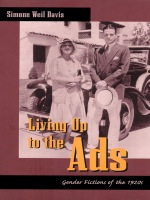 Living Up to the Ads: Gender Fictions of the 1920s
Simone Weil Davis
Duke University Press, 2000 In Living Up to the Ads Simone Weil Davis examines commodity culture’s impact on popular notions of gender and identity during the 1920s. Arguing that the newly ascendant advertising industry introduced three new metaphors for personhood—the ad man, the female consumer, and the often female advertising model or spokesperson—Davis traces the emergence of the pervasive gendering of American consumerism.
Materials from advertising firms—including memos, manuals, meeting minutes, and newsletters—are considered alongside the fiction of Sinclair Lewis, Nella Larsen, Bruce Barton, F. Scott Fitzgerald, and Zelda Fitzgerald. Davis engages such books as Babbitt, Quicksand, and Save Me the Waltz in original and imaginative ways, asking each to participate in her discussion of commodity culture, gender, and identity. To illuminate the subjective, day-to-day experiences of 1920s consumerism in the United States, Davis juxtaposes print ads and industry manuals with works of fiction. Capturing the maverick voices of some of the decade’s most influential advertisers and writers, Davis reveals the lines that were drawn between truths and lies, seduction and selling, white and black, and men and women.
Davis’s methodology challenges disciplinary borders by employing historical, sociological, and literary practices to discuss the enduring links between commodity culture, gender, and identity construction. Living Up to the Ads will appeal to students and scholars of advertising, American studies, women’s studies, cultural studies, and early-twentieth-century American history.
Living Wages: Poems
Michael Chitwood
Tupelo Press, 2014 In his tenth book, Michael Chitwood describes hard, often dangerous labor, but renders also the quietude of housekeeping and office routines. We call this “making a living,” the way we move through our days, to pay for the roof over our heads. Raking autumn leaves or drilling a dynamite hole to clear rock for a house foundation, we construct our lives. Chitwood knows that what we do today roots us in the past and becomes our future. Here is praise, as Gerard Manley Hopkins said, for all our gear and tackle.
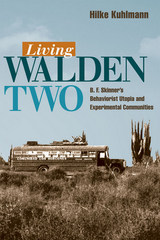 Living Walden Two: B. F. Skinner's Behaviorist Utopia and Experimental Communities
Hilke Kuhlmann
University of Illinois Press, 2004 In Walden Two, behavioral psychologist B. F. Skinner describes one of the most controversial fictional utopias of the twentieth century. During the 1960s and 70s, this novel went on to inspire approximately three dozen actual communities, which are entertainingly examined in Hilke Kuhlmann's Living Walden Two.
In the novel, behavioral engineers use positive reinforcement in organizing and "gently guiding" all aspects of society, leaving the rest of the citizens "free" to lead happy and carefree lives. Among the real-world communities, a recurrent problem in moving past the planning stages was the nearly ubiquitous desire among members to be gentle guides, coupled with strong resistance to being guided.
In an insightful and often hilarious narrative, Hilke Kuhlmann explores the dynamics of the communities, with an in-depth examination of the two surviving Skinnerian communities: Comunidad Los Horcones in Mexico, and Twin Oaks in Virginia. Drawing on extensive interviews with the founders and key players in the Walden Two communities, Kuhlmann redefines the criteria for their success by focusing on the tension between utopian blueprints for a new society and communal experiments' actual effects on individual lives.
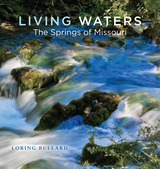 Living Waters: The Springs of Missouri
Loring Bullard
Moon City, 2020 In Living Waters: The Springs of Missouri, Loring Bullard explores the rich variety of Missouri springs, placing them in the state’s patterns of settlement and development. From the founding of towns to the establishment of wagon-road rest stops to largely forgotten spas and resorts, Missouri springs were, and continue to be, centerpieces of the landscape. They were once cherished sources of drinking water, their purity unquestioned. They provided power for mills, stock water for manufacturing plants, and source waters for fish hatcheries. Their numbingly cold waters filled swimming pools and trout ponds at scores of camps and resorts, where Missourians escaped the summer heat.
From the earliest times, springs were also sources of fascination. “Where does all that water come from? Why is it so cold?” Bullard gives us the science of spring hydrogeology; at the same time, he reminds us that springs were once revered symbols of renewal, purification, and everlasting life. They are no longer as central to the lives of Missourians. But are they still important to us? The answer to that question (and others) can be found in Living Waters.
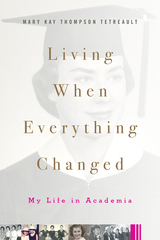 Living When Everything Changed: My Life in Academia
Mary Kay Thompson Tetreault
Rutgers University Press, 2019 Entering the academy at the dawn of the women’s rights movement in the late 1960s and early 1970s, the first generation of feminist academics had a difficult journey. With few female role models, they had to forge their own path and prove that feminist scholarship was a legitimate enterprise. Later, when many of these scholars moved into administrative positions, hoping to reform the university system from within, they encountered entrenched hierarchies, bureaucracies, and old boys’ networks that made it difficult to put their feminist principles into practice. In this compelling memoir, Mary Kay Thompson Tetreault describes how a Catholic girl from small-town Nebraska discovered her callings as a feminist, as an academic, and as a university administrator. She recounts her experiences at three very different schools: the small progressive Lewis & Clark College, the massive regional university of Cal State Fullerton, and the rapidly expanding Portland State University. Reflecting on both her accomplishments and challenges, she considers just how much second-wave feminism has transformed academia and how much reform is still needed. With remarkable candor and compassion, Thompson Tetreault provides an intimate personal look at an era when both women’s lives and university culture changed for good. The Acknowledgments were inadvertently left out of the first printing of this book. We apologize for the oversight, and offer them here instead. Future printings will include this information. (https://d3tto5i5w9ogdd.cloudfront.net/wp-content/uploads/2019/08/29185420/Thompson-Tetreault-Acknowledgments.pdf)
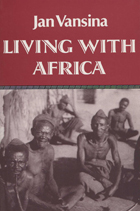 Living With Africa
Jan M. Vansina
University of Wisconsin Press, 1994 In 1952, a young Belgian scholar of European medieval history traveled to the Belgian Congo (now Zaire) to live in a remote Kuba village. Armed with a smattering of training in African cultures and language, Jan Vansina was sent to do fieldwork for a Belgian cultural agency. As it turned out, he would help found the field of African history, with a handful of other European and African scholars.
"I'm not an ethnologist, I'm a historian!" Vansina was to repeat again and again to those who assumed that people without written texts have no history. His discovery that he could analyze Kuba oral tradition using the same methods he had learned for interpreting medieval dirges was a historiographical breakthrough, and his first book, Oral Tradition as History, is considered the seminal work that gave the study of precolonial African history both the scholarly justification and the self-confidence it had been lacking.
Living with Africa is a compelling memoir of Vansina's life and career on three continents, interwoven with the story of African history as a scholarly specialty. In the background of his narrative are the collapse of colonialism in Africa and the emergence of newly independent nations; in the foreground are the first conferences on African history, the founding of journals and departments, and the efforts of Africans to establish a history curriculum for the schools in their new nations.
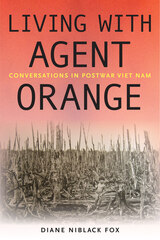 Living with Agent Orange: Conversations in Postwar Viet Nam
Diane Niblack Fox
University of Massachusetts Press, 2024 For over half a century, the Vietnamese people have endured the harmful legacies of Agent Orange, the toxic herbicide used by the American military as a type of chemical warfare. While scientists and politicians continue to debate how to best address its human and environmental consequences, the nearly three million Vietnamese whose lives have been shaped by its lingering effects have been largely left out of the conversation. To understand how Agent Orange has impacted the lives and livelihoods of everyday Vietnamese people, Diane Niblack Fox interviewed families and individuals living with its aftereffects across the northern, central, and southern regions of the country. In powerfully written prose, Fox shares the personal accounts of villagers, as they describe caring for loved ones with chronic illnesses and disabilities and their attempts to secure medical and financial assistance. Living with Agent Orange also chronicles the moving stories of rebuilt lives, of family and community support, and of the overriding power of the human spirit.
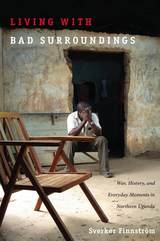 Living with Bad Surroundings: War, History, and Everyday Moments in Northern Uganda
Sverker Finnström
Duke University Press, 2008 Since 1986, the Acholi people of northern Uganda have lived in the crossfire of a violent civil war, with the Lord’s Resistance Army and other groups fighting the Ugandan government. Acholi have been murdered, maimed, and driven into displacement. Thousands of children have been abducted and forced to fight. Many observers have perceived Acholiland and northern Uganda to be an exception in contemporary Uganda, which has been celebrated by the international community for its increased political stability and particularly for its fight against AIDS. These observers tend to portray the Acholi as war-prone, whether because of religious fanaticism or intractable ethnic hatreds. In Living with Bad Surroundings, Sverker Finnström rejects these characterizations and challenges other simplistic explanations for the violence in northern Uganda. Foregrounding the narratives of individual Acholi, Finnström enables those most affected by the ongoing “dirty war” to explain how they participate in, comprehend, survive, and even resist it. Finnström draws on fieldwork conducted in northern Uganda between 1997 and 2006 to describe how the Acholi—especially the younger generation, those born into the era of civil strife—understand and attempt to control their moral universe and material circumstances. Structuring his argument around indigenous metaphors and images, notably the Acholi concepts of good and bad surroundings, he vividly renders struggles in war and the related ills of impoverishment, sickness, and marginalization. In this rich ethnography, Finnström provides a clear-eyed assessment of the historical, cultural, and political underpinnings of the civil war while maintaining his focus on Acholi efforts to achieve “good surroundings,” viable futures for themselves and their families.
 Living With Cancer: A Practical Guide
Visel, Dave
Rutgers University Press, 2006 In this essential guide, Dave Visel draws on expertise hard-won during his wife’s battle with lymphoma. He provides an overview of the varieties of cancer and all the basic types of treatments available. Chapters dispel common myths associated with these treatments and provide tips on nutrition and physical fitness. Visel also moves beyond the hospital to provide information and strategies to help with the emotional, practical, and financial effects of a diagnosis. Cancer patients will find the tools they need to make well-informed decisions on questions ranging from the right time to tell coworkers to whether to travel for treatment. Because medical bankruptcies affect nearly two million Americans each year, Visel devotes several chapters to financial issues. He also addresses the effects of cancer on relationships, such as how to deal with a difficult parent or whether to reconcile with an estranged spouse. In addition, Living with Cancer provides a comprehensive overview of the most useful corporate, government, and non-profit resources available. Anyone looking for help in understanding the full range of personal, professional, and legal issues associated with cancer will welcome this book. As inspiring as it is informative, it is a survival guide in the truest sense.
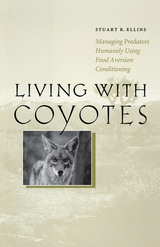 Living with Coyotes: Managing Predators Humanely Using Food Aversion Conditioning
By Stuart R. Ellins
University of Texas Press, 2005 The coyote may well be North America's most adaptable large predator. While humans have depleted or eliminated most other native predators, the coyote has defied all attempts to exterminate it, simultaneously expanding its range from coast to coast and from wilderness to urban areas. As a result, coyotes are becoming the focus of increasing controversy and emotion for people across the continent— from livestock growers who would like to eradicate coyotes to conservationists who would protect them at any cost. In this thoughtful, well-argued, and timely book, Stuart Ellins makes the case that lethal methods of coyote management do not work and that people need to adopt a more humane way of coexisting with coyotes. Interweaving scientific data about coyote behavior and natural history with decades of field experience, he shows how endlessly adaptive coyotes are and how attempts to kill them off have only strengthened the species through natural selection. He then explains the process of taste aversion conditioning—which he has successfully employed—to stop coyotes from killing domestic livestock and pets. Writing frankly as an advocate of this effective and humane method of controlling coyotes, he asks, "Why are we mired in the use of archaic, inefficient, unsophisticated, and barbaric methods of wildlife management in this age of reason and high technology? This question must be addressed while there is still a wildlife to manage."
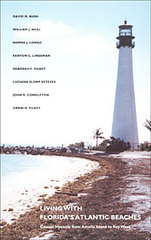 Living with Florida's Atlantic Beaches: Coastal Hazards from Amelia Island to Key West
David M. Bush, William J. Neal, Norma J. Longo, Kenyon C. Lindeman, Deborah F. Pilkey, Luciana Slomp Esteves, John D. Congleton, and Orrin H. Pilkey
Duke University Press, 2004 From Amelia Island just south of Georgia to Key West's southern tip, beaches are one of Florida's greatest assets. Yet these beaches are in danger: rapid structural development on a highly erodible coast make them vulnerable to some of nature's greatest storms. The same development that has been driven by the attraction of beautiful beaches and coastal amenities now threatens those very resources. In turn, coastal structures are at risk from sea-level rise, shoreline retreat, winter storms, and hurricanes. Most of the methods for reducing losses associated with storms protect property only in the short term—at a growing cost in dollars and loss of natural habitat in the long term. Living with Florida's Atlantic Beaches is a guide to mitigating or reducing losses of property, human life, and natural resources by living with, rather than just at, the shore. This illustrated volume provides an introduction to coastal processes and geology as well as a brief history of coastal hazards and short-sighted human responses. This is the first volume in the Living with the Shore series to discuss the significant long-term impact of dredge-and-fill beach construction on living marine resources. Guidance is provided for long-term risk reduction in the form of tips on storm-resistant construction and site evaluation; maps for evaluating relative vulnerability to hazards are also included. A brief review of coastal regulations will help property owners understand and navigate the various permit requirements for developing coastal property. Living with Florida's Atlantic Beaches is an invaluable source of information for everyone from the curious beach visitor to the community planner, from the prudent property investor to the decision-making public official.
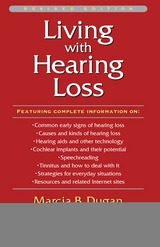 Living with Hearing Loss
Marcia B. Dugan
Gallaudet University Press, 2003 People who are hard of hearing and their friends and relatives now can learn all they need to know about hearing loss in this easy to read guide. Newly updated and revised, Living with Hearing Loss takes the reader from A to Z on the kinds and causes of hearing loss and its common early signs. Written by Marcia B. Dugan, past president of Self Help for Hard of Hearing People (SHHH), this straightforward book provides thorough information on seeking professional evaluations and complete descriptions of hearing aids and other assistive technologies. Enhanced sections on the potential of cochlear implants and dealing with tinnitus distinguishes this very useful handbook. Readers also can take advantage of updated information on relevant Internet sites and a new list of resources on dealing with hearing loss.
Living with Hearing Loss also suggests strategies for everyday situations and times of emergency. Chapters on speechreading, oral interpreters, assertive communication, and other tips for improving communication can enable people with hearing loss to make changes at work, home, and while traveling to cope with most situations. It can raise significantly the quality of the lives of hard of hearing people while also helping them to avoid dependency upon others.
 Living with His Camera
Jane Gallop
Duke University Press, 2003 Photography is usually written about from the point of view of either the photographer or the viewer. Living with His Camera offers a perspective rarely represented—that of the photographed subject. Dick Blau has been making art photographs of the people he lives with for more than thirty years; cultural theorist Jane Gallop has been living with him—and his camera—for twenty years. Living with His Camera is Gallop’s nuanced meditation on photography and the place it has in her private life and in her family. A reflection on family, it attempts—like Blau’s photographs themselves—to portray the realities of family life beyond the pieties of conventional representations. Living with His Camera is about some of the most pressing issues of visuality and some of the most basic issues of daily life. Gallop considers intimate photographs of moments both dramatic and routine: of herself giving birth to son Max or crying in the midst of an argument with Blau, pouring herself cereal as Max colors at the breakfast table, or naked, sweeping the floor. With her trademark candor, humor, and critical acumen, Gallop mixes personal reflection with close readings of Roland Barthes’s Camera Lucida, Susan Sontag’s On Photography, Kathryn Harrison’s novel Exposure, and Pierre Bourdieu’s Photography. Presenting his photographs and her text, Living with His Camera is a portrait of a couple whose professional activity is part of their private lives and whose private life is viewed through their professional gazes. While most of us set aside rigorous thought when we turn to the sentimental realm of home life, Gallop and Blau look at each other not only with great affection but also with the keen focus of a sharp, critical gaze.
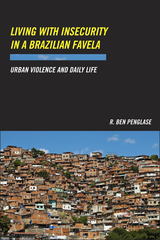 Living with Insecurity in a Brazilian Favela: Urban Violence and Daily Life
Penglase, R. Ben
Rutgers University Press, 2015 The residents of Caxambu, a squatter neighborhood in Rio de Janeiro, live in a state of insecurity as they face urban violence. Living with Insecurity in a Brazilian Favela examines how inequality, racism, drug trafficking, police brutality, and gang activities affect the daily lives of the people of Caxambu. Some Brazilians see these communities, known as favelas, as centers of drug trafficking that exist beyond the control of the state and threaten the rest of the city. For other Brazilians, favelas are symbols of economic inequality and racial exclusion. Ben Penglase’s ethnography goes beyond these perspectives to look at how the people of Caxambu themselves experience violence.
Although the favela is often seen as a war zone, the residents are linked to each other through bonds of kinship and friendship. In addition, residents often take pride in homes and public spaces that they have built and used over generations. Penglase notes that despite poverty, their lives are not completely defined by illegal violence or deprivation. He argues that urban violence and a larger context of inequality create a social world that is deeply contradictory and ambivalent. The unpredictability and instability of daily experiences result in disagreements and tensions, but the residents also experience their neighborhood as a place of social intimacy. As a result, the social world of the neighborhood is both a place of danger and safety.
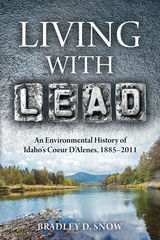 Living with Lead: An Environmental History of Idaho's Coeur D'Alenes, 1885-2011
Bradley D. Snow
University of Pittsburgh Press, 2017 The Coeur d’Alenes, a twenty-five by ten mile portion of the Idaho Panhandle, is home to one of the most productive mining districts in world history. Historically the globe’s richest silver district and also one of the nation’s biggest lead and zinc producers, the Coeur d’Alenes’ legacy also includes environmental pollution on an epic scale. For decades local waters were fouled with tailings from the mining district’s more than one hundred mines and mills and the air surrounding Kellogg, Idaho was laced with lead and other toxic heavy metals issuing from the Bunker Hill Company’s smelter. The same industrial processes that damaged the environment and harmed human health, however, also provided economic sustenance to thousands of local residents and a string of proud, working-class communities. Living with Lead endeavors to untangle the costs and benefits of a century of mining, milling, and smelting in a small western city and the region that surrounds it.
Living with Long Island's South Shore
Larry McCormick, William Neal, Orrin Pilkey Jr., and Orrin Pilkey, Sr.
Duke University Press, 1984 The south shore of Long Island, one of New York's greatest recreational assets, is receding at the rate of up to six feet per year. In many cases, efforts to halt this erosion actually have increased it. Buildings cone thought safely constructed back from high tidemarks today protrude far into the water. Even more, the number of homes an facilities built too close to the sea's edge has dramatically increased, making the south shore probably less ready to withstand a major storm than at the time of the cataclysmic hurricane of 1938. Thus, the question of what to do now to overcome and avoid these hazards takes on real urgency. Pointing to past mistakes, many Long Islanders insist that only by acting in an informed reasonable way can safe and environmentally sound development be possible for everyone.
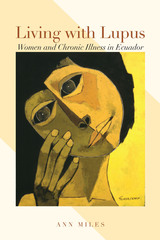 Living with Lupus: Women and Chronic Illness in Ecuador
By Ann Miles
University of Texas Press, 2013 Once associated only with the wealthy and privileged in Latin America, lifelong illnesses are now emerging among a wider cross section of the population as an unfortunate consequence of growing urbanization and increased life expectancy. One of these diseases is the chronic autoimmune disorder lupus erythematosus. Difficult to diagnose and harder still to effectively manage, lupus challenges the very foundations of women’s lives, their real and imagined futures, and their carefully constructed gendered identities. While the illness is validated by medical science, it is poorly understood by women, their families, and their communities, which creates multiple tensions as women attempt to make sense of an unpredictable, expensive, and culturally suspect medically managed illness. Living with Lupus vividly chronicles the struggles of Ecuadorian women as they come to terms with the experience of debilitating chronic illness. Drawing on years of ethnographic research, Ann Miles sensitively portrays the experiences and stories of Ecuadorian women who suffer with the intractable and stigmatizing disease. She uses in-depth case histories, rich in ethnographic detail, to explore not only how chronic illness can tear at the seams of women’s precarious lives, but also how meanings are reconfigured when a biomedical illness category moves across a cultural landscape. One of the few books that deals with the meanings and experiences of chronic illness in the developing world, Living with Lupus contributes to our understanding of a significant global health transition.
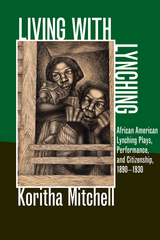 Living with Lynching: African American Lynching Plays, Performance, and Citizenship, 1890-1930
Koritha Mitchell
University of Illinois Press, 2012 Living with Lynching: African American Lynching Plays, Performance, and Citizenship, 1890–1930 demonstrates that popular lynching plays were mechanisms through which African American communities survived actual and photographic mob violence. Often available in periodicals, lynching plays were read aloud or acted out by black church members, schoolchildren, and families. Koritha Mitchell shows that African Americans performed and read the scripts in community settings to certify to each other that lynching victims were not the isolated brutes that dominant discourses made them out to be. Instead, the play scripts often described victims as honorable heads of households being torn from model domestic units by white violence. In closely analyzing the political and spiritual uses of black theatre during the Progressive Era, Mitchell demonstrates that audiences were shown affective ties in black families, a subject often erased in mainstream images of African Americans. Examining lynching plays as archival texts that embody and reflect broad networks of sociocultural activism and exchange in the lives of black Americans, Mitchell finds that audiences were rehearsing and improvising new ways of enduring in the face of widespread racial terrorism. Images of the black soldier, lawyer, mother, and wife helped readers assure each other that they were upstanding individuals who deserved the right to participate in national culture and politics. These powerful community coping efforts helped African Americans band together and withstand the nation's rejection of them as viable citizens. The Left of Black interview with author Koritha Mitchell begins at 14:00. An interview with Koritha Mitchell at The Ohio Channel.
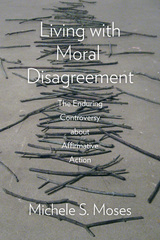 Living with Moral Disagreement: The Enduring Controversy about Affirmative Action
Michele S. Moses
University of Chicago Press, 2016 How to handle affirmative action is one of the most intractable policy problems of our era, touching on controversial issues such as race-consciousness and social justice. Much has been written both for and against affirmative action policies—especially within the realm of educational opportunity. In this book, philosopher Michele S. Moses offers a crucial new pathway for thinking about the debate surrounding educational affirmative action, one that holds up the debate itself as an important emblem of the democratic process.
Central to Moses’s analysis is the argument that we need to understand disagreements about affirmative action as inherently moral, products of conflicts between deeply held beliefs that shape differing opinions on what justice requires of education policy. As she shows, differing opinions on affirmative action result from different conceptual values, for instance, between being treated equally and being treated as an equal or between seeing race-consciousness as a pernicious political force or as a necessary variable in political equality. As Moses shows, although moral disagreements about race-conscious policies and similar issues are often seen as symptoms of dysfunctional politics, they in fact create rich opportunities for discussions about diversity that nourish democratic thought and life.
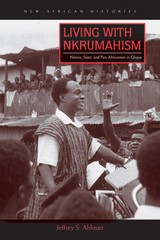 Living with Nkrumahism: Nation, State, and Pan-Africanism in Ghana
Jeffrey S. Ahlman
Ohio University Press, 2017 In the 1950s, Ghana, under the leadership of Kwame Nkrumah and the Convention People’s Party, drew the world’s attention as anticolonial activists, intellectuals, and politicians looked to it as a model for Africa’s postcolonial future. Nkrumah was a visionary, a statesman, and one of the key makers of contemporary Africa. In Living with Nkrumahism, Jeffrey S. Ahlman reexamines the infrastructure that organized and consolidated Nkrumah’s philosophy into a political program. Ahlman draws on newly available source material to portray an organizational and cultural history of Nkrumahism. Taking us inside bureaucracies, offices, salary structures, and working routines, he painstakingly reconstructs the political and social milieu of the time and portrays a range of Ghanaians’ relationships to their country’s unique position in the decolonization process. Through fine attunement to the nuances of statecraft, he demonstrates how political and philosophical ideas shape lived experience. Living with Nkrumahism stands at the crossroads of the rapidly growing fields of African decolonization, postcolonial history, and Cold War studies. It provides a much-needed scholarly model through which to reflect on the changing nature of citizenship and political and social participation in Africa and the broader postcolonial world.
 Living with Nuclear Weapons
Albert Carnesale, Paul Doty, Stanley Hoffmann, Samuel P. Huntington, Joseph S. Nye, Jr., and Scott D. Sagan
Harvard University Press, 1983 At the request of the President of Harvard University, six Harvard scholars have joined forces to write a book that lays out the facts about nuclear weapons for all concerned citizens who want to think through the nuclear dilemma for themselves. Living with Nuclear Weapons is written by specialists for the general reader. It conveys crucial information clearly, concisely, and without technical jargon.
Living with Nuclear Weapons presents all sides of the nuclear debate while explaining what everyone needs to know to develop informed and reasoned opinions about the issues. Among the specifics are a history of nuclear weaponry; an examination of current nuclear arsenals; scenarios of how a nuclear war might begin; a discussion of what can be done to promote arms control and disarmament; a study of the hazards of nuclear proliferation; an analysis of various nuclear strategies; and an explanation of how public opinion can influence policy on the nuclear arms question.
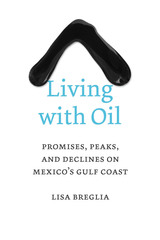 Living with Oil: Promises, Peaks, and Declines on Mexico’s Gulf Coast
By Lisa Breglia
University of Texas Press, 2013 For decades, Mexico has been one of the world’s top non-OPEC oil exporters, but since the 2004 peak and subsequent decline of the massive offshore oilfield—Cantarell—the prospects for the country have worsened. Living with Oil takes a unique look at the cultural and economic dilemmas in this locale, focusing on residents in the fishing community of Isla Aguada, Campeche, who experienced the long-term repercussions of a 1979 oil spill that at its height poured out 30,000 barrels a day, a blowout eerily similar to the 2010 Deepwater Horizon disaster. Tracing the interplay of the global energy market and the struggle it creates between citizens, the state, and multinational corporations, this study also provides lessons in the tug-of-war between environmentalism and the lure of profits. In Mexico, oil has held status as a symbol of nationalist pride as well as a key economic asset that supports the state’s everyday operations. Capturing these dilemmas in a country now facing a national security crisis at the hands of violent drug traffickers, cultural anthropologist Lisa Breglia covers issues of sovereignty, security, and stability in Mexico’s post-peak future. The first in-depth account of the local effects of peak oil in Mexico, emphasizing the everyday lives and livelihoods of coastal Campeche residents, Living with Oil demonstrates important aspects of the political economy of energy while showing vivid links between the global energy marketplace and the individual lives it affects.
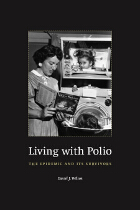 Living with Polio: The Epidemic and Its Survivors
Daniel J. Wilson
University of Chicago Press, 2005 Polio was the most dreaded childhood disease of twentieth-century America. Every summer during the 1940s and 1950s, parents were terrorized by the thought that polio might cripple their children. They warned their children not to drink from public fountains, to avoid swimming pools, and to stay away from movie theaters and other crowded places. Whenever and wherever polio struck, hospitals filled with victims of the virus. Many experienced only temporary paralysis, but others faced a lifetime of disability.
Living with Polio is the first book to focus primarily on the personal stories of the men and women who had acute polio and lived with its crippling consequences. Writing from personal experience, polio survivor Daniel J. Wilson shapes this impassioned book with the testimonials of more than one hundred polio victims, focusing on the years between 1930 and 1960. He traces the entire life experience of the survivors—from the alarming diagnosis all the way to the recent development of post-polio syndrome, a condition in which the symptoms of the disease may return two or three decades after they originally surfaced.
Living with Polio follows every physical and emotional stage of the disease: the loneliness of long separations from family and friends suffered by hospitalized victims; the rehabilitation facilitieswhere survivors spent a full year or more painfully trying to regain the use of their paralyzed muscles; and then the return home, where they were faced with readjusting to school or work with the aid of braces, crutches, or wheelchairs while their families faced the difficult responsibilities of caring for and supporting a child or spouse with a disability.
Poignant and gripping, Living with Polio is a compelling history of the enduring physical and psychological experience of polio straight from the rarely heard voices of its survivors.
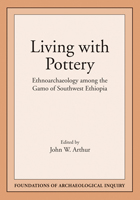 Living with Pottery: Ethnoarchaeology among the Gamo of Southwest Ethiopia
Arthur, John W
University of Utah Press, 2006 Although plastic and metal vessels offer significant advantages and have almost universally supplanted ceramics throughout the world, pottery fragments are one of the most ubiquitous artifacts in the archaeological record.
The southwestern region of Ethiopia is one of the few places in the world where locally made pottery is still the dominant choice for everyday domestic use. The Gamo people continue to produce and use pottery for transporting water, cooking, storing, and serving. Ethnoarchaeology undertaken in a society where people still use low-fired ceramics in daily life provides a powerful framework for archaeological inferences, especially since little behavioral information exists concerning the relationship between status, wealth, and household pottery.
Based on John Arthur’s extensive fieldwork, this study sheds light on some of the puzzles common to archaeology in any region. It also helps decipher evidence of inter- and intravillage social and economic organization and offers insight on markers for pottery-producing and nonproducing villages and socioeconomic variability.
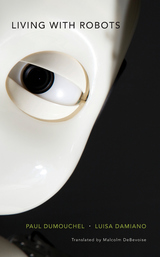 Living with Robots
Paul Dumouchel and Luisa DamianoTranslated by Malcolm DeBevoise
Harvard University Press, 2017 Living with Robots recounts a foundational shift in the field of robotics, from artificial intelligence to artificial empathy, and foreshadows an inflection point in human evolution. Today’s robots engage with human beings in socially meaningful ways, as therapists, trainers, mediators, caregivers, and companions. Social robotics is grounded in artificial intelligence, but the field’s most probing questions explore the nature of the very real human emotions that social robots are designed to emulate.
Social roboticists conduct their inquiries out of necessity—every robot they design incorporates and tests a number of hypotheses about human relationships. Paul Dumouchel and Luisa Damiano show that as roboticists become adept at programming artificial empathy into their creations, they are abandoning the conventional conception of human emotions as discrete, private, internal experiences. Rather, they are reconceiving emotions as a continuum between two actors who coordinate their affective behavior in real time. Rethinking the role of sociability in emotion has also led the field of social robotics to interrogate a number of human ethical assumptions, and to formulate a crucial political insight: there are simply no universal human characteristics for social robots to emulate. What we have instead is a plurality of actors, human and nonhuman, in noninterchangeable relationships.
As Living with Robots shows, for social robots to be effective, they must be attentive to human uniqueness and exercise a degree of social autonomy. More than mere automatons, they must become social actors, capable of modifying the rules that govern their interplay with humans.
Living With Stories: Telling, Re-telling, and Remembering
Schneider, William
Utah State University Press, 2008 In essays about communities as varied as Alaskan Native, East Indian, Palestinian, Mexican, and African American, oral historians, folklorists, and anthropologists look at how traditional and historical oral narratives live through re-tellings, gaining meaning and significance in repeated performances, from varying contexts, through cultural and historical knowing, and due to tellers' consciousness of their audiences.
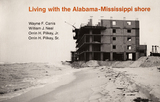 Living with the Alabama/Mississippi Shore
Wayne F. Canis, William F. Neal, Orrin H. Pilkey Jr. and Orrin H. Pilkey Sr.
Duke University Press, 1985 The Alabama-Mississippi shoreline along the Gulf of Mexico boasts some of the world's most beautiful beaches and balmiest climes. Ever-increasing numbers of retirees, recreation lovers, and industries with work forces are being attracted to the "Sun Belt." On a soft April day the Gulf's waters look as peaceful as a pond. Yet this same serene shoreline has been ravaged by seven major hurricanes during this century. Several years more than one fearful storm has come hurtling in during a single "season." Loss of life an property damage have been devastating. And newcomers seem almost unaware of the potential dangers. The authors of this book offer a vivid, historical overview for understanding the environment of the Alabama-Mississippi shore. They describe the risks faced by new residents, and they point the way toward safe and sane coastal development.
Living with the Chesapeake Bay and Virginia's Ocean Shores
Larry G. Ward, Peter S. Rosen, William J. Neal. Orrin H. Pilkey Jr., Orrin H. Pilkey Sr., Gary L. Anderson, and Stephen J. Howie
Duke University Press, 1989 This volume in the Living with the Shore series provides practical and specific information on the status of the nation's coast and useful guidelines that enable residents, visitors, and investors to live with and enjoy the shore without costly and futile struggles against the forces of nature.
 Living with the Coast of Alaska
Owen Mason, William Neal, and Orrin H. Pilkey
Duke University Press, 1997 Facing two oceans and three seas, Alaska's coastline stretches through bays, fjords, and around islands for 45,000 miles. Living with the Coast of Alaska, a new volume in the Living with the Shore series, is a user's guide for both present and future inhabitants of Alaska. Providing individual property owners in all regions of the state with the fundamentals of hazard recognition and mitigation strategy, the authors discuss the geological history of Alaska and its relation to the area's cultural history and present customized hazard risk assessments for coastal communities. Describing the dynamic nature of natural seismic events and coastal processes in Alaska, the authors emphasize the multiplicity of potential effects that result from a unique combination of geology, climate, and the sea. Earthquakes, volcanic eruptions, tsunami waves, avalanches, glacial advances, storm surges, flash flooding, wind channeling, and shoreline erosion combined with human-induced hazards such as oil spills, fire, and beach and offshore mining accidents make living with danger a way of life in Alaska. The authors provide information on federal and state laws and programs regarding natural disasters and coastal zone management as well as practical suggestions for the design and construction of buildings. For private, commercial, and public developments, this book offers a manual to help Alaskans make informed decisions to minimize, if not avoid, damage and danger.
 Living with the Coast of Maine
Joseph T. Kelley and Alice R. Kelley
Duke University Press, 1989 Maine is known for its rockbound coast and pristine shoreline. Yet there is more to this shore than rocky cliffs. This book describes the origin of the more common "soft coast" of eroding bluffs, sand beaches, and salt marshes. A central theme is the formation of the present shoreline during the current ongoing rise in sea level and the ways in which coastal residents can best cope with the changes to come. Although it is not widely known, Maine is experiencing a rapid, uneven drowning of its shore at the same time that coastal development is at an all-time high. The authors explain how the shoreline is changing and provide a series of highly detailed maps that show the relative safety of particular locations on the coast. Specific guidelines for recognizing various safe and unsafe coastal settings are presented, as are recommendations for sound construction techniques in hazardous coastal areas. Photographs and drawings illustrate the danger of living too near the shoreline, and an up-to-date review of Maine's regulations governing coastal construction is simply and readably described. A bibliography of important coastal literature is also included, as well as a guide to federal, state, and local sources of information.
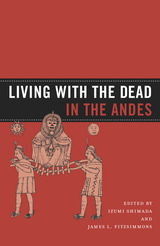 Living with the Dead in the Andes
Edited by Izumi Shimada and James L. Fitzsimmons
University of Arizona Press, 2015 The Andean idea of death differs markedly from the Western view. In the Central Andes, particularly the highlands, death is not conceptually separated from life, nor is it viewed as a permanent state. People, animals, and plants simply transition from a soft, juicy, dynamic life to drier, more lasting states, like dry corn husks or mummified ancestors. Death is seen as an extension of vitality.
Living with the Dead in the Andes considers recent research by archaeologists, bioarchaeologists, ethnographers, and ethnohistorians whose work reveals the diversity and complexity of the dead-living interaction. The book’s contributors reap the salient results of this new research to illuminate various conceptions and treatments of the dead: “bad” and “good” dead, mummified and preserved, the body represented by art or effigies, and personhood in material and symbolic terms.
Death does not end or erase the emotional bonds established in life, and a comprehensive understanding of death requires consideration of the corpse, the soul, and the mourners. Lingering sentiment and memory of the departed seems as universal as death itself, yet often it is economic, social, and political agendas that influence the interactions between the dead and the living.
Nine chapters written by scholars from diverse countries and fields offer data-rich case studies and innovative methodologies and approaches. Chapters include discussions on the archaeology of memory, archaeothanatology (analysis of the transformation of the entire corpse and associated remains), a historical analysis of postmortem ritual activities, and ethnosemantic-iconographic analysis of the living-dead relationship. This insightful book focuses on the broader concerns of life and death.
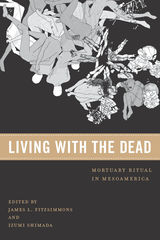 Living with the Dead: Mortuary Ritual in Mesoamerica
Edited by James L. Fitzsimmons and Izumi Shimada
University of Arizona Press, 2011 Scholars have recently achieved new insights into the many ways in which the dead and the living interacted from the Late Preclassic to the Conquest in Mesoamerica. The eight essays in this useful volume were written by well-known scholars who offer cross-disciplinary and synergistic insights into the varied articulations between the dead and those who survived them. From physically opening the tomb of their ancestors and carrying out ancestral heirlooms to periodic feasts, sacrifices, and other lavish ceremonies, heirs revisited death on a regular basis. The activities attributable to the dead, moreover, range from passively defining territorial boundaries to more active exploits, such as “dancing” at weddings and “witnessing” royal accessions. The dead were—and continued to be—a vital part of everyday life in Mesoamerican cultures.
This book results from a symposium organized by the editors for an annual meeting of the Society for American Archaeology. The contributors employ historical sources, comparative art history, anthropology, and sociology, as well as archaeology and anthropology, to uncover surprising commonalities across cultures, including the manner in which the dead were politicized, the perceptions of reciprocity between the dead and the living, and the ways that the dead were used by the living to create, define, and renew social as well as family ties. In exploring larger issues of a “good death” and the transition from death to ancestry, the contributors demonstrate that across Mesoamerica death was almost never accompanied by the extinction of a persona; it was more often the beginning of a social process than a conclusion.
 Living with the East Florida Shore
Orrin H. Pilkey, Dinesh Sharma, Harold Wanless, Larry Doyle, Orrin H. Pilkey Sr., William J. Neal, and Barbara Gruver
Duke University Press, 1984 More than one transplanted Floridian has paid $150,000 for a beautiful condominium with a sea view only to learn that, to keep the building from becoming part of the view, considerable additional money must be spent to build and repair seawalls or to pump up new beaches by dredging sand from offshore. Most of Florida's beachfront property lies on narrow strips of sand called barrier islands, which are low in elevation and subject to flooding during storms and hurricanes. Some of the construction is poor, adding to the problems facing homeowners, most whom came from other parts of the country with little awareness of the hazards of beaches. In Living with the East Florida Shore, Orrin H. Pilkey, Jr., of Duke University, along with his co-authors, has described the varied problems that confront the east shore of Florida today.
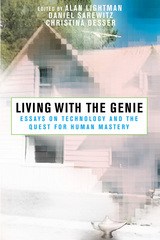 Living with the Genie: Essays On Technology And The Quest For Human Mastery
Edited by Alan Lightman, Daniel Sarewitz, and Christina Desser
Island Press, 2003 At a time when scientific and technological breakthroughs keep our eyes focused on the latest software upgrades or the newest cell-phone wizardry, a group of today's most innovative thinkers are looking beyond the horizon to explore both the promise and the peril of our technological future. Human ingenuity has granted us a world of unprecedented personal power -- enabling us to communicate instantaneously with anyone anywhere on the globe, to transport ourselves in both real and virtual worlds to distant places with ease, to fill our bellies with engineered commodities once available to only a privileged elite. Through our technologies, we have sought to free ourselves from the shackles of nature and become its master. Yet science and technology continually transform our experience and society in ways that often seem to be beyond our control. Today, different areas of research and innovation are advancing synergistically, multiplying the rate and magnitude of technological and societal change, with consequences that no one can predict. Living with the Genie explores the origins, nature, and meaning of such change, and our capacity to govern it. As the power of technology continues to accelerate, who, this book asks, will be the master of whom? In Living with the Genie, leading writers and thinkers come together to confront this question from many perspectives, including: Richard Powers's whimsical investigation of the limits of artificial intelligence; Philip Kitcher's confrontation of the moral implications of science; Richard Rhodes's exploration of the role of technology in reducing violence; Shiv Visvanathan's analysis of technology's genocidal potential; Lori Andrews's insights into the quest for human genetic enhancement; Alan Lightman's reflections on how technology changes the experience of our humanness. These and ten other provocative essays open the door to a new dialogue on how, in the quest for human mastery, technology may be changing what it means to be human, in ways we scarcely comprehend.
 Living with the Georgia Shore
Tonya D. Clayton, Lewis A. Taylor Jr., William J. Cleary, Paul Hosier, Peter H.F. Graber, and Orrin H. Pilkey Sr.
Duke University Press, 1992 The wide sandy beaches, quiet maritime forests, and vast Spartina marshes of the natural Georgia coast create a most spectacular, albeit gentle, Southern beauty. Casual visitors and longtime residents alike have been charmed by this special place. Living with the Georgia Shore provides an essential reference and guide for residents, visitors, developers, planners, and all who are concerned with the conditions and future of Georgia's coastal zone.
Recounting the human and natural history of the islands, the authors look in particular at the phenomenon of coastal erosion and the implications of various responses to this process. In Georgia, as elsewhere in the United States, the future of the shore is in doubt as recreational and residential development demands increase. This book provides guidelines for living with the shore, as opposed to simply living on it. The former requires planning and a wise choice of property or house site. The latter ignores the potential hazards unique to coastal life and may make inadequate allowance for the dramatic changes that can occur on any sandy ocean shore.
Living with the Georgia Shore includes an introduction to each of the Georgia isles, an overview of federal and state coastal land-use regulations, pointers on buying and building at the shore, a hurricane preparation checklist, a history of recent hurricanes in Georgia, an extensive annotated bibliography, and a guide to government agencies and private groups involved in issues of coastal development.
Living with the Lake Erie Shore
Charles H. Carter, William J. Neal, William Haras, Orrin H. Pilkey
Duke University Press This volume in the Living with the Shore series provides practical and specific information on the status of the nation's coast and useful guidelines that enable residents, visitors, and investors to live with and enjoy the shore without costly and futile struggles against the forces of nature.
Living with the Lake Erie Shore
Charles H. Carter, William J. Neal, William Haras, Orrin H. Pilkey
Duke University Press This volume in the Living with the Shore series provides practical and specific information on the status of the nation's coast and useful guidelines that enable residents, visitors, and investors to live with and enjoy the shore without costly and futile struggles against the forces of nature.
 Living with the Louisiana Shore
Joseph T. Kelley, Alice R. Kelley, Orrin Pilkey Sr., and Albert Clark
Duke University Press, 1984 Nowhere in America is there a more beautiful, more varied, or more endangered shoreline than in Louisiana. Because of its setting at the mouth of the Mississippi River, Louisiana differs from other coastal states. In addition to long stretches of sandy beach there are 12,000 square miles of marsh along the coast. Although the state's shoreline has not yet experienced the urban sprawl of a New Jersey or Florida, two-thirds of all Louisianans now live within a two-hour drive of salt marsh. The oil industry is expanding and competing for space and resources. But the most striking feature of Louisiana's coastline is rapidly accelerating change, which means (1) some coastal parishes may literally disappear by the year 2000; (2) the loss of marshland will damage the prolific seafood industry; (3) a retreating coastline could cost the state hundreds of millions of dollars in tax revenues from offshore oil facilities; (4) present and potential shoreline residents will face many new problems and possibilities.
Living with the New Jersey Shore
Karl Nordstrom, Paul A. Garés, Norbert P. Psuty, Orrin H. Pilkey Jr., William Neal, and Orrin H. Pilkey Sr.
Duke University Press, 1986 This volume in the Living with the Shore series provides practical and specific information on the status of the nation's coast and useful guidelines that enable residents, visitors, and investors to live with and enjoy the shore without costly and futile struggles against the forces of nature.
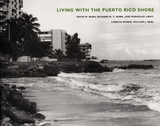 Living with the Puerto Rico Shore
David M. Bush, Richard M. T. Webb, José González Liboy, Lisbeth Hyman, and William J. Neal
Duke University Press, 1995 In this, the eighteenth title in Duke University Press's Living With the Shore series, the authors present a "user's guide" to the coastal zone of Puerto Rico. Presenting a geological appraisal of the history, dynamics, and hazards of the island's coastline, Living With the Puerto Rico Shore is the first in the series to examine a tropical region and the first to examine an area outside the continental United States.
The book provides detailed descriptions of the entire shoreline, noting the specific coastal hazards of each coastal reach. These hazards include coastal erosion, storm surge flooding, and potential damage from earthquakes. Where high-density development or significant roads and utilities are particularly at risk, these are also noted. The effects that sand mining, seawalls, jetties, and other attempts at coastal engineering have had on the island are examined. Finally, the authors discuss historical and legal aspects of coastal planning in Puerto Rico, presenting guidelines for selecting building sites.
Of interest to all concerned with protecting our shores and beaches and useful to the coastal planner and manager, Living With the Puerto Rico Shore contains an extensive bibliography and a list of agencies involved in coastal issues.
Living with the Shore of Puget Sound and the Georgia Strait
Thomas A. Terich
Duke University Press, 1987 This volume in the Living with the Shore series provides practical and specific information on the status of the nation's coast and useful guidelines that enable residents, visitors, and investors to live with and enjoy the shore without costly and futile struggles against the forces of nature.
 Living with the South Carolina Coast
Gered Lennon, William J. Neal, David Bush, Orrin H. Pilkey, Matthew Stutz and Jane Bullock
Duke University Press, 1996 Living with the South Carolina Coast is the latest volume in the Living with the Shore series that comprehensively investigates the status of a specific state's coastal region. Completely revising a previously published work in the series that dealt with South Carolina, this book not only brings up-to-date a wealth of information on migrating shorelines, selection of building sites, and pertinent regulations, but also reflects an expanded concept of the coast to include a broad range of coastal hazards.
Powerful storms have always played a major role in coastal processes in South Carolina, and the effects of Hurricane Hugo, the storm that ravaged the area in 1989, are thoroughly discussed. A series of Coastal Risk Maps are also included. These maps, graphically depicting areas of predictable erosion and storm damage potential, have been provided for every developed beach or barrier island in the state. Beyond the threat of hurricanes and coastal erosion, South Carolina, home of the Charleston Seismic Region, is also at risk for earthquakes. An entire chapter is devoted to earthquake-resistant construction, and the great Charleston earthquake of 1886 is examined in detail. Fires and floods are discussed. The Beachfront Management Act of 1990—the first state legislation of its kind that provides a system for dealing with migrating shorelines while preserving beaches for future generations—is also explained.
Covering everything from a history of the development of South Carolina's coast to recommendations on how to select an island homesite, this book will be a resource to professional coastal planners and managers, residents, prospective homeowners, and naturalists.
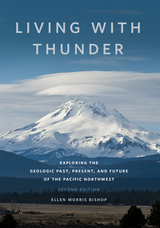 Living with Thunder: Exploring the Geologic Past, Present, and Future of the Pacific Northwest
Ellen Morris Bishop
Oregon State University Press, 2025 “In geology, the present is the key to the past. And the past is also a touchstone of the future. We would do well to heed the stories the stones have to tell.” —from the Introduction Updated throughout, this second edition of Living with Thunder provides readers with a robust introduction to the geological history of the Pacific Northwest—a landscape born of thunderous volcanic eruptions, earthquakes, and island-continent collisions. By combining engaging science writing with stunning color photographs, Ellen Morris Bishop presents an up-to-date geologic survey of Washington, Oregon, Northern California, and western Idaho. Whether examining new findings about the Yellowstone hotspot's rampage across Oregon, an updated history of Cascadia earthquakes, Mount Hood's 1793-1795 eruptions, the arrival of Indigenous peoples at least 18,000 years ago, or how Pacific Northwest eruptions and tectonics influenced past climate changes, Bishop’s gift as a scientist and storyteller engages general readers, geological nonspecialists, and students of the Earth sciences, alike. Highlighting the Northwest’s exceptional record of past climate changes and the implications for our future, the book outlines new understandings about the climatic consequences of major geologic events and their dramatic influences on ecosystems and ancient life. It also examines the confluence of scientific findings with Native American experience, stories, and traditional knowledge of earthquakes, eruptions, and more. With new illustrations, enhanced maps, the latest geologic timescale, and an extensive list of updated references and recommended readings, Living with Thunder offers a key to understanding the Northwest’s unique, long-term geologic heritage by giving voice to the rocks and their histories.
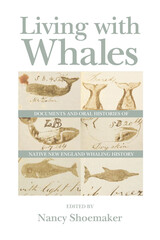 Living with Whales: Documents and Oral Histories of Native New England Whaling History
Nancy Shoemaker
University of Massachusetts Press, 2014 Native Americans along the coasts of southern New England and Long Island have had close ties to whales for thousands of years. They made a living from the sea and saw in the world's largest beings special power and meaning. After English settlement in the early seventeenth century, the region's natural bounty of these creatures drew Natives and colonists alike to develop whale hunting on an industrial scale. By the nineteenth century, New England dominated the world in whaling, and Native Americans contributed substantially to whaleship crews.
In Living with Whales, Nancy Shoemaker reconstructs the history of Native whaling in New England through a diversity of primary documents: explorers' descriptions of their "first encounters," indentures, deeds, merchants' accounts, Indian overseer reports, crew lists, memoirs, obituaries, and excerpts from journals kept by Native whalemen on their voyages. These materials span the centuries-long rise and fall of the American whalefishery and give insight into the far-reaching impact of whaling on Native North American communities. One chapter even follows a Pequot Native to New Zealand, where many of his Maori descendants still reside today.
Whaling has left behind a legacy of ambivalent emotions. In oral histories included in this volume, descendants of Wampanoag and Shinnecock whalemen reflect on how whales, whaling, and the ocean were vital to the survival of coastal Native communities in the Northeast, but at great cost to human life, family life, whales, and the ocean environment.
 Living Without Oxygen: Closed and Open Systems in Hypoxia Tolerance
Peter W. Hochachka
Harvard University Press, 1980 Innumerable clinical problems have as their basis some derangement in oxygen-dependent metabolism. To explore mechanisms of adjusting to oxygen limitation, Living without Oxygen presents a bestiary of exotic anaerobes that illuminate elements of metabolic biochemistry only dimly seen in studies using standard experimental animals. With their exaggerated anaerobic capabilities, Hochachka's diving mammals, airbreathing fishes, and hypoxia-adapted lower vertebrates allow a detailed assessment of what can and what cannot be adjusted in the process of extending hypoxia tolerance. The book places the enzymatic and biochemical machinery firmly in the biological context and assumes only a modest familiarity with bioenergetics and metabolic biochemistry. The author's clear prose should make this technical presentation pleasantly unintimidating for any physiologist, biochemist, or clinical investigator. The insights of his unique approach make Living without Oxygen essential reading.
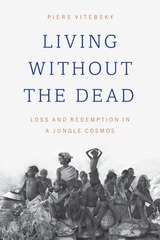 Living without the Dead: Loss and Redemption in a Jungle Cosmos
Piers Vitebsky
University of Chicago Press, 2017 Just one generation ago, the Sora tribe in India lived in a world populated by the spirits of their dead, who spoke to them through shamans in trance. Every day, they negotiated their wellbeing in heated arguments or in quiet reflections on their feelings of love, anger, and guilt.
Today, young Sora are rejecting the worldview of their ancestors and switching their allegiance to warring sects of fundamentalist Christianity or Hinduism. Communion with ancestors is banned as sacred sites are demolished, female shamans are replaced by male priests, and debate with the dead gives way to prayer to gods. For some, this shift means liberation from jungle spirits through literacy, employment, and democratic politics; others despair for fear of being forgotten after death.
How can a society abandon one understanding of reality so suddenly and see the world in a totally different way? Over forty years, anthropologist Piers Vitebsky has shared the lives of shamans, pastors, ancestors, gods, policemen, missionaries, and alphabet worshippers, seeking explanations from social theory, psychoanalysis, and theology. Living without the Dead lays bare today’s crisis of indigenous religions and shows how historical reform can bring new fulfillments—but also new torments and uncertainties.
Vitebsky explores the loss of the Sora tradition as one for greater humanity: just as we have been losing our wildernesses, so we have been losing a diverse range of cultural and spiritual possibilities, tribe by tribe. From the award-winning author of The Reindeer People, this is a heartbreaking story of cultural change and the extinction of an irreplaceable world, even while new religious forms come into being to take its place.
 Living Worth: Value and Values in Global Pharmaceutical Markets
Stefan Ecks
Duke University Press, 2022 In Living Worth Stefan Ecks draws on ethnographic research on depression and antidepressant usage in India to develop a new theory of value. Framing depressive disorder as a problem of value, Ecks traces the myriad ways antidepressants come to have value, from their ability to help make one’s life worth living to the wealth they generate in the multibillion-dollar global pharmaceutical market. Through case studies that include analyses of the different valuation of generic and brand-name drugs, the origins of rising worldwide depression rates, and the marketing, prescription, and circulation of antidepressants, Ecks theorizes value as a process of biocommensuration. Biocommensurations—transactions that aim or claim to make life better—are those forms of social, medical, and corporate actions that allow value to be measured, exchanged, substituted, and redistributed. Ecks’s theory expands value beyond both a Marxist labor theory of value and a free market subjective theory, thereby offering new insights into how the value of lives and things become entangled under neoliberal capitalism.
LIVINGSTON AND THE TOMATO
A.W. Livingston
Ohio State University Press, 1998 A. W Livingston (1821-98) was a Reynoldsburg, Ohio, tomato seedsman who was the best known developer of tomato varieties in the United States in the nineteenth century. First published in 1893, Livingston and the Tomato contains both descriptions and drawings of the tomato varieties he developed. The book features over sixty tomato recipes, including ones for slicing, frying, escalloping, baking, and broiling tomatoes; as well as for tomato toast, custard, soup, pie, preserves, figs, jam, butter, salad, sauce, and omelets.
Livingston's pioneering work; his entrepreneurial sons, who transformed his efforts into a successful business concern; the application of scientific principles to agricultural practices; and the tremendous growth of the canning and preserving industries are all reflections of the spirit of Ohio and America on the cusp of the twentieth century.
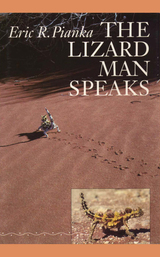 The Lizard Man Speaks
By Eric R. Pianka
University of Texas Press, 1994 Alone on the endless red-sand desert in the Australian outback, tracking Varanus giganteus, the perentie lizard that grows to be more than six feet long...for desert rat Eric Pianka, such adventures have led to a satisfying, if unusual, way of life, as well as a distinguished career as a field biologist. In The Lizard Man Speaks, Pianka recounts more than thirty years of adventures in reptile studies. He tells of "lizarding" in the North American deserts, the Kalahari Desert of southern Africa, and the Great Victoria Desert in Western Australia. His vivid imagery draws the reader into a world where lions lurk in the darkness beyond a gecko hunter's lights, where being stranded by car trouble miles from the last outpost is a constant danger, and where the wilderness still deserves to be called wild. Along the way, Pianka provides much general information about lizard ecology, the fire succession cycle, and the interaction of humans with the landscape. And he reveals the springs of his own determined spirit and love of solitude, describing a near-fatal boyhood accident and its shaping and character-building effect on the life that followed.
The Lizard Woman
Frank Waters
Ohio University Press, 1985 “The novel was begun in 1926, when I was twenty-four years old and working as a telephone engineer in Imperial Valley, on the California-Baja California border. During my stay there I made a horseback trip down into the little-known desert interior of Lower California. After having lived all of my early years in the high Rockies of California, I was unprepared for the vast sweep of sunstruck desert with its flat wastes, clumps of cacti, and barren parched-rock ranges. Its emotional impact was so profound, I was impelled to give voice to it with pencil and paper.” — Frank Waters First published in 1930 under the title Fever Pitch, The Lizard Woman is Frank Waters’ first novel. It foreshadows a theme central to Waters’ later work: that we must attune our spirits to the land to fully understand our places in the natural order.
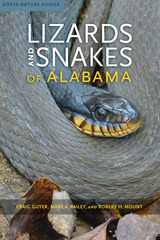 Lizards and Snakes of Alabama
Craig Guyer, Mark A. Bailey, and Robert H. Mount
University of Alabama Press, 2019 An up-to-date and comprehensive herpetological guide to Alabama
Lizards and Snakes of Alabama is the most comprehensive taxonomy gathered since Robert H. Mount’s seminal 1975 volume on the reptiles and amphibians of Alabama. This richly illustrated guide provides an up-to-date summary of the taxonomy and life history of lizards and snakes native to, or introduced to, the state.
Alabama possesses one of the most species-rich biotas in north temperate areas and this richness is reflected in some groups of lizards, such as skinks, and especially in snakes. The authors examine all known species within the state and describe important regional variations in each species, including changes in species across the many habitats that comprise the state. Significant field studies, especially of Alabama’s threatened and endangered species, have been performed and are used to inform discussion of each account.
The life-history entry for each species is comprised of scientific and common names, full-color photographs, a morphological description, discussion of habits and life cycle, and a distribution map depicting the species range throughout the state, as well as notes on conservation and management practices. The illustrated taxonomic keys provided for families, genera, species, and subspecies are of particular value to herpetologists.
This extensive guide will serve as a single resource for understanding the rich natural history of Alabama by shedding light on an important component of that biodiversity. Accessible to all, this volume is valuable to both the professional herpetologist and the general reader interested in snakes and lizards.
The Lizards, Crocodiles, and Turtles of Honduras: Systematics, Distribution, and Conservation
James R. McCranie
Harvard University Press, 2018 Based on years of field work and the examination of thousands of museum specimens, The Lizards, Crocodiles, and Turtles of Honduras is the final installment of a series of volumes by James R. McCranie documenting the amphibians and reptiles of Honduras.
Thoroughly illustrated by color photographs and maps of geographic distribution, the book describes in detail 86 species of Honduran lizards, crocodilians, and turtles. Identification keys in both English and Spanish allow the ready identification of all species, and discussions of conservation status review current threats to all species. The publication of this work represents the completion of the most comprehensive and detailed study of the amphibian and reptilian faunas of any country in Latin America.
 Lizards on the Mantel, Burros at the Door: A Big Bend Memoir
By Etta Koch with June Cooper Price
University of Texas Press, 1999 A woman who went West with her husband in the 1840s must have expected hardships and privation, but during the 1940s, when Etta Koch stopped off in Big Bend with her young family and a 23-foot travel trailer in tow, she anticipated no more than a civilized camping trip between her old home in Ohio and a new one in Arizona. It was only when she found herself moving into an old rock house without plumbing or electricity in the new Big Bend National Park that Etta realized, "From the sheltered life of a city girl of moderate circumstances, I too would have to face the reality of frontier living." In this book based on her journals and letters, Etta Koch and her daughter June Cooper Price chronicle their family's first years (1944-1946) in the Big Bend. Etta describes how her photographer husband Peter Koch became captivated by the region as a place for natural history filmmaking-and how she and their three young daughters slowly adapted to a pioneer lifestyle during his months' long absences on the photo-lecture circuit. In vivid, often humorous anecdotes, she describes making the rock house into a home, getting to know the Park Service personnel and other neighbors, coping with the local wildlife, and, most of all, learning to love the rugged landscape and the hardy individuals who call it home.
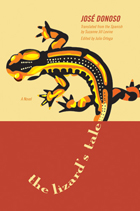 The Lizard's Tale: A Novel
José Donoso, translated from the Spanish by Suzanne Levine
Northwestern University Press, 2011 Winner of the 2012 PEN Center USA Literary Award for Translation
José Donoso was the leading Chilean representative of the Latin American “Boom” of the sixties and seventies that included Gabriel García Márquez, Mario Vargas Llosa, and Manuel Puig, among others. Written as a draft in 1973, set aside, and forgotten, The Lizard’s Tale was discovered among Donoso’s papers at Princeton University by his daughter after his death. Edited for publication by critic and poet Julio Ortega, it was published posthumously in Spanish under the title Lagartija sin cola in 2007. Suzanne Jill Levine, who knew Donoso and translated two of his earlier works, brings the book to an English-language audience for the first time.
Defeated and hiding in his Barcelona apartment, painter Antonio Muñoz-Roa—Donoso’s alter ego—relates the story of his flight with Luisa, his cousin, lover, and benefactor, after his scandalous desertion from the “Informalist” movement (a witty reference to a contemporary Spanish art movement and possibly an allusion to the Boom as well), in which he had been a member of a certain standing. Frustrated, old, and alone, the artist looks back on his years in the small town of Dors, a place he unsuccessfully tried to rescue from the crushing advance of modernity, and on the decline of his own family, also threatened by the changing times. In Levine’s able hands, Donoso’s clear prose shines through, forming a compact, powerful, and still-relevant meditation on the commercialization of art and the very places we inhabit.
Lizzie Borden in Love: Poems in Women's Voices
Julianna Baggott
Southern Illinois University Press, 2006 Women’s voices offering an intimate view into women’s lives Lizzie Borden in Love, a collection of poems by national bestselling author Julianna Baggott, offers poignant commentary in the voices of women as varied as Mary Todd Lincoln and Monica Lewinsky. The poems often focus on a particular moment in life: Katherine Hepburn discovers the dead body of her brother in an attic, or painter Mary Cassatt mourns the failure of her eyesight. Sometimes heartbreaking, sometimes ecstatic, the poems in this collection never fail the trust of the subjects of their intimate portrayals
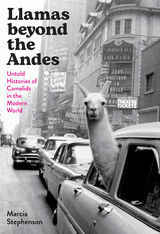 Llamas beyond the Andes: Untold Histories of Camelids in the Modern World
Marcia Stephenson
University of Texas Press, 2023 Camelids are vital to the cultures and economies of the Andes. The animals have also been at the heart of ecological and social catastrophe: Europeans overhunted wild vicuña and guanaco and imposed husbandry and breeding practices that decimated llama and alpaca flocks that had been successfully tended by Indigenous peoples for generations. Yet the colonial encounter with these animals was not limited to the New World. Llamas beyond the Andes tells the five-hundred-year history of animals removed from their native habitats and transported overseas. Initially Europeans prized camelids for the bezoar stones found in their guts: boluses of ingested matter that were thought to have curative powers. Then the animals themselves were shipped abroad as exotica. As Europeans and US Americans came to recognize the economic value of camelids, new questions emerged: What would these novel sources of protein and fiber mean for the sheep industry? And how best to cultivate herds? Andeans had the expertise, but knowledge sharing was rarely easy. Marcia Stephenson explores the myriad scientific, commercial, and cultural interests that have attended camelids globally, making these animals a critical meeting point for diverse groups from the North and South.
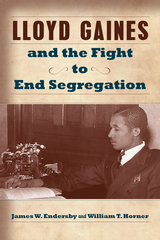 Lloyd Gaines and the Fight to End Segregation
James W. Endersby and William T. Horner
University of Missouri Press, 2016 Winner, 2017 Missouri Conference on History Book Award
In 1936, Lloyd Gaines’s application to the University of Missouri law school was denied based on his race. Gaines and the NAACP challenged the university’s decision. Missouri ex rel. Gaines v. Canada (1938) was the first in a long line of decisions by the U.S. Supreme Court regarding race, higher education, and equal opportunity. The court case drew national headlines, and the NAACP moved Gaines to Chicago after he received death threats. Before he could attend law school, he vanished. This is the first book to focus entirely on the Gaines case and the vital role played by the NAACP and its lawyers—including Charles Houston, known as “the man who killed Jim Crow”—who advanced a concerted strategy to produce political change. Horner and Endersby also discuss the African American newspaper journalists and editors who mobilized popular support for the NAACP’s strategy. This book uncovers an important step toward the broad acceptance of racial segregation as inherently unequal. This is the inaugural volume in the series Studies in Constitutional Democracy, edited by Justin Dyer and Jeffrey Pasley of the Kinder Institute on Constitutional Democracy.
Lloyd George
Hugh Purcell
Haus Publishing, 2006 A biography of the Liberal British Prime Minister, 'Who Won the War'.
Lo
Melissa Crowe
University of Iowa Press, 2023 Lo maps the deprivation and richness of a rural girlhood and offers an intimate portrait of the woman—tender, hungry, hopeful—who manages to emerge. In a series of lyric odes and elegies, Lo explores the notion that we can be partially constituted by lack—poverty, neglect, isolation. The child in the book’s early sections is beloved and lonely, cherished and abused, lucky and imperiled, and by leaning into this complexity the poems render a tentative and shimmering space sometimes occluded, the space occupied by a girl coming to find herself and the world beautiful, even as that world harms her.
Loaves of Torah: Exploring the Jewish Year through Challah
Rabbi Vanessa M. Harper
Central Conference of American Rabbis, 2023 Braided and spiral loaves of challah have long been a delicious centerpiece of the Jewish table, but with a few extra twists, the beloved Shabbat bread can become a
work of art that teaches Torah. In Loaves of Torah, Rabbi Vanessa M. Harper— creator of the hit Instagram account @lechlechallah—shapes interpretive challot
for each weekly Torah portion and Jewish holiday. A creative journey through the Jewish year, the book pairs gorgeous color photographs with insightful commentary,
in-depth questions for reflection and discussion, as well as beautiful kavanot. Rabbi Harper also includes blessings, recipes, and tips for creating your own interpretive
challot. A fresh, contemporary commentary on our holiest text, Loaves of Torah will inspire you to think outside the braid and take Torah into your own hands.
 Lobbying and Policy Change: Who Wins, Who Loses, and Why
Frank R. Baumgartner, Jeffrey M. Berry, Marie Hojnacki, David C. Kimball, and Beth L. Leech
University of Chicago Press, 2009 During the 2008 election season, politicians from both sides of the aisle promised to rid government of lobbyists’ undue influence. For the authors of Lobbying and Policy Change, the most extensive study ever done on the topic, these promises ring hollow—not because politicians fail to keep them but because lobbies are far less influential than political rhetoric suggests.
Based on a comprehensive examination of ninety-eight issues, this volume demonstrates that sixty percent of recent lobbying campaigns failed to change policy despite millions of dollars spent trying. Why? The authors find that resources explain less than five percent of the difference between successful and unsuccessful efforts. Moreover, they show, these attempts must overcome an entrenched Washington system with a tremendous bias in favor of the status quo.
Though elected officials and existing policies carry more weight, lobbies have an impact too, and when advocates for a given issue finally succeed, policy tends to change significantly. The authors argue, however, that the lobbying community so strongly reflects elite interests that it will not fundamentally alter the balance of power unless its makeup shifts dramatically in favor of average Americans’ concerns.
 Lobbying for Higher Education: How Colleges and Universities Influence Federal Policy
Constance Ewing Cook
Vanderbilt University Press, 1998 Historically, many faculty and administrators in higher education have regarded themselves as above the fray--part of the national interest, not a special interest--and considered lobbying a dirty business unworthy of their lofty enterprise. Now that academia no longer enjoys all the respect and good will that federal policy makers once afforded it, that attitude has changed. The Republican sweep of the 1994 Congressional elections served as a wake-up call for the higher education community. In response, it made a spirited effort to gain attention for its own policy preferences.
Lobbying for Higher Education is about how the major higher education associations and the constituent American colleges and universities try to influence federal policy, especially congressional policy. In clear prose Cook explains how the higher education community organizes itself in Washington, how it lobbies, and how its major interest groups are perceived both by their own members and by public officials. The book focuses on the crucial development in 1995-1996 of a new lobbying paradigm, which included the greater use of campus-based resources and ad hoc coalitions. The most engrossing part of its story is higher education's creative response to the policy turmoil and disruption of the status quo that resulted from the shift in congressional party control.
The author, Constance Cook, uses sources unique to this project: over 1,500 survey responses from college and university presidents (a 62% return rate) and nearly 150 interviews with institutional and association leaders. Fortuitously, the 1994 electoral upheaval provided her with an opportunity to capture, analyze, and interpret the responses of her subjects in a period of unusually sweeping change.
Lobbying for Higher Education is a timely book with an interesting and important story at its core.
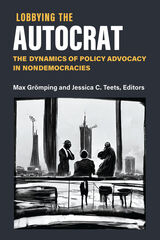 Lobbying the Autocrat: The Dynamics of Policy Advocacy in Nondemocracies
Max Grömping and Jessica C. Teets, Editors
University of Michigan Press, 2023 Although authoritarian countries often repress independent citizen activity, lobbying by civil society organizations is actually a widespread phenomenon. Using case studies such as China, Russia, Belarus, Cambodia, Malaysia, Montenegro, Turkey, and Zimbabwe, Lobbying the Autocrat shows that citizen advocacy organizations carve out niches in the authoritarian policy process, even influencing policy outcomes. The cases cover a range of autocratic regime types (one-party, multi-party, personalist) on different continents, and encompass different systems of government to explore citizen advocacy ranging from issues such as social welfare, women’s rights, election reform, environmental protection, and land rights. They show how civil society has developed adaptive capacities to the changing levels of political repression and built resilience through ‘tactful contention’ strategies. Thus, within the bounds set by the authoritarian regimes, adaptive lobbying may still bring about localized responsiveness and representation. However, the challenging conditions of authoritarian advocacy systems identified throughout this volume present challenges for both advocates and autocrats alike. The former are pushed by an environment of constant threat and uncertainty into a precarious dance with the dictator: just the right amount of acquiescence and assertiveness, private persuasion and public pressure, and the flexibility to change quickly to suit different situations. An adaptive lobbyist survives and may even thrive in such conditions, while others often face dire consequences. For the autocrat on the other hand, the more they stifle the associational sphere in an effort to prevent mass mobilization, the less they will reap the informational benefits associated with it. This volume synthesizes the findings of the comparative cases to build a framework for understanding how civil society effectively lobbies inside authoritarian countries.
 Lobbying Together: Interest Group Coalitions in Legislative Politics
Kevin W. Hula
Georgetown University Press, 1999 Today organized interests fight most of their major battles within coalitions. Whether joining forces to address tobacco legislation or proposed air safety regulations, Washington lobbyists with seemingly little in common are combining their clout to get results. Kevin Hula here examines why coalition strategies have emerged as a dominant lobbying technique, when lobbyists use them, and how these strategies affect their activities. His is the first book to focus on the formation and use of coalitions by lobbyists, examining the broader scope of interest group coalitions and explaining their roles as institutions of collective leadership, bargaining, and strategy for member organizations. Combining collective action theory with data gleaned from 130 interviews with lobbyists and interest group leaders in the fields of transportation, education, and civil rights, Hula explores how the use of coalitions differs at various stages of the policy process and with different activities. In the course of his study, he also shows how the communications revolution is changing interest group tactics. The single most detailed work available on this subject, Lobbying Together offers scholars and students alike a fresh and accessible look at this increasingly important factor in the policy process.
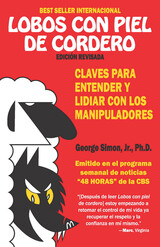 Lobos Con Piel De Cordero: Claves Para Entender Y Lidial Con Los Manipuladores
George K. Simon, Ph.D.
Parkhurst Brothers, Inc., 2020 CLAVES PARA ENTENDER Y LIDIAR CON LOS MANIPULADORES
El Dr. George Simon sabe cómo algunas personas tocan la fibra sensible de otras. Tus hijos-en especial las adolescentes-son expertos en esto, al igual que tu pareja. Puede que tus compaiieros de trabajo desacrediten tus esfuerzos calladamente pretendiendo ser serviciales, o que tu jefe se aproveche de tus flaquezas. Las personas manipuladoras persiguen dos propósitos: ganar y quedar bien al hacerlo. A menudo, aquellos de quienes abusan apenas perciben lo que está pasando. Esta reveladora obra te abrirá los ojos y en ella descubrirás …
• 4 motivos par las que a las víctimas les cuesta tanto romper con susrelaciones abusivas
• tácticas que utilizan las manipuladores para imponer sus intenciones ocultas y justificar su comportamiento
• tácnicas para redefinir las reglas del juego entre tú y el abusador
• cómo detectar aquellos puntos débiles de tu carácter que tienden a hacerte caer en las redes de las manipuladores
• 12 técnicas de fortalecimiento personal que te ayudarán a tener mayor firmeza en todas tus relaciones
The Lobster Gangs of Maine
James M. Acheson
University Press of New England, 1988 James Acheson’s detailed account of lobstering in Maine quickly dispels notions that the lobstermen is the eastern version of the cowboy, struggling alone for survival against the elements. In reality, he writes, “the lobster fisherman is caught up in a thick and complex web of social relationships. Survival in the industry depends as much on the ability to manipulate social relationships as on technical skills.” Acheson replaces our romantic image of the lobsterman with descriptions of the highly territorial and hierarchical “harbor gangs,” daily and annual cycles of lobstering, intricacies of marketing the catch, and the challenge of managing a communal resource.
Local Access Network Technologies
Paul France
The Institution of Engineering and Technology, 2004 The business of telecommunications is undergoing a period of change driven by changes in regulation, increasing demands for services and the development of new access technologies. The market structure of telecommunications is evolving rapidly as new and existing players strive to compete in an increasingly volatile market, while the advent of new data services is placing greater demands on the network as operators strive to offer new broadband services. Underpinning much of this change is the access technology itself, not only in the transitional form of copper twisted pairs, but also increasingly through the use of new fibre, radio and copper systems. The dominant cost of most telecommunication networks is the access network itself, which typically can demand up to 80% of the total investment required.
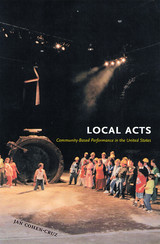 Local Acts: Community-Based Performance in the United States
Cohen-Cruz, Jan
Rutgers University Press, 2005 An eclectic mix of art, theatre, dance, politics, experimentation, and ritual,community-based performance has become an increasingly popular art movement in the United States. Forged by the collaborative efforts of professional artists and local residents, this unique field brings performance together with a range of political, cultural, and social projects, such as community-organizing, cultural self-representation, and education. Local Acts presents a long-overdue survey of community-based performance from its early roots, through its flourishing during the politically-turbulent 1960s, to present-day popular culture. Drawing on nine case studies, including groups such as the African American Junebug Productions, the Appalachian Roadside Theater, and the Puerto Rican Teatro Pregones, Jan Cohen-Cruz provides detailed descriptions of performances and processes, first-person stories, and analysis. She shows how the ritual side of these endeavors reinforces a sense of community identification while the aesthetic side enables local residents to transgress cultural norms, to question group habits, and to incorporate a level of craft that makes the work accessible to individuals beyond any one community. The book concludes by exploring how community-based performance transcends even national boundaries, connecting the local United States with international theater and cultural movements.
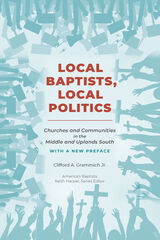 Local Baptists, Local Politics: Churches and Communities in the Middle and Uplands South
Clifford A., Jr. Grammich
University of Tennessee Press, 2022 This provocative book explores the political views and actions of religious adherents who claim to base their faith on a literal interpretation of the Bible. Focusing on several small Baptist sects scattered throughout the middle and uplands South, Clifford Grammich finds that these groups are often highly engaged politically at the local level. He thus challenges the traditional view of these Baptists as politically aloof, concerned only with matters of faith and personal conduct.
Grammich shows that the politics arising from these groups’ religious beliefs are not those of any consistent, pervasive ideology. Rather, he argues, such politics more often reflect a series of adaptations to local circumstances. Among the sects that he studies, there is a strong emphasis on the local authority to interpet the Bible and, thus, to shape religious commands to very specific conditions. Beyond the broad concerns of preserving the traditional family and curbing excessive worldliness, these Baptists are free to adapt their theology to meet their particular needs—and can often do so more readily than those belonging to more hierarchical churches. Since these people are typically more rural, more southern, less educated, and less affluent than most Americans, the author notes, they can face special problems in dealing with modernity—problems that their religion helps them address.
The book includes two case studies that show in depth both the possiblities and limitations of politics within these groups. In a local labor struggle in Tennessee, Baptist sectarians were able to generate more religious support for a United Mine Workers local than was offered by the usual supporters of organized labor in other churches. On the other hand, in an environmental conflict in Kentucky, these Baptists’ traditional community concerns inhibited their participation in a broader reform movement.
Relating the beliefs and actions of the “local Baptists” to various larger themes—including those of cultural traditionalism, economic populism, and increasing affluence—Grammich offers a valuable study of the complex ways in which religious faith can affect political involvement. His book will effect a new understanding of American fundamentalism itself.
The Author: Clifford A. Grammich Jr. is director of research at Heartland Center, a social research institute in Hammond, Indiana.
 Local Childhoods in Global Times
Edited by Anette Hellman and Susanne Garvis
Intellect Books, 2022 A reflection on early childhood experiences in a global context, both before and after the onset of the COVID-19 pandemic.
In this volume, contributors from across the globe provide examples of local childhoods from different national contexts including the United States, Australia, Finland, Hong Kong, Indonesia, Japan, Norway, and Sweden. Each chapter presents a different focus on early childhood, showing the diversity and complexity across multiple countries. Key topics explored include multi-language development, nationalism, and multiculturalism. Across the chapters, concepts around cultural theories of everyday life show how practices of and concerning children function to produce childhood as an artifact, fiction, and instrument.
The COVID-19 pandemic has demanded major changes around learning, agency, voice, and lived experience for children around the world, and this book aids readers in understanding how changing perspectives on children and childhood and identity are expressed among children, families, and educators in and outside educational environments. It brings together active researchers in the field of global childhoods to sustain and develop our community of research and scholarship, promoting internationalization through global childhoods as a way of cultural diversity and acceptance. It will be a useful resource for students and academics in early childhood education and education studies more generally, as well as practitioners and educators.
Local Church, Global Church
Stephen J.C. Andes
Catholic University of America Press, 2016 This important volume investigates the many forms of Catholic activism in Latin America between the 1890s and 1962 (from the publication of the papal encyclical Rerum Novarum to the years just prior to the Second Vatican Council). It argues that this period saw a variety of lay and clerical responses to the social changes wrought by industrialization, political upheavals and mass movements, and increasing secularization. Spurred by these local developments as well as by initiatives from the Vatican, and galvanized by national projects of secular state-building, Catholic activists across Latin America developed new ways of organizing in order to effect social and political change within their communities.
Local Churches, Monasteries, and Bishops in León Between the Ninth and Eleventh Centuries
Mariel Pérez
Amsterdam University Press, 2024 This volume contributes to a deeper understanding of the different forms of ecclesiastical articulation in early medieval Spain. While traditional studies have focused on higher instances of ecclesiastical power, this work offers a bottom-up perspective centred on the local churches and the bonds they established with monasteries and bishops. This approach engages in a reflection on the nature of the diocese in the Early Middle Ages, as well as furthering our knowledge of early medieval local societies and their social dynamics.
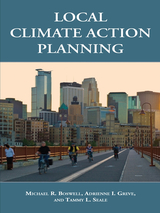 Local Climate Action Planning
Michael Boswell, Adrienne Greve, and Tammy L. Seale
Island Press, 2011 Climate change is a global problem, but the problem begins locally. Cities consume 75% of the world's energy and emit 80% of the world's greenhouse gases. Changing the way we build and operate our cities can have major effects on greenhouse gas emissions. Fortunately, communities across the U.S. are responding to the climate change problem by making plans that assess their contribution to greenhouse gas emissions and specify actions they will take to reduce these emissions.
This is the first book designed to help planners, municipal staff and officials, citizens and others working at local levels to develop Climate Action Plans. CAPs are strategic plans that establish policies and programs for mitigating a community's greenhouse gas (GHGs) emissions. They typically focus on transportation, energy use, and solid waste, and often differentiate between community-wide actions and municipal agency actions. CAPs are usually based on GHG emissions inventories, which indentify the sources of emissions from the community and quantify the amounts. Additionally, many CAPs include a section addressing adaptation-how the community will respond to the impacts of climate change on the community, such as increased flooding, extended drought, or sea level rise.
With examples drawn from actual plans, Local Climate Action Planning guides preparers of CAPs through the entire plan development process, identifying the key considerations and choices that must be made in order to assure that a plan is both workable and effective.
Local Constraints vs. Economy
David E. Johnson and Shalom Lappin
CSLI, 1999 The book offers a detailed critique of the economy-of-derivation model of grammar that has emerged within the framework of Chomsky's Minimalist Program. It looks at the conceptual and computational complexity problems as well as the empirical consequences of both global and local economy principles. The book compares the economy-of-derivation model with a local constraint model of grammar that does not invoke conditions on sets of derivations or on possible operations in a derivation. It argues that the pure local constraint model of grammar avoids the complexity problems resulting from economy-of-derivation principles and provides a more satisfactory explanation of the linguistic facts that economy theorists have cited in support of their approach. The local constraint model also allows for a more natural and empirically well-motivated grammatical architecture than the one postulated by the Minimalist Program.
Local Contexts of Islamism in Popular Media
Lila Abu-Lughod
Amsterdam University Press, 2006 After the events of 9/11, media representations of Muslims in the West—never known for their accuracy—became
even more stereotypically negative. Few of us realize, however, the profusion of similar sentiments that existed
within Arab Muslim media outlets ten or even fifteen years earlier. Lila Abu- Lughod here examines these images of
religious extremism in popular Arab media, focusing most closely on such depictions in Egyptian television shows
of the 1990s. Concluding with an exploration of the influence of media on religion itself, Local Contexts of Islamism in Popular Media will add new fuel to current debates in media studies and world politics.
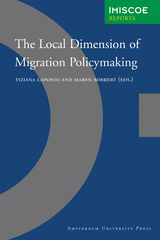 The Local Dimension of Migration Policymaking
Edited by Tiziana Caponio and Maren Borkert
Amsterdam University Press, 2010 This book prompts a fresh look on immigrant integration policy. Revealing just where immigrants and their receiving societies interact everyday, it shows how societal inclusion is administered and produced at a local level. The studies presented focus on three issue areas of migration policy - citizenship, welfare services and religious diversity - and consider cities in very different national contexts. Spanning Switzerland, Italy, Germany, the Netherlands and Canada, the cases display great variety in their theoretical and methodological approaches. In all the countries considered, we see that the local level has an undeniable relevance despite differences in state structures, models of integration and centre-peripheral relations. Particularly for future migration policy research, such a complex comparative exercise thus yields an important universal realisation: the local dimension of migration policymaking matters. This title is available in the OAPEN Library - http://www.oapen.org.
 Local Ecologies: Artistic Investigations of Eastern Massachusetts
Edited by Kirsten Swenson and Rebecca Uchill
Amherst College Press, 2026 Local Ecologies is an innovative multimedia exploration of the diverse coastal and river ecosystems of Eastern Massachusetts. The book’s rich archive of essays, interviews, and artistic projects reveals the region’s layered Indigenous, colonial, and industrial histories, showing how art can deepen understanding of place through strategies for reading the ground with greater care. By recognizing entangled histories and working within difficult inheritances, this volume foregrounds multiple ways of knowing and making place—through observation, research, memory, and collective action—offering the reader models for ongoing engagement with the region and beyond.
Developed through a multiyear collaboration among artists, scholars, activists, and community stakeholders, this volume takes its name from an initiative hosted by three University of Massachusetts campuses (Boston, Dartmouth, and Lowell) in 2019 and 2020. In expanded forms, the book’s contributors reflect on sites such as Jerry’s Pond in Cambridge, Deer Island in Boston Harbor, New Bedford Harbor, and the Merrimack River, tracing histories of colonialism and displacement, and presenting contemporary acts of resistance and reclamation. At a moment when the infrastructures of cultural memory are increasingly under threat, Local Ecologies insists on art as a vital mode of collective reckoning and possibility.
Local Energy: Distributed generation of heat and power
Janet Wood
The Institution of Engineering and Technology, 2008 In future the UK's energy supplies, for both heat and power, will come from much more diverse sources. In many cases this will mean local energy projects serving a local community or even a single house. What technologies are available? Where and at what scale can they be used? How can they work effectively with our existing energy networks? This book explores these power and heat sources, explains the characteristics of each and examines how they can be used.
Local Exchange and Early State Development in Southwestern Iran
Gregory Alan Johnson
University of Michigan Press, 1973 Gregory Alan Johnson uses the results of his archaeological survey of the Susiana plain of Iran to analyze settlement patterns in four Uruk occupational phases. Includes more than 100 maps, figures, tables, and photographs.
Local Flavor: Restaurants That Shaped Chicago’s Neighborhoods
Jean Iversen
Northwestern University Press, 2018 The neighborhoods that make up Chicago’s rich cultural landscape have been defined by the restaurants that anchor them. In Local Flavor, the popular food writer Jean Iversen chronicles eight beloved local eateries, from Chinatown on the South Side to Rogers Park in the far North, tracing the story of how they became neighborhood institutions. Iversen has meticulously gathered the tales, recipes, and cultural traditions that define Chicago’s culinary past and present. Rich with firsthand accounts from local restaurateurs, their families, long-time customers, and staff, Local Flavor is a community-driven look at Chicago through a gastronomical lens. Including recipes for popular dishes from each restaurant that readers can try at home, Local Flavor weaves together ethnography, family, and food history into a story that will enthrall both food and Chicago history lovers.
Local Government and Finance in Minnesota
William Anderson
University of Minnesota Press, 1935
Local Government and Finance in Minnesota was first published in 1935. Minnesota Archive Editions uses digital technology to make long-unavailable books once again accessible, and are published unaltered from the original University of Minnesota Press editions.A comprehensive survey, by the foremost authority in the state, of the organization, history, functions, and administrative procedures of local government units in Minnesota.
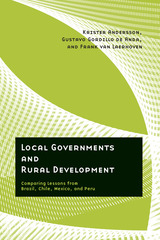 Local Governments and Rural Development: Comparing Lessons from Brazil, Chile, Mexico, and Peru
Krister Andersson, Gustavo Gordillo de Anda, and Frank van Laerhoven
University of Arizona Press, 2009 Despite the recent economic upswing in many Latin American countries, rural poverty rates in the region have actually increased during the past two decades. Experts blame excessively centralized public administrations for the lackluster performance of public policy initiatives. In response, decentralization reformshave become a common government strategy for improving public sector performance in rural areas. The effect of these reforms is a topic of considerable debate among government officials, policy scholars, and citizens’ groups. This book offers a systematic analysis of how local governments and farmer groups in Latin America are actually faring today.
Based on interviews with more than 1,200 mayors, local officials, and farmers in 390 municipal territories in four Latin American nations, the authors analyze the ways in which different forms of decentralization affect the governance arrangements for rural development “on the ground.” Their comparative analysis suggests that rural development outcomes are systemically linked to locally negotiated institutional arrangements—formal and informal—between government officials, NGOs, and farmer groups that operate in the local sphere. They find that local-government actors contribute to public services that better assist the rural poor when local actors cooperate to develop their own institutional arrangements for participatory planning, horizontal learning, and the joint production of services.
This study brings substantive data and empirical analysis to a discussion that has, until now, more often depended on qualitative research in isolated cases. With more than 60 percent of Latin America’s rural population living in poverty, the results are both timely and crucial.
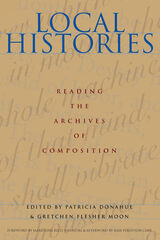 Local Histories: Reading the Archives of Composition
Patricia Donahue
University of Pittsburgh Press, 2007
In Local Histories, the contributors seek to challenge the widely held belief that the origin of American composition as a distinguishable discipline can be traced to a small number of elite colleges such as Harvard, Yale, and Michigan in the mid- to late nineteenth century. Through extensive archival research at liberal arts colleges, normal schools, historically black colleges, and junior colleges, the contributors ascertain that many of these practices were actually in use prior to this time and were not the sole province of elite universities. Though not discounting the elites' influence, the findings conclude that composition developed in many locales concurrently.
Individual chapters reflect on student responses to curricula, the influence of particular instructors or pedagogies in the context of compositional history, and the difficulties inherent in archival research. What emerges is an original and significant study of the developmental diversity within the discipline of composition that opens the door to further examination of local histories as guideposts to the origins of composition studies.
Local Identities: Landscape and Community in the Late Prehistoric Meuse-Demer-Scheldt region
Fokke Gerritsen
Amsterdam University Press, 2003 Gerritsen's study investigates how small groups of people—households, or local communities—constitute and represent their social identity by shaping the landscape around them. Examining things like house building and habitation, cremation and burial, and farming and ritual practice, Gerritsen develops a new theoretical and empirical perspective on the practices that create collective senses of identity and belonging. An explicitly diachronic approach reveals processes of cultural and social change that have previously gone unnoticed, providing a basis for a much more dynamic history of the late prehistoric inhabitants of this region.
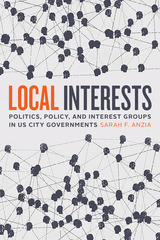 Local Interests: Politics, Policy, and Interest Groups in US City Governments
Sarah F. Anzia
University of Chicago Press, 2022 A policy-focused approach to understanding the role of interest groups in US municipal governments.
Local politics in the United States once seemed tranquil compared to the divisiveness and dysfunction of the country’s national politics. Those days have passed. As multiple wide-ranging crises have thrust America’s local governments into the spotlight, they have also exposed policy failures and systemic problems that have mounted for years. While issues such as policing and the cost of housing are debated nationally, much of the policymaking surrounding these issues occurs locally. In Local Interests, Sarah F. Anzia explores how local governments—and the interest groups that try to influence them—create the policies that drive the national conversation: policing, economic development, housing, and challenges of taxing and spending.
Anzia examines local interest groups in terms of the specific policies they pursue, including how these groups get active in politics and what impact they have. By offering new perspectives on these issues, Anzia contributes to our knowledge of how interest groups function and the significant role they play in shaping broader social outcomes.
 Local Interests: Politics, Policy, and Interest Groups in US City Governments
Sarah F. Anzia
University of Chicago Press, 2022 This is an auto-narrated audiobook version of this book.
A policy-focused approach to understanding the role of interest groups in US municipal governments.
Local politics in the United States once seemed tranquil compared to the divisiveness and dysfunction of the country’s national politics. Those days have passed. As multiple wide-ranging crises have thrust America’s local governments into the spotlight, they have also exposed policy failures and systemic problems that have mounted for years. While issues such as policing and the cost of housing are debated nationally, much of the policymaking surrounding these issues occurs locally. In Local Interests, Sarah F. Anzia explores how local governments—and the interest groups that try to influence them—create the policies that drive the national conversation: policing, economic development, housing, and challenges of taxing and spending.
Anzia examines local interest groups in terms of the specific policies they pursue, including how these groups get active in politics and what impact they have. By offering new perspectives on these issues, Anzia contributes to our knowledge of how interest groups function and the significant role they play in shaping broader social outcomes.
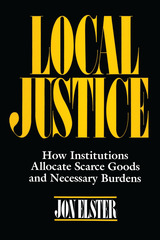 Local Justice: How Institutions Allocate Scarce Goods and Necessary Burdens
Jon Elster
Russell Sage Foundation, 1992 The well-being of individuals routinely depends on their success in obtaining goods and avoiding burdens distributed by society. Local Justice offers the first systematic analysis of the principles and procedures used in dispensing "local justice" in situations as varied as the admission of students to college, the choice of patients for organ transplants, the selection of workers for layoffs, and the induction of men into the army. A prominent theorist in the field of rational choice and decision making, Jon Elster develops a rich selection of empirical examples and case studies to demonstrate the diversity of procedures used by institutions that mete out local justice. From this revealing material Elster fashions a conceptual framework for understanding why institutions make these crucial allocations in the ways they do. Elster's investigation discloses the many complex and varied approaches of such decision-making bodies as selective service and adoption agencies, employers and universities, prison and immigration authorities. What are the conflicting demands placed on these institutions by the needs of applicants, the recommendations of external agencies, and their own organizational imperatives? Often, as Elster shows, methods of allocation may actually aggravate social problems. For instance, the likelihood that handicapped or minority infants will be adopted is further decreased when agencies apply the same stringent screening criteria—exclusion of people over forty, single parents, working wives, and low-income families—that they use for more sought-after babies. Elster proposes a classification of the main principles and procedures used to match goods with individuals, charts the interactions among these mechanisms of local justice, and evaluates them in terms of fairness and efficiency. From his empirical groundwork, Elster builds an innovative analysis of the historical processes by which, at given times and under given circumstances, preferences become principles and principles become procedures. Local Justice concludes with a comparison of local justice systems with major contemporary theories of social justice—utilitarianism, John Rawls's A Theory of Justice, Robert Nozick's Anarchy, State, and Utopia—and discusses the "common-sense conception of justice" held by professional decision makers such as lawyers, economists, and politicians. The difference between what we say about justice and how we actually dispense it is the illuminating principle behind Elster's book. A perceptive and cosmopolitan study, Local Justice is a seminal work for all those concerned with the formation of ethical policy and social welfare—philosophers, economists, political scientists, health care professionals, policy makers, and educators.
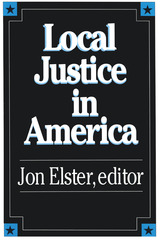 Local Justice in America
Jon Elster
Russell Sage Foundation, 1995 Notions of justice and fairness are central to the American belief that the pursuit of a healthy and productive life is the right of all citizens. Yet in the real world there are seldom sufficient resources to meet the needs of everyone, and institutions are routinely forced to make difficult decisions regarding who will be favored and who will not. Local Justice in America is an insightful look into how selections are made in four critical areas: college admissions, kidney transplants, employee layoffs, and legalized immigration. This volume's case studies survey the history and modern rationale behind seemingly enigmatic allocation systems, chronicling the political and ethical debates, occasional scandals, and judicial battles that have shaped them. Though these selection processes differ significantly, each reflects a bitter struggle between opposing—and equally intense—principles of local justice. For example, are admissions officers who use special points to foster student diversity less fair than those who rely exclusively on scholastic achievement? How did the system of personal discretion among doctors selecting transplant patients come to be viewed by the public as more inequitable than compassionate? Does the use of seniority as a gauge in layoffs violate equal opportunity laws or provide employers with their only objective and neutral criterion? How have partisan interest groups repeatedly shifted immigration quotas between the extremes of xenophobia and altruism? In framing chapters, editor Jon Elster draws upon these studies to speculate on the unique nature of the American value system. Arguing that race matters deeply in all considerations of local justice, he discusses how our society's assessment of neediness balances on the often uneasy compromises between the desire to reward deserving individuals and the call to strengthen opportunities for disadvantaged groups. Well informed and stimulating, Local Justice in America speaks directly to policy debates in the fields of health, education, work, and immigration, and makes an important contribution to our understanding of the fundamental social issues that affect our daily welfare.
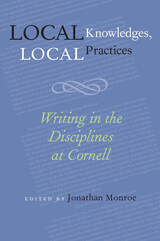 Local Knowledges, Local Practices: Writing in the Disciplines at Cornell
Jonathan Monroe
University of Pittsburgh Press, 2006
Cornell University has stood at the forefront of writing instruction, at least since the publication of William Strunk and E. B. White’s classic, The Elements of Style, in 1918. For the past thirty years Cornell has been the site of a remarkably sustained and successful interdisciplinary approach to writing across the curriculum - a program that now coordinates nearly two hundred courses each semester sponsored by over thirty different departments.
Local Knowledges, Local Practices provides an overview of Cornell’s rich history and distinguished achievements in training students to write well. Including the views of professors representing a variety of disciplines - from animal science to political science, anthropology to philosophy, romance studies to neurobiology - this collection will serve as a resource for anyone interested in broadly conceived, discipline-specific writing instruction.
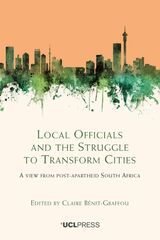 Local Officials and the Struggle to Transform Cities: A View from Post-Apartheid South Africa
Edited by Claire Bénit-Gbaffou
University College London, 2024 An ethnographic exploration of the challenges faced by South African municipalities to make the urban world a better place.
Why are even progressive local authorities with the will to improve seldom able to change cities? Why does it seem almost impossible to redress spatial inequalities, deliver and maintain basic services, elevate impoverished areas, and protect marginalized communities? Why do municipalities in the Global South refuse to work with prevailing social informalities, and resort instead to interventions that are known to displace and aggravate the very issues they aim to address?
Local Officials and the Struggle to Transform Cities analyzes these challenges in South African cities, where the brief post-apartheid moment opened a window for progressive city government and made research into state practices both possible and necessary. The book interrogates city officials’ practices through a comparative gaze into other ‘progressive moments’ in large cities in Brazil, the United States, and India. It considers the instruments that these officials invent to implement urban policies, the agency these officials develop, and the constraints they navigate in governing unequal cities. Claire Bénit-Gbaffou captures in this book actual officials’ practices through first-hand experience, state ethnographies, and engaged research. This reveals day-to-day practices that question generalized explanations of state failure in complex urban societies as essential malevolence, contextual weakness, corruption, and inefficiency.
This book opens the black box of the workings of the state, with the hope of opening paths for the construction of progressive policies in contemporary cities.
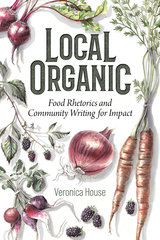 Local Organic: Food Rhetorics and Community Writing for Impact
Veronica House
Utah State University Press, 2025 In Local Organic, Veronica House explores ways to collaboratively build resilient local food systems and coalitions across disciplines and communities. Framed by a study of language, power, and food both nationally and in Boulder, Colorado, the book offers teachers, organizers, activists, and scholars ideas and examples for building interdisciplinary and intercommunity coalitional ecologies through writing in a methodology for engagement that the author calls ecological community writing. Based on more than a decade of research, teaching, writing, and project-building with undergraduate writing students and project partners, House theorizes how work to encourage local community-based writing becomes an ecological thread connecting things, ideas, and people. Local Organic is a book about collaboratively building community-derived definitions for resilient local food systems and how faculty and students can work to ethically partner with local communities using distributed definition building.
Local Organic offers writing and rhetoric faculty and graduate students an ecological methodology to produce, teach, and theorize writing to help communities engage with a wide array of social issues and to work toward individual and community-level impacts.
Local People: The Struggle for Civil Rights in Mississippi
John Dittmer
University of Illinois Press, 1994 Winner of the Bancroft Prize, the Lillian Smith Book Award, the Mississippi Historical Society McLemore Prize, the Herbert G. Gutman Prize and the Gustavus Myers Center for Study of Human Rights Outstanding Book Prize.
Publication of this book was supported by a grant from DePauw University, Greencastle, Indiana.
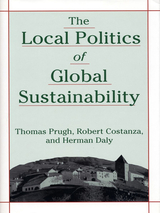 The Local Politics of Global Sustainability
Thomas Prugh, Robert Costanza, and Herman Daly
Island Press, 2000 The most difficult questions of sustainability are not about technology; they are about values. Answers to such questions cannot be found by asking the "experts," but can only be resolved in the political arena. In The Local Politics of Global Sustainability, author Thomas Prugh, with Robert Costanza and Herman Daly, two ofthe leading thinkers in the field of ecological economics, explore the kind of politics that can help enable us to achieve a sustainable world of our choice, rather than one imposed by external forces. The authors begin by considering the biophysical and economic dimensions of the environmental crisis, and tracing the crisis in political discourse and our public lives to its roots. They then offer an in-depth examination of the elements of a re-energized political system that could lead to the development of more sustainable communities. Based on a type of self-governance that political scientist Benjamin Barber calls "strong democracy," the politics is one of engagement rather than consignment, empowering citizens by directly involving them in community decisionmaking. After describing how it should work, the authors provide examples of communities that are experimenting with various features of strong democratic systems. The Local Politics of Global Sustainability explains in engaging, accessible prose the crucial biophysical, economic, and social issues involved with achieving sustainability. It offers a readable exploration of the political implications of ecological economics and will be an essential work for anyone involved in that field, as well as for students and scholars in environmental politics and policy, and anyone concerned with the theory and practical applications of the concept of sustainable development.
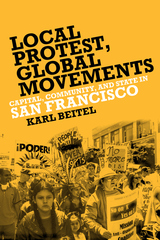 Local Protests, Global Movements: Capital, Community, and State in San Francisco
Karl Beitel
Temple University Press, 2013 A history of the antigentrification and housing rights movement in San Francisco, Local Protests, Global Movements examines the ability of local urban movements to engage in meaningful contestation with private real estate capital and area governmental leaders in the era of urban neoliberalism.
Using San Francisco as an illuminating case study, Beitel analyzes the innovative ways urban social movements have organized around issues regarding land use, housing, urban ecology, and health care on the local level to understand the changing nature of protest formation around the world.
Reconciling the passing of New Left Ideals and the emergence of mobilization on a global scale, he assesses the limits of contemporary urban movements as conduits for advancing a radical political program. Beitel argues these limits reflect recurrent problems of internal fragmentation, and the manner in which liberal democratic institutions structure processes of political participation and interest representation.
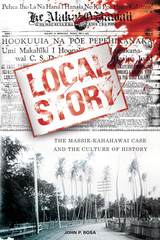 Local Story: The Massie-Kahahawai Case and the Culture of History
John P. Rosa
University of Hawaii Press, 2014 The Massie-Kahahawai case of 1931–1932 shook the Territory of Hawai‘i to its very core. Thalia Massie, a young Navy wife, alleged that she had been kidnapped and raped by “some Hawaiian boys” in Waikīkī. A few days later, five young men stood accused of her rape. Mishandling of evidence and contradictory testimony led to a mistrial, but before a second trial could be convened, one of the accused, Horace Ida, was kidnapped and beaten by a group of Navy men and a second, Joseph Kahahawai, lay dead from a gunshot wound. Thalia’s husband, Thomas Massie; her mother, Grace Fortescue; and two Navy men were convicted of manslaughter despite witnesses who saw them kidnap Kahahawai and the discovery of Kahahawai’s body in the Massie’s car. Under pressure from Congress and the Navy, territorial governor Lawrence McCully Judd commuted their sentences. After spending only an hour in the governor’s office at ‘Iolani Palace, the four were set free.
Local Story is a close examination of how Native Hawaiians, Asian immigrants, and others responded to challenges posed by the military and federal government during the case’s investigation and aftermath. In addition to providing a concise account of events as they unfolded, the book shows how this historical narrative has been told and retold in later decades to affirm a local identity among descendants of working-class Native Hawaiians, Asians, and others—in fact, this understanding of the term “local” in the islands dates from the Massie-Kahahawai case. It looks at the racial and sexual tensions in pre–World War II Hawai‘i that kept local men and white women apart and at the uneasy relationship between federal and military officials and territorial administrators. Lastly, it examines the revival of interest in the case in the last few decades: true crime accounts, a fictionalized TV mini-series, and, most recently, a play and a documentary—all spurring the formation of new collective memories about the Massie-Kahahawai case.
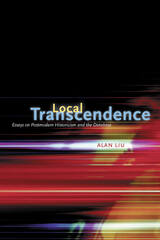 Local Transcendence: Essays on Postmodern Historicism and the Database
Alan Liu
University of Chicago Press, 2008 Driven by global economic forces to innovate, today’s society paradoxically looks forward to the future while staring only at the nearest, most local present—the most recent financial quarter, the latest artistic movement, the instant message or blog post at the top of the screen. Postmodernity is lived, it seems, at the end of history.
In the essays collected in Local Transcendence, Alan Liu takes the pulse of such postmodern historicism by tracking two leading indicators of its acceleration in the late twentieth and early twenty-first centuries: postmodern cultural criticism—including the new historicism, the new cultural history, cultural anthropology, the new pragmatism, and postmodern and postindustrial theory—and digital information technology. What is the relation between the new historicist anecdote and the database field, Liu asks, and can either have a critical function in the age of postmodern historicism? Local Transcendence includes two previously unpublished essays and a synthetic introduction in which Liu traverses from his earlier work on the theory of historicism to his recent studies of information culture to propose a theory of contingent method incorporating a special inflection of history: media history.
Local Vino: The Winery Boom in the Heartland
James R. Pennell
University of Illinois Press, 2016 The art and craft of winemaking has put down roots in Middle America, where enterprising vintners coax reds and whites from the prairie earth while their businesses stand at the hub of a new tradition of community and conviviality. In Local Vino, James R. Pennell tracks among the hardy vines and heartland terroir of wineries across Illinois, Iowa, Indiana, and Ohio. Blending history and observation, Pennell gives us a top-down view of the business from cuttings and cultivation to sales and marketing. He also invites entrepreneurs to share stories of their ambitions, hard work, and strategies. Together, author and subjects trace the hows and whys of progress toward that noblest of goals: a great vintage that puts their winery on the map.
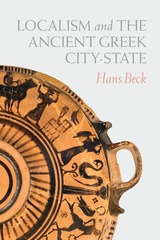 Localism and the Ancient Greek City-State
Hans Beck
University of Chicago Press, 2020 Much like our own time, the ancient Greek world was constantly expanding and becoming more connected to global networks. The landscape was shaped by an ecology of city-states, local formations that were stitched into the wider Mediterranean world. While the local is often seen as less significant than the global stage of politics, religion, and culture, localism, argues historian Hans Beck has had a pervasive influence on communal experience in a world of fast-paced change. Far from existing as outliers, citizens in these communities were deeply concerned with maintaining local identity, commercial freedom, distinct religious cults, and much more. Beyond these cultural identifiers, there lay a deeper concept of the local that guided polis societies in their contact with a rapidly expanding world.
Drawing on a staggering range of materials—including texts by both known and obscure writers, numismatics, pottery analysis, and archeological records—Beck develops fine-grained case studies that illustrate the significance of the local experience. Localism and the Ancient Greek City-State builds bridges across disciplines and ideas within the humanities and shows how looking back at the history of Greek localism is important not only in the archaeology of the ancient Mediterranean, but also in today’s conversations about globalism, networks, and migration.
 Localities at the Center: Native Place, Space, and Power in Late Imperial Beijing
Richard Belsky
Harvard University Press, 2005 A visitor to Beijing in 1900, Chinese or foreign, would have been struck by the great number of native-place lodges serving the needs of scholars and officials from the provinces. What were these native-place lodges? How did they develop over time? How did they fit into and shape Beijing's urban ecology? How did they further native-place ties?
In answering these questions, the author considers how native-place ties functioned as channels of communication between China's provinces and the political center; how sojourners to the capital used native-place ties to create solidarity within their communities of fellow provincials and within the class of scholar-officials as a whole; how the state co-opted these ties as a means of maintaining order within the city and controlling the imperial bureaucracy; how native-place ties transformed the urban landscape and social structure of the city; and how these functions were refashioned in the decades of political innovation that closed the Qing period. Native-place lodges are often cited as an example of the particularistic ties that characterized traditional China and worked against the emergence of a modern state based on loyalty to the nation. The author argues that by fostering awareness of membership in an elite group, the native-place lodges generated a sense of belonging to a nation that furthered the reforms undertaken in the early twentieth century.
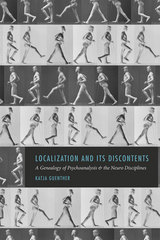 Localization and Its Discontents: A Genealogy of Psychoanalysis and the Neuro Disciplines
Katja Guenther
University of Chicago Press, 2015 Psychoanalysis and neurological medicine have promoted contrasting and seemingly irreconcilable notions of the modern self. Since Freud, psychoanalysts have relied on the spoken word in a therapeutic practice that has revolutionized our understanding of the mind. Neurologists and neurosurgeons, meanwhile, have used material apparatus—the scalpel, the electrode—to probe the workings of the nervous system, and in so doing have radically reshaped our understanding of the brain. Both operate in vastly different institutional and cultural contexts.
Given these differences, it is remarkable that both fields found resources for their development in the same tradition of late nineteenth-century German medicine: neuropsychiatry. In Localization and Its Discontents, Katja Guenther investigates the significance of this common history, drawing on extensive archival research in seven countries, institutional analysis, and close examination of the practical conditions of scientific and clinical work. Her remarkable accomplishment not only reframes the history of psychoanalysis and the neuro disciplines, but also offers us new ways of thinking about their future.
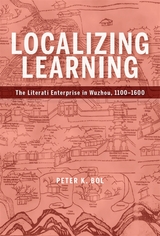 Localizing Learning: The Literati Enterprise in Wuzhou, 1100–1600
Peter K. Bol
Harvard University Press, 2022 As the first intellectual history of Song, Yuan, and Ming China written from a local perspective, Localizing Learning shows how literati learning in Wuzhou came to encompass examination studies, Neo-Confucian moral philosophy, historical and Classical scholarship, encyclopedic learnedness, and literary writing, and traces how debates over the relative value of moral cultivation, cultural accomplishment, and political service unfolded locally.
The book is set in one locality, Wuzhou (later Jinhua), a prefecture in China’s Zhejiang province, from the twelfth through the sixteenth century. Its main actors are literati of the Song, Yuan, and Ming, who created a local tradition of learning as a means of cementing their common identity and their claim to moral, political, and cultural leadership. Close readings of philosophical and literary texts with quantitative analysis of social and kinship networks consider why and how the local literati enterprise was built.
By treating learning as the subject, it broadens our perspective, going beyond a history of ideas to investigate the social practices and networks of kinship and collegiality with which literati defined themselves in local, regional, and national contexts.
 Localizing Paradise: Kumano Pilgrimage and the Religious Landscape of Premodern Japan
D. Max Moerman
Harvard University Press, 2005 Although located far from the populated centers of traditional Japan, the three Kumano shrines occupied a central position in the Japanese religious landscape. For centuries Kumano was the most visited pilgrimage site in Japan and attracted devotees from across the boundaries of sect (Buddhist, Daoist, Shinto), class, and gender. It was also a major institutional center, commanding networks of affiliated shrines, extensive landholdings, and its own army, and a site of production, generating agricultural products and symbolic capital in the form of spiritual values. Kumano was thus both a real place and a utopia: a non-place of paradise or enlightenment. It was a location in which cultural ideals--about death, salvation, gender, and authority--were represented, contested, and even at times inverted.
This book encompasses both the real and the ideal, both the historical and the ideological, Kumano. It studies Kumano not only as a site of practice, a stage for the performance of asceticism and pilgrimage, but also as a place of the imagination, a topic of literary and artistic representation. Kumano was not unique in combining Buddhism with native traditions, for redefining death and its conquest, for expressing the relationship between religious and political authority, and for articulating the religious position of women. By studying Kumano's particular religious landscape, we can better understand the larger, common religious landscape of premodern Japan.
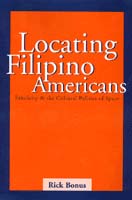 Locating Filipino Americans
Rick Bonus
Temple University Press, 2000 The Filipino American population in the U.S. is expected to reach more than two million by the next century. Yet many Filipino Americans contend that years of formal and covert exclusion from mainstream political, social, and economic institutions on the basis of their race have perpetuated racist stereotypes about them, ignored their colonial and immigration history, and prevented them from becoming fully recognized citizens of the nation. Locating Filipino Americans shows how Filipino Americans counter exclusion by actively engaging in alternative practices of community building.
Locating Filipino Americans, an ethnographic study of Filipino American communities in Los Angeles and San Diego, present a multi-disciplinary cultural analysis of the relationship between ethnic identity and social space. Author Rick Bonus argues that alternative community spaces enable Filipino Americans to respond to and resist the ways in which the larger society has historically and institutionally rendered them invisible, silenced, and racialized. Bonus focuses on the "Oriental" stores, the social halls and community centers, and the community newspapers to demonstrate how ethnic identities are publicly constituted and communities are transformed. Delineating the spaces formed by diasporic consciousness, Bonus shows how community members appropriate elements from their former homeland and from their new settlements in ways defined by their critical stances against racism, homogenization, complete assimilation, and exclusionary citizenship. Locating Filipino Americans is one of the few books that offers a grounded approach to theoretical analyses of ethnicity and contemporary culture in the U.S.
 Locating the Audience: How People Found Value in National Theatre Wales
Kirsty Sedgman
Intellect Books, 2016 How do audiences experience live performances? What is gained when a national theater is born? These questions and more are the subject of Locating the Audience—the first in-depth study of how people form relationships with a new theater company. Investigating the inaugural season of National Theatre Wales, Kirsty Sedgman explores how different people felt about the way their communities were engaged and their places “performed” by the theater’s productions. Mapping the complex interplay between audience experience and identity, the book presents a significant contribution to our contemporary project of defining cultural value. Rather than understanding value as an end point—“impact”—Sedgman makes the provocative claim that cultural value can better be understood as a process. By talking to audiences and capturing pleasures and disappointments, Locating the Audience shows the meaning-making process in action.
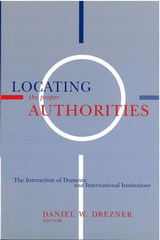 Locating the Proper Authorities: The Interaction of Domestic and International Institutions
Daniel W. Drezner, Editor
University of Michigan Press, 2002 In an era of democratization and globalization, the number of decision makers has multiplied exponentially. Parliamentarians, bureaucrats, international secretariats, regional governors, and nongovernmental organizations have all gained influence at the expense of heads of state. How do these competing layers of authority bargain with each other to govern? International relations theorists have traditionally focused on how leaders' domestic constraints affect their bargaining position internationally. However, there has been much less work on the flip side of this question--how foreign policy leaders can use international institutions as a means of circumventing or co-opting domestic opposition. Locating the Proper Authorities offers some preliminary answers, drawn from a number of theoretical perspectives by the contributors to this volume.
Written by some of the most promising theorists in the field of international relations, the essays in Locating the Proper Authorities address a broad array of substantive issue areas, including humanitarian intervention, trade dispute settlement, economic development, democratic transition, and security cooperation. This broad case selection has the virtue of incorporating developing countries, which are too often ignored in international relations, as well as less well-known international organizations. Each chapter examines the mechanisms and strategies through which policy entrepreneurs use international organizations as a means of bypassing or overcoming opposition to policy change. By examining the effects of different institutional design features, Locating the Proper Authorities helps us understand the variety of influence mechanisms through which international institutions shape the interaction of policy initiators and ratifiers.
Daniel W. Drezner is Assistant Professor of Political Science, University of Chicago.
Location and Personalisation: Delivering online and mobility services
Daniel Ralph
The Institution of Engineering and Technology, 2004 The world is charging towards the new network technologies of broadband and 3G, and new application technologies face the challenge of where they can be used. This book takes a pragmatic look at two particular application technologies - location and personalisation - and presents an understanding of the technical and business impact of these technologies. With a combination of overview papers, detailed technical case studies and a deep understanding of actual implementatio of these services within a telecommunications environment, this book will help those wishing to deliver improved services based on these capabilities. Other key topics covered include CRM and content management.
 Location Theory and the Shoe and Leather Industries
Edgar M. Hoover, Jr.
Harvard University Press Using the shoe and leather industries as specific examples, Edgar Hoover here sets up a useful body of principles for the understanding of the location theory of economic activities, a theory that is basic to any analysis of problems of economic geography, with applications extending into the fields of transport and trade, labor policies, migration and resettlement, land economics, and city and regional planning. After a section devoted to a presentation of the theoretical framework of principles, he deals at length with the history of the location of the tanning and shoe-making industries in the United States. In his final chapters he discusses historical trends in location and gives a survey of certain directions in which locational theory should be developed in order to contribute to our understanding of monopolistic competition and to serve as a much-needed basis for the appraisal of policies involving control over the location of industries and people.
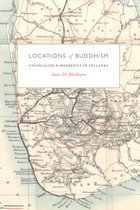 Locations of Buddhism: Colonialism and Modernity in Sri Lanka
Anne M. Blackburn
University of Chicago Press, 2010 Modernizing and colonizing forces brought nineteenth-century Sri Lankan Buddhists both challenges and opportunities. How did Buddhists deal with social and economic change; new forms of political, religious, and educational discourse; and Christianity? And how did Sri Lankan Buddhists, collaborating with other Asian Buddhists, respond to colonial rule? To answer these questions, Anne M. Blackburn focuses on the life of leading monk and educator Hikkaduve Sumangala (1827–1911) to examine more broadly Buddhist life under foreign rule. In Locations of Buddhism, Blackburn reveals that during Sri Lanka’s crucial decades of deepening colonial control and modernization, there was a surprising stability in the central religious activities of Hikkaduve and the Buddhists among whom he worked. At the same time, they developed new institutions and forms of association, drawing on pre-colonial intellectual heritage as well as colonial-period technologies and discourse. Advocating a new way of studying the impact of colonialism on colonized societies, Blackburn is particularly attuned here to human experience, paying attention to the habits of thought and modes of affiliation that characterized individuals and smaller scale groups. Locations of Buddhism is a wholly original contribution to the study of Sri Lanka and the history of Buddhism more generally.
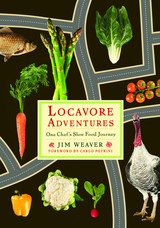 Locavore Adventures: One Chef's Slow Food Journey
Weaver, Jim
Rutgers University Press, 2012 America’s fast food culture reflects not only what we eat—foods that are processed and packaged for convenience—but also how we eat—munching as we multitask and not really tasting the super-sized meals we ingest. But in recent years, a more thoughtful philosophy about food has emerged. Developed in Italy, where fresh ingredients and artisanal techniques are prized, the Slow Food movement has rapidly gained a following in North America. The skeptics among us might wonder if it is possible truly to enjoy a Slow Food lifestyle—one based around local, seasonal ingredients—in our fast-paced world. In Locavore Adventures, acclaimed New Jersey chef and restaurateur Jim Weaver shares his personal story of how he came to solve this problem—building a local slow food culture that is ecologically responsible and also yields delicious results. Weaver tells of his odyssey founding the Central New Jersey chapter of Slow Food, connecting local farmers, food producers, and chefs with the public to forge communities that value the region’s unique bounty. More than forty recipes throughout the book, from Hot Smoked Brook Trout with Asparagus Puree and Pickled Cippollini Onions to Zuppa di Mozzarella, will inspire readers to be creative in their own kitchens. Locavore Adventures is a thoughtful memoir about growing a sustainable food culture and a guide to slowing down, savoring locally grown food, and celebrating life.
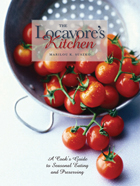 The Locavore’s Kitchen: A Cook’s Guide to Seasonal Eating and Preserving
Marilou K. Suszko
Ohio University Press, 2011 More and more Americans are becoming dedicated locavores, people who prefer to eat locally grown or produced foods and who enjoy the distinctive flavors only a local harvest can deliver. The Locavore’s Kitchen invites readers to savor homegrown foods that come from the garden, the farm stand down the road, or local farmers’ markets through cooking and preserving the freshest ingredients. In more than 150 recipes that highlight seasonal flavors, Marilou K. Suszko inspires cooks to keep local flavors in the kitchen year round. From asparagus in the spring to pumpkins in the fall, Suszko helps readers learn what to look for when buying seasonal homegrown or locally grown foods as well as how to store fresh foods, and which cooking methods bring out fresh flavors and colors. Suszko shares tips and techniques for extending seasonal flavors with detailed instructions on canning, freezing, and dehydrating and which methods work best for preserving texture and flavor. The Locavore’s Kitchen is an invaluable reference for discovering the delicious world of fresh, local, and seasonal foods.
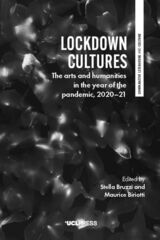 Lockdown Cultures: The Arts and Humanities in the Year of the Pandemic, 2020–21
Edited by Stella Bruzzi and Maurice Biriotti Biriotti
University College London, 2022 How the pandemic has changed and reinvigorated the arts and humanities.
Lockdown Cultures is both a cultural response to our extraordinary times and a manifesto for the arts and humanities and their role in our post-pandemic society. This book offers a unique response to the question of how the humanities have responded to the dominant crisis of our times: the Covid-19 pandemic. While the roles of engineers, epidemiologists, and, of course, medics are assumed, this volume illustrates some of how the humanities understood and analyzed 2020–21, the year of lockdown and plague. Though the impulse behind the book was topical, underpinning the richly varied and individual essays is a lasting concern with the value of the humanities in the twenty-first century. Each contributor approaches this differently but there are two dominant strands: how art and culture can help us understand the Covid crisis; and how the value of the humanities can be demonstrated by engaging with cultural products from the past. The result is a book that serves as a testament to the humanities’ reinvigorated and reforged sense of identity. It bears witness to a globally impactful event while showcasing interdisciplinary thinking and examining how the pandemic has changed how we read, watch, write and educate. More than thirty individual contributions collectively reassert the importance of the arts and humanities for contemporary society.
Locked In and Out
Priya Basil
Diaphanes, 2025 A reflection on the reconstruction of the Berlin Palace and its contradictory use as an ethnological museum.
Having recently accepted German citizenship, writer and activist Priya Basil explores the Humboldt Forum from a deeply personal perspective. She delves into the question of what such a building, such a project, means for an understanding of the past and for belonging in the present. This much disputed, contested, celebrated monument now exists—but what exactly does it monumentalize? Basil writes, “In German, the word Schloss means a palace, and also a lock. The central question: Can a lock also be a key?”
 Locked Up, Locked Out: Young Men in the Juvenile Justice System
Anne M. Nurse
Vanderbilt University Press, 2010 Locked Up, Locked Out follows forty juvenile male offenders, from their first-time admissions to the Ohio system through their incarceration and reentry into the community. The author conducted three lengthy interviews with each of these youth over a period of two and a half years. These interviews bring alive their attitudes and day-to-day prison experiences, as well as the intricate connections between life on the inside and life on the outside.
Status is key to everyday life in prison, and it is often played out in demonstrations of masculinity, misogyny, and violence. Some gangs and some "area codes" (as the old neighborhoods are called) are seen as tougher than others and are given more respect. Even letters from family members and girlfriends are important signs of whether a prisoner matters: one young man says, "I'd write letters every day to people to beg 'em to write me back." Another reports, "There would be people in there writing girls, saying, hey, write me this nasty letter of things we're going to do and things we did. And they'd write back with these letters. And now he'll get to walk around with his letter bragging, like, hey, check this out. These are the kind of girls I got."
Incarcerated youth also work hard at impression management. Coping with prison requires a young man to present one face to fellow prisoners and another to the authorities who will decide his release date.
The author pays substantial attention to the programs youth are offered, including those focusing on education, anger management, job training, and parenting skills. Another section looks at contact between incarcerated youth and the outside world, including a discussion of the impact of incarceration on families.
Based on her extensive knowledge of policies in other states, the author also provides a broad overview of the juvenile justice system nationally, describing how the system is organized, administered, and funded. Readers are taken through the juvenile justice process from conviction through parole with special attention paid to new state initiatives and sentencing structures.
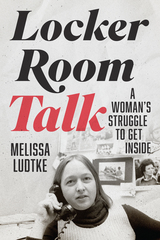 Locker Room Talk: A Woman’s Struggle to Get Inside
Melissa Ludtke
Rutgers University Press, 2024 While sportswriters rushed into Major League Baseball locker rooms to talk with players, MLB Commissioner Bowie Kuhn barred the lone woman from entering along with them. That reporter, 26-year-old Sports Illustrated reporter Melissa Ludtke, charged Kuhn with gender discrimination, and after the lawyers argued Ludtke v. Kuhn in federal court, she won. Her 1978 groundbreaking case affirmed her equal rights, and the judge’s order opened the doors for several generations of women to be hired in sports media.
Locker Room Talk is Ludtke’s gripping account of being at the core of this globally covered case that churned up ugly prejudices about the place of women in sports. Kuhn claimed that allowing women into locker rooms would violate his players’ “sexual privacy.” Late-night television comedy sketches mocked her, as newspaper cartoonists portrayed her as a sexy, buxom looker who wanted to ogle the naked athletes’ bodies. She weaves these public perspectives throughout her vivid depiction of the court drama overseen by Judge Constance Baker Motley, the first Black woman to serve on the federal bench. She recounts how her lawyer, F.A.O. “Fritz” Schwarz, employed an ingenious legal strategy that persuaded Judge Motley to invoke the Fourteenth Amendment’s Equal Protection Clause in giving Ludtke access identical to that of her male counterparts. Locker Room Talk is both an inspiring story of one woman’s determination to do a job dominated by men and an illuminating portrait of a defining moment for women’s rights.
 The Lockmaster
Christoph Ransmayr
Seagull Books, 2024 A suspenseful novel that delves into the complexities of a father-son relationship and the timeless themes of guilt and forgiveness.
A longboat plummets over the Great Falls, drowning the five passengers on board. The Lockmaster, the heir to an ancient title and responsible for guiding river traffic safely around this natural barrier on the White River, ought to have prevented this tragedy. His son is convinced that it was not an accident. Is his irascible father a murderer? A hydraulic engineer all too familiar with the brute force of rivers, he sets out to discover the truth and find his missing father.
The Lockmaster is a dramatic tale set in a world where water has become a precious commodity and Europe has fractured into warring ethno-nationalist entities desperate to uphold the traditions and insignia of a so-called glorious bygone era. Christoph Ransmayr recounts this story in his trademark style, its epic force shot through with visions of future technology and reactionary politics amid a climate breakdown. At heart, though, this novel is the story of a father–son relationship straddling the fault lines between past and present, and an exploration of timeless questions of guilt and forgiveness.
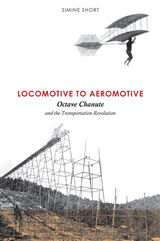 Locomotive to Aeromotive: Octave Chanute and the Transportation Revolution
Simine Short. Foreword by Tom D. Crouch
University of Illinois Press, 2014 French-born and self-trained civil engineer Octave Chanute designed America's two largest stockyards, created innovative and influential structures such as the Kansas City Bridge over the previously "unbridgeable" Missouri River, and was a passionate aviation pioneer whose collaborative approach to aeronautical engineering problems encouraged other experimenters, including the Wright brothers. Drawing on rich archival material and exclusive family sources, Locomotive to Aeromotive is the first detailed examination of Chanute's life and his immeasurable contributions to engineering and transportation, from the ground transportation revolution of the mid-nineteenth century to the early days of aviation. Aviation researcher and historian Simine Short brings to light in colorful detail many previously overlooked facets of Chanute's professional and personal life. In the late nineteenth century, few considered engineering as a profession on par with law or medicine, but Chanute devoted much time and energy to the newly established professional societies that were created to set standards and serve the needs of civil engineers. Though best known for his aviation work, he became a key figure in the opening of the American continent by laying railroad tracks and building bridges, experiences that later gave him the engineering knowledge to build the first stable aircraft structure. Chanute also introduced a procedure to treat wooden railroad ties with an antiseptic that increased the wood’s lifespan in the tracks. Establishing the first commercial plants, he convinced railroad men that it was commercially feasible to make money by spending money on treating ties to conserve natural resources. He next introduced the date nail to help track the age and longevity of railroad ties. A versatile engineer, Chanute was known as a kind and generous colleague during his career. Using correspondence and other materials not previously available to scholars and biographers, Short covers Chanute's formative years in antebellum America as well as his experiences traveling from New Orleans to New York, his apprenticeship on the Hudson River Railroad, and his early engineering successes. His multiple contributions to railway expansion, bridge building, and wood preservation established his reputation as one of the nation's most successful and distinguished civil engineers. Instead of retiring, he utilized his experiences and knowledge as a bridge builder in the development of motorless flight. Through the reflections of other engineers, scientists, and pioneers in various fields who knew him, Short characterizes Chanute as a man who believed in fostering and supporting people who were willing to learn. This well-researched biography cements Chanute's place as a preeminent engineer and mentor in the history of transportation in the United States and the development of the airplane.
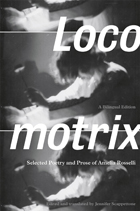 Locomotrix: Selected Poetry and Prose of Amelia Rosselli, a Bilingual Edition
Amelia Rosselli
University of Chicago Press, 2012 A musician, musicologist, and self-defined “poet of research,” Amelia Rosselli (1930–96) was one of the most important poets to emerge from Europe in the aftermath of World War II. Following a childhood and adolescence spent in exile from Fascist Italy between France, England, and the United States, Rosselli was driven to express the hopes and devastations of the postwar epoch through her demanding and defamiliarizing lines. Rosselli’s trilingual body of work synthesizes a hybrid literary heritage stretching from Dante and the troubadours through Ezra Pound and John Berryman, in which playful inventions across Italian, English, and French coexist with unadorned social critique. In a period dominated by the confessional mode, Rosselli aspired to compose stanzas characterized by a new objectivity and collective orientation, “where the I is the public, where the I is things, where the I is the things that happen.” Having chosen Italy as an “ideal fatherland,” Rosselli wrote searching and often discomposing verse that redefined the domain of Italian poetics and, in the process, irrevocably changed the Italian language.
This collection, the first to bring together a generous selection of her poems and prose in English and in translation, is enhanced by an extensive critical introduction and notes by translator Jennifer Scappettone. Equipping readers with the context for better apprehending Rosselli’s experimental approach to language, Locomotrix seeks to introduce English-language readers to the extraordinary career of this crucial, if still eclipsed, voice of the twentieth century.
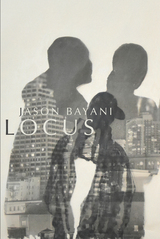 Locus
Jason Bayani
Omnidawn, 2019 Life in a multicultural, multiethnic nation like the United States leads to complicated, sometimes fragmented experiences of our background and identity. In Locus, Jason Bayani’s poetry explores the experience of identity that haunts Pilipinx-Americans in the wake of the 1965 Hart-Celler Immigration Act, a critical moment left out of most histories of Asian-American life in the United States. Bayani’s poetry seeks to recuperate this silenced experience, rendering the loss of memory migration entails and representing the fragments of cultural history that surface in a new national context. Drawing inspiration from the mixing and layering of musical fragments in DJ culture, Locus lays down tracks of memory to create a confident declaration of a distinctly Pilipinx-American voice, history, and artistic power. Indeed, his work reveals how these new creations often tie us to the most fundamental parts of ourselves: our families, our cultures, the vague memories passed down through generations. In Locus, Bayani both renders the challenges of migration and captures an experience of selfhood and history, asserting a central place for migrant identity and experience in American culture.
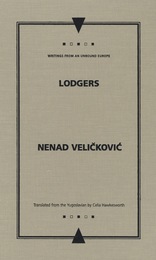 Lodgers
Nenad Velickovic
Northwestern University Press, 2005 A comic novel of war from a teenager's point-of-view
Published as the siege of Sarajevo ended, Lodgers is a hilarious, unsentimental report from the front lines of the Balkan wars of the 1990s. Detergent mixed with flour, museum relics sold to U.N. peacekeepers, the magic power of laminated accreditation-all of the folly and the horror of that time are revealed in the sarcastic report of the novel's teenage would-be authoress.
Maja lives in the basement of a Sarajevo museum, enduring with equal annoyance Serb artillery and vegetarian meals that taste like fried sponge. Her father, the museum director, zealously guards the treasures upstairs while their aged co-lodger Julio plots to trade them away. Maja's mother copes with yoga while dour stepbrother Davor endures the endless crying and cravings of his pregnant wife. Floating amidst it all is Maja's grandmother, blind and deaf, yet drawn to any conversation involving food.
Need and crisis propel Maja and her companions from one humorous situation to another. Yet her pitch-perfect gallows humor makes it clear that the brutalities of war penetrate these small moments of life-and even the self-centeredness of a teenaged girl. A best seller in the Balkans and widely translated in Europe, Lodgers is an uncompromising novel about a modern tragedy.
 The Loeb Classical Library and Its Progeny: Proceedings of the First James Loeb Biennial Conference, Munich and Murnau 18–20 May 2017
Jeffrey Henderson and Richard F. Thomas
Harvard University Press, 2020 James Loeb (1867–1933), one of the great patrons and philanthropists of his time, left many enduring legacies both to America, where he was born and educated, and to his ancestral Germany, where he spent the second half of his life. Organized in celebration of the sesquicentenary of his birth, the James Loeb Biennial Conferences were convened to commemorate his achievements in four areas: the Loeb Classical Library (2017), collection and connoisseurship (2019), psychology and medicine (2021), and music (2023).
The subject of the inaugural conference was the legacy for which Loeb is best known and the only one to which he attached his name—the Loeb Classical Library, and the three series it has inspired: the I Tatti Renaissance Library, the Dumbarton Oaks Medieval Library, and the Murty Classical Library of India. Including discussions by the four General Editors of each Library’s unique history, mission, operations, and challenges, the papers collected in The Loeb Classical Library and Its Progeny also take stock of these series in light of more general themes and questions bearing on translations of “classical” texts and their audiences in a variety of societies past, present, and future.
 A Loeb Classical Library Reader
Loeb Classical Library
Harvard University Press, 2006 A paperback anthology of essential Greek and Latin texts with facing English translations.
“It is ideal reading for bar, bus, bed or beach. Everyone, teacher and taught alike, should have one. It is this year’s must-have present.”—The Journal of Classics Teaching
This selection of lapidary nuggets drawn from thirty-three of antiquity’s major authors includes poetry, dialogue, philosophical writing, history, descriptive reporting, satire, and fiction—giving a glimpse at the wide range of arts and sciences, styles and convictions, of Greco-Roman culture. The selections span twelve centuries, from Homer to Saint Jerome. They are given in two sequences in roughly chronological order, the Greeks first, followed by the Romans. The texts and translations are reproduced as they appear in Loeb volumes; footnotes have been reduced in keeping with the needs of this compact sampling. An index to the passages is at the end.
The Loeb Classical Library is the only existing series that, through original text and facing English translation, gives access to all that is important in Greek and Latin literature. This reader can do no more than represent a small portion of the riches in that treasury.
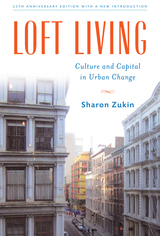 Loft Living: Culture and Capital in Urban Change
Zukin, Sharon
Rutgers University Press, 2014 Since its initial publication, Loft Living has become the classic analysis of the emergence of artists as a force of gentrification and the related rise of “creative city” policies around the world. This 25th anniversary edition, with a new introduction, illustrates how loft living has spread around the world and that artists’ districts—trailing the success of SoHo in New York—have become a global tourist attraction. Sharon Zukin reveals the economic shifts and cultural transformations that brought widespread attention to artists as lifestyle models and agents of urban change, and explains their role in attracting investors and developers to the derelict loft districts where they made their home.
Prescient and dramatic, Loft Living shows how a declining downtown Manhattan became a popular “scene,” how loft apartments became hot commodities for the middle class, and how investors, corporations, and rich elites profited from deindustrializing the city’s factory districts and turning them into trendy venues for art galleries, artisanal restaurants, and bars. However, this edition points out that the artists who led the trend are now priced out of the loft market. Even in New York, where the loft living market was born, artists have no legal claim on loft districts, nor do they get any preferential treatment in the harsh real estate market.
From the story of SoHo in Lower Manhattan to SoWa in Boston and SoMa in San Francisco, Zukin explains how once-edgy districts are transformed into high-price neighborhoods, and how no city can restrain the juggernaut of rising property values.
 The Lofts of SoHo: Gentrification, Art, and Industry in New York, 1950–1980
Aaron Shkuda
University of Chicago Press, 2016 A groundbreaking look at the transformation of SoHo.
American cities entered a new phase when, beginning in the 1950s, artists and developers looked upon a decaying industrial zone in Lower Manhattan and saw, not blight, but opportunity: cheap rents, lax regulation, and wide open spaces. Thus, SoHo was born. From 1960 to 1980, residents transformed the industrial neighborhood into an artist district, creating the conditions under which it evolved into an upper-income, gentrified area. Introducing the idea—still potent in city planning today—that art could be harnessed to drive municipal prosperity, SoHo was the forerunner of gentrified districts in cities nationwide, spawning the notion of the creative class.
In The Lofts of SoHo, Aaron Shkuda studies the transition of the district from industrial space to artists’ enclave to affluent residential area, focusing on the legacy of urban renewal in and around SoHo and the growth of artist-led redevelopment. Shkuda explores conflicts between residents and property owners and analyzes the city’s embrace of the once-illegal loft conversion as an urban development strategy. As Shkuda explains, artists eventually lost control of SoHo’s development, but over several decades they nonetheless forced scholars, policymakers, and the general public to take them seriously as critical actors in the twentieth-century American city.
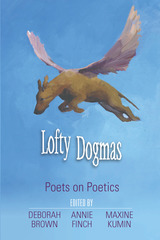 Lofty Dogmas: Poets on Poetics
Deborah Brown
University of Arkansas Press, 2005 Compiled by three noted poets, this is an eclectic, stimulating, and informed selection of poets' remarks on poetry spanning eras, ethnicities, and aesthetics. The 102 selections from nearly as many poets reach back to the Greeks and Romans, then draw on Chaucer, Shakespeare, Sidney, and Milton, on to Shelley, Keats, Coleridge, and Poe, then Hopkins, Yeats, Eliot, Rilke, and Pound, concluding with many of our contemporaries, including Hall, Clifton, Mackey, Kunitz, and Rukeyser. The book is divided into three sections. "Musing" concerns issues of inspiration, "Making," issues of craft, from diction to meter to persona and voice, and "Mapping," the role of poetry and the poet. Headnotes at the beginning of each selection provide background information about the poet and commentary on the significance of the selection. There is also a useful appendix with a listing of essays arranged according to more specific topics. As the poets write in their introduction: "This book was intended to deepen readers' understanding of age-old poetic ideas while at the same time pointing out new directions for thinking about poetry, juxtaposing the familiar and the strange, reconfiguring old boundaries, and shaking up stereotypes."
 Log Construction: In The Ohio Country, 1750-1850
Donald A. Hutslar
Ohio University Press, 1992 Log construction entered the Ohio territory with the seventeenth-century fur traders and mid-eighteenth-century squatters and then spread throughout most of the area after the opening of the territory in the 1780s. Scottish-Irish and German settlers, using techniques from the eastern states and European homelands, found the abundant timber resources of the Ohio country ideally suited to this simple, durable form of construction. Hutslar documents this early architecture with extensive descriptive materials from local histories, diaries, traveller’s accounts, building contracts and many recent site photographs. These descriptions will be interesting for modern craftsmen and other builders involved in historic restoration or log construction generally.
Hutslar’s extensive fieldwork is valuable to students of vernacular architecture and preservationists and this abridged paperback edition of his book is a boon to travelling or local history buffs who can refer to this wealth of information at their leisure.
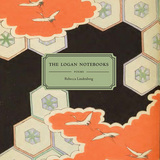 The Logan Notebooks
Rebecca Lindenberg
University Press of Colorado, 2014 Published by the Center for Literary Publishing at Colorado State University Mountain West Poetry Series
“These poems are intent on calling out the migratory beauty of this world, in a neighbor-voice: friendly, from the yard nearby, pointing out stuff we might not have noticed. They frequently employ that most ancient of forms, the list, to show us what we shine a light on, what we look past, what we reflect, what we miss. In that way, they speak like the meadowlark who says, See you! See you! These poems are for when we shall no longer fear the ecstatic, because we’ll know that ecstasy too is quotidian, as daily as a meadowlark’s shopping list.”
—Eleni Sikelianos “In her second collection, Rebecca Lindenberg turns her scrutiny to the American West without forgetting the many layers of sediment and memory there and in other elsewheres. From grocery stores in Utah to a synagogue in Rome to cloud-gazing everywhere, in poems at turns laconic and lush, wistful and wry, Lindenberg shows how beauty and absurdity can and will persist—even, or especially—in the loss of our multiple loves and multiple selves.” —Tarfia Faizullah “Recursive and elliptical, the poems in Rebecca Lindenberg’s The Logan Notebooks are as difficult to depict as they are to forget. Like clouds (themselves, so omnipresent and imperative that Lindenberg confronts them on the first page), these poems shift, then settle into shape, then shift once again. More usual iterations of poetry give way to paragraphs of unimpeachable prose, itemized narratives in which whole, epic plots are cached. Lists run left to right as if they actually listed, like boats off-ballast or stand-alone willows in windstorms. Catalogues are first climactic then cathartic. What she does not write, she has somehow written. Aphorisms become offerings. Almost every line is a sutra. If ‘anyone who feels they have to lie’ is a thing that has lost its power, then Rebecca Lindenberg need not worry. Neither these poems nor the poet who conceives them flinches at gut-punch truth.”
—Jill Alexander Essbaum “The American West, in its mythical and real-time complexity, is ‘itched out of reverie’ and ‘brought into the deep groove of the present’ in Rebecca Lindenberg’s The Logan Notebooks. The grotesquerie of capitalism hangs in the background, sometimes the foreground, but her lines don’t flinch as they ‘attend to these/details that might later/divert you.’ Above all this is a book about relationships—to a beloved, a family, a landscape, a country, and language itself. ‘Somewhere between the sayable and the unsayable,’ Lindenberg’s poems startle life from a fractured world. The Logan Notebooks is a balm and an anomaly.” —Joseph Massey Clouds, mountains, flowering trees. Difficult things. Things lost by being photographed. Things that have lost their power. Things found in a rural grocery store. These are some of the lists, poems, prose poems, and lyric anecdotes compiled in The Logan Notebooks, a remix and a reimagining of The Pillow Book of Sei Shonagon, a collection of intimate and imaginative observations about place—a real place, an interior landscape—and identity, at the intersection of the human with the world, and the language we have (and do not yet have) for perceiving it.
Logic and Automata: History and Perspectives
Edited by Jörg Flum, Erich Grädel, and Thomas Wilke
Amsterdam University Press, 2008
Mathematical logic and automata theory are two scientific disciplines with a fundamentally close relationship. The authors of Logic and Automata take the occasion of the sixtieth birthday of Wolfgang Thomas to present a tour d’horizon of automata theory and logic. The twenty papers in this volume cover many different facets of logic and automata theory, emphasizing the connections to other disciplines such as games, algorithms, and semigroup theory, as well as discussing current challenges in the field.
Logic and Philosophy: An Integrated Introduction
William H. Brenner
University of Notre Dame Press, 1993 The dual purpose of this volume—to provide a distinctively philosophical introduction to logic, as well as a logic-oriented approach to philosophy—makes this book a unique and worthwhile primary text for logic and/or philosophy courses. Logic and Philosophy covers a variety of elementary formal and informal types of reasoning, including a chapter on traditional logic that culminates in a treatment of Aristotle's philosophy of science; a truth-functional logic chapter that examines Wittgenstein's philosophy of language, logic, and mysticism; and sections on induction, analogy, and fallacies that incorporate material on mind-body dualism, pseudoscience, the "raven paradox," and proofs of God.
Logic and Pragmatism: Selected Essays by Giovanni Vailati
Claudia Arrighi, Paola Cantu, Mauro de Zan, and Patrick Suppes
CSLI, 2009 Logic and Pragmatism features a number of the key writings of Giovanni Vailati (1863–1909), the Italian mathematician and philosopher renowned for his work in mechanics, geometry, logic, and epistemology. The selections in this book—many of which are available here for the first time in English—focus on Vailati’s significant contributions to the field of pragmatism. Accompanying these pieces are introductory essays by the volume’s editors that outline the traits of Vailati’s pragmatism and provide insights into the scholar’s life.
 Logic and Representation
Robert C. Moore
CSLI, 1993 Logic and Representation brings together a collection of essays, written over a period of ten years, that apply formal logic and the notion of explicit representation of knowledge to a variety of problems in artificial intelligence, natural language semantics, and the philosophy of mind and language. Particular attention is paid to modeling and reasoning about knowledge and belief, including reasoning about one's own beliefs, and the semantics of sentences about knowledge and belief.
Robert C. Moore begins by exploring the role of logic in artificial intelligence, considering logic as an analytical tool., as a basis for reasoning systems, and as a programming language. He then looks at various logical analyses of propositional attitudes, including possible-world models, syntactic models, and models based on Russellian propositions. Next Moore examines autoepistemic logic, a logic for modeling reasoning about one's own beliefs. Rounding out the volume is a section on the semantics of natural language, including a survey of problems in semantic representation; a detailed study of the relations among events, situations, and adverbs; and a presentation of a unification-based approach to semantic interpretation.
Robert C. Moore is principal scientist of the Artificial Intelligence Center of SRI International.
 Logic and Sin in the Writings of Ludwig Wittgenstein
Philip R. Shields
University of Chicago Press, 1992 Philip R. Shields shows that ethical and religious concerns inform even the most technical writings on logic and language, and that, for Wittgenstein, the need to establish clear limitations is both a logical and an ethical demand. Rather than merely saying specific things about theology and religion, major texts from the Tractatus to the Philosophical Investigations express their fundamentally religious nature by showing that there are powers which bear down upon and sustain us. Shields finds a religious view of the world at the very heart of Wittgenstein's philosophy.
"Shields argues that the appearance throughout Wittgenstein's writings of such concepts as ritual, limit, transgression, a change of will, pride, temptation, and judgment implies a relation between religion and the logical aspects of Wittgenstein's philosophy."—Choice
"Of the many recent books about Wittgenstein, Logic and Sin is one of the very few that are well worth having"—Fergus Kerr, Modern Theology
"What Shields has uncovered in Wittgenstein's religious sensibility is something genuine and profound. . . . Shields has not just written an important book on Wittgenstein but an enlightening work that invites further reflection."—Eric O. Springsted, Cross Currents
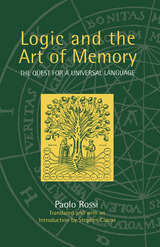 Logic and the Art of Memory: The Quest for a Universal Language
Paolo Rossi
University of Chicago Press, 2001 The mnemonic arts and the idea of a universal language that would capture the essence of all things were originally associated with cryptology, mysticism, and other occult practices. And it is commonly held that these enigmatic efforts were abandoned with the development of formal logic in the seventeenth century and the beginning of the modern era. In his distinguished book, Logic and the Art of Memory Italian philosopher and historian Paolo Rossi argues that this view is belied by an examination of the history of the idea of a universal language.
Based on comprehensive analyses of original texts, Rossi traces the development of this idea from late medieval thinkers such as Ramon Lull through Bruno, Bacon, Descartes, and finally Leibniz in the seventeenth century. The search for a symbolic mode of communication that would be intelligible to everyone was not a mere vestige of magical thinking and occult sciences, but a fundamental component of Renaissance and Enlightenment thought. Seen from this perspective, modern science and combinatorial logic represent not a break from the past but rather its full maturity.
Available for the first time in English, this book (originally titled Clavis Universalis) remains one of the most important contributions to the history of ideas ever written. In addition to his eagerly anticipated translation, Steven Clucas offers a substantial introduction that places this book in the context of other recent works on this fascinating subject. A rich history and valuable sourcebook, Logic and the Art of Memory documents an essential chapter in the development of human reason.
Logic and the Foundations of Game and Decision Theory (LOFT 7)
Edited by Giacomo Bonanno, Wiebe van der Hoek, and Michael Wooldridge
Amsterdam University Press, 2008
This volume is a collects papers originally presented at the 7th Conference on Logic and the Foundations of Game and Decision Theory (LOFT), held at the University of Liverpool in July 2006. LOFT is a key venue for presenting research at the intersection of logic, economics, and computer science, and this collection gives a lively and wide-ranging view of an exciting and rapidly growing area.
 Logic and the Limits of Bankruptcy Law
Thomas H. Jackson
Harvard University Press, 1986 As headlines about cash-rich corporations filing for Chapter 11 are appearing more and more frequently, bankruptcy law has come under sharp public scrutiny. Critics feel that irresponsible corporations and individuals may be using the law unfairly. In this clearly written book, legal scholar Thomas H. Jackson identifies the underlying principles of bankruptcy law and develops an economic/psychological analysis of its main problems—a framework that permits him to view the field as a whole rather than as a collection of disparate policies and historical artifacts.
Dealing first with the use of bankruptcy to adjust creditors’ relations among themselves, Jackson shows that individual creditors will attempt to recover as much of the bankrupt firm’s assets as they can. But to maximize the value of the assets, the creditors must act collectively to apportion them according to the priority of entitlements that existed before the bankruptcy.
This is a claim with sweeping implications, and Jackson not only supports it convincingly but examines in some detail the various consequences of adopting it. He takes up several of the most controversial issues in bankruptcy policy today, including the treatment in bankruptcy of collective labor agreements and the recognition of unmatured tort claims of the kind involved in the Manville bankruptcy. His thoughtful analysis arrives at results that are consistent with his economic framework but that espouse no single political ideology.
Turning then to the right of a financial fresh start for debtors who are not firms but human beings, Jackson thaws on recent ideas in psychology to explain why the right exists and why it cannot be waived.
He thus provides a comprehensive scheme for evaluating the principal features of the existing bankruptcy system and for comparing them with past and future alternatives. The book will be of keen interest not only to the specialist but also to those who want to know more about the institution of bankruptcy and its place in our legal system.
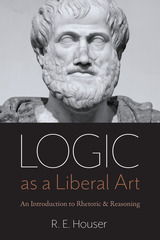 Logic as a Liberal Art: An Introduction to Rhetoric and Reasoning
R. E. Houser
Catholic University of America Press, 2020 In the twenty-first century there are two ways to study logic. The more recent approach is symbolic logic. The history of teaching logic since World War II, however, casts doubt on the idea that symbolic logic is best for a first logic course. Logic as a Liberal Art is designed as part of a minority approach, teaching logic in the "verbal" way, in the student's "natural" language, the approach invented by Aristotle. On utilitarian grounds alone, this "verbal" approach is superior for a first course in logic, for the whole range of students.
For millennia, this "verbal" approach to logic was taught in conjunction with grammar and rhetoric, christened the trivium. The decline in teaching grammar and rhetoric in American secondary schools has led Dr. Rollen Edward Houser to develop this book. The first part treats grammar, rhetoric, and the essential nature of logic. Those teachers who look down upon rhetoric are free, of course, to skip those lessons. The treatment of logic itself follows Aristotle's division of the three acts of the mind (Prior Analytics 1.1). Formal logic is then taken up in Aristotle's order, with Parts on the logic of Terms, Propositions, and Arguments.
The emphasis in Logic as a Liberal Art is on learning logic through doing problems. Consequently, there are more problems in each lesson than would be found, for example, in many textbooks. In addition, a special effort has been made to have easy, medium, and difficult problems in each Problem Set. In this way the problem sets are designed to offer a challenge to all students, from those most in need of a logic course to the very best students.
Logic Colloquium '92
Edited by Lázló Csirmaz, Dov M. Gabbay, and Maarten de Rijke
CSLI, 1995 Logic Colloquium '92, the European Summer Meeting of the Association for Symbolic Logic, was held in Veszpre;m, Hungary, in August 1992. Two of the main themes of the event were algebraic logic, and axiomatisability and decidability of logical systems. The present volume contains a selection of papers that grew out of invited and contributed talks on these themes. Most of the papers have a strong interdisciplinary flavour as they investigate logical properties of formal systems by studying algebraic properties of corresponding classes of algebras, or vice versa. The remaining papers focus on connected areas from model theory and the combination of logics. This is a useful and timely volume on algebraic logic and related areas, with contributions by leading people in the field.
Logic, Convention, and Common Knowledge: A Conventionalist Account of Logic
Paul F. Syverson
CSLI, 2002 One of the fundamental theses of this book is that logical consequence and logical truth are not simply given, but arise as conventions among the users of logic. Thus Syverson explains convention within a game-theoretic framework, as a kind of equilibrium between the strategies of players in a game where they share common knowledge of events—a revisiting of Lewis's Convention that argues that convention can be reasonably treated as coordination equilibria. Most strikingly, a realistic solution is provided for Gray's classic coordination problem, wherein two generals can only communicate with each other through unreliable means.
Logic, Information and Agency
Johan van Benthem
CSLI, 2025 A systematic study of information dynamics that extends beyond what is found in standard logic textbooks.
Everything we do is driven by information, but the dynamic process of acquiring information and adjusting our views based on it has seldom been put at the center place in logic, and there are few textbooks introducing readers to this line of work. The present book introduces the reader to major logical techniques for studying information dynamics and interaction between agents, based on a variety of intuitive scenarios as well as recent research. Readers will learn styles of modeling, as well as the basic features of the new logical systems emanating from this line of work. All the separate strands in the book are brought together in a comprehensive study of information flow and action in games, forming a logic-based complement to standard perspectives in game theory.
Logic, Langage and Computation, Volume 2
Edited by Lawrence S. Moss, Jonathan Ginzburg, and Maarten de Rijke
CSLI, 1999 The fields of logic, linguistics and computer science are intimately related, and modern research has uncovered a wide range of connections. This collection focuses on work that is based on the unifying concept of information. This collection of nineteen papers covers subjects such as channel theory, presupposition and constraints, the modeling of discourse, and belief. They were all presented at the 1996 Conference on Information-Theoretic Approaches to Logic, Language, Information, and Computation.
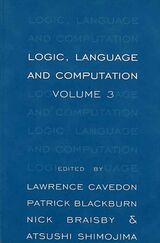 Logic, Language and Computation, Volume 3
Edited by Patrick Blackburn, Nick Braisby, Lawrence Cavedon, and Atsushi Shimoji
CSLI, 2001 With the rise of the internet and the proliferation of technology to gather and organize data, our era has been defined as "the information age." With the prominence of information as a research concept, there has arisen an increasing appreciation of the intertwined nature of fields such as logic, linguistics, and computer science that answer the questions about information and the ways it can be processed. The many research traditions do not agree about the exact nature of information. By bringing together ideas from diverse perspectives, this book presents the emerging consensus about what a conclusive theory of information should be. The book provides an introduction to the topic, work on the underlying ideas, and technical research that pins down the richer notions of information from a mathematical point of view.
The book contains contributions to a general theory of information, while also tackling specific problems from artificial intelligence, formal semantics, cognitive psychology, and the philosophy of mind. There is focus on the dynamics of information flow, and also a consideration of static approaches to information content; both quantitative and qualitative approaches are represented.
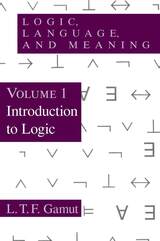 Logic, Language, and Meaning, Volume 1: Introduction to Logic
L. T. F. Gamut
University of Chicago Press, 1990 Although the two volumes of Logic, Language, and Meaning can be used independently of one another, together they provide a comprehensive overview of modern logic as it is used as a tool in the analysis of natural language. Both volumes provide exercises and their solutions.
Volume 1, Introduction to Logic, begins with a historical overview and then offers a thorough introduction to standard propositional and first-order predicate logic. It provides both a syntactic and a semantic approach to inference and validity, and discusses their relationship. Although language and meaning receive special attention, this introduction is also accessible to those with a more general interest in logic.
In addition, the volume contains a survey of such topics as definite descriptions, restricted quantification, second-order logic, and many-valued logic. The pragmatic approach to non-truthconditional and conventional implicatures are also discussed. Finally, the relation between logic and formal syntax is treated, and the notions of rewrite rule, automation, grammatical complexity, and language hierarchy are explained.
|
|




